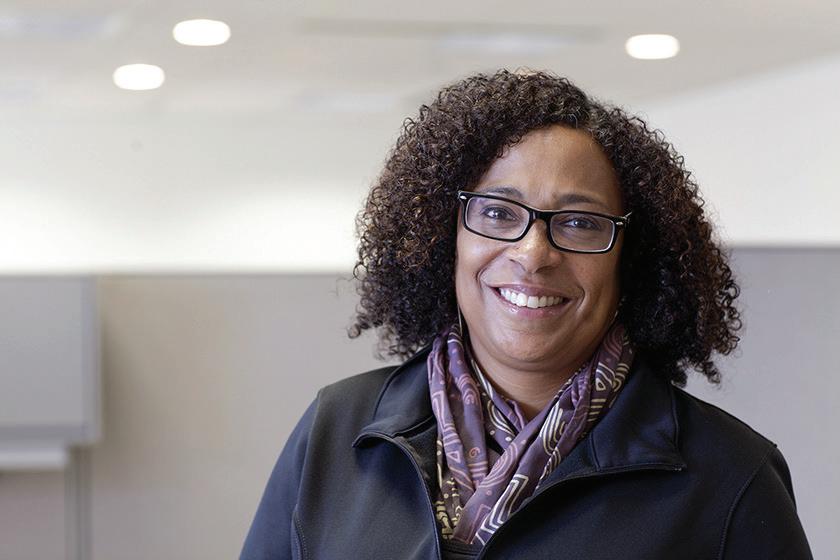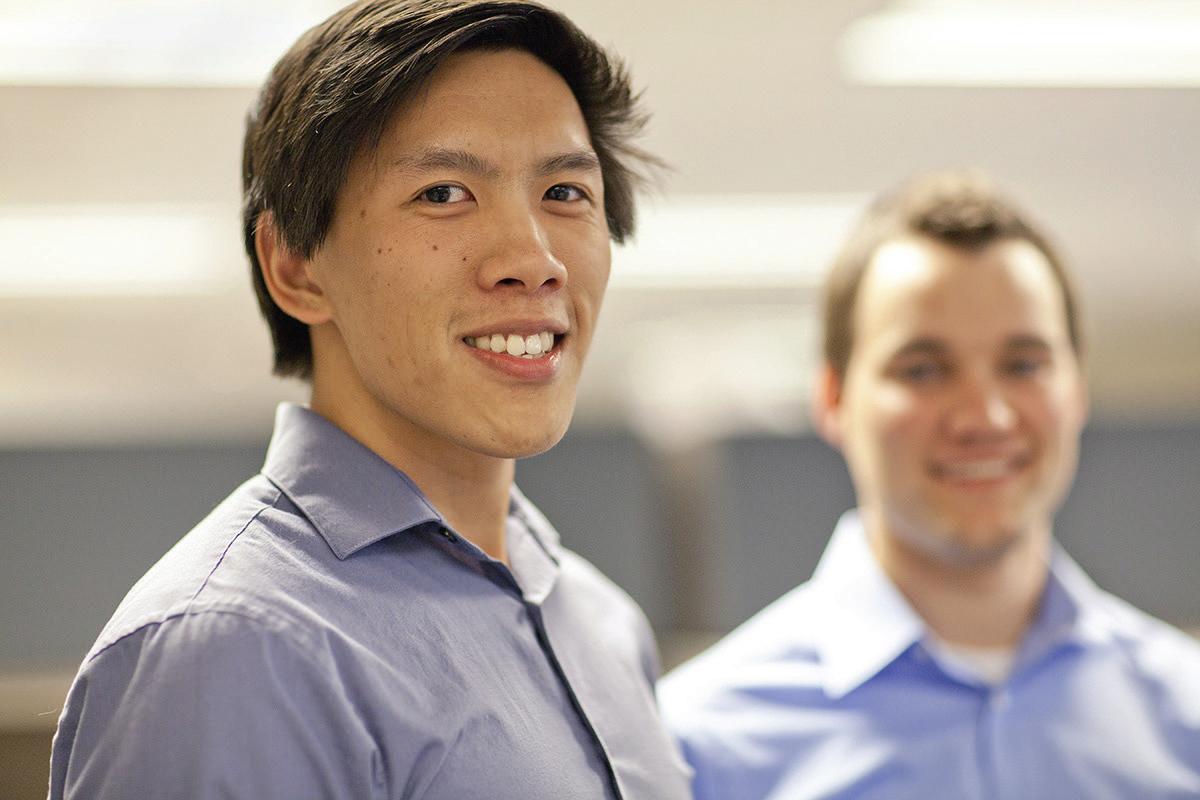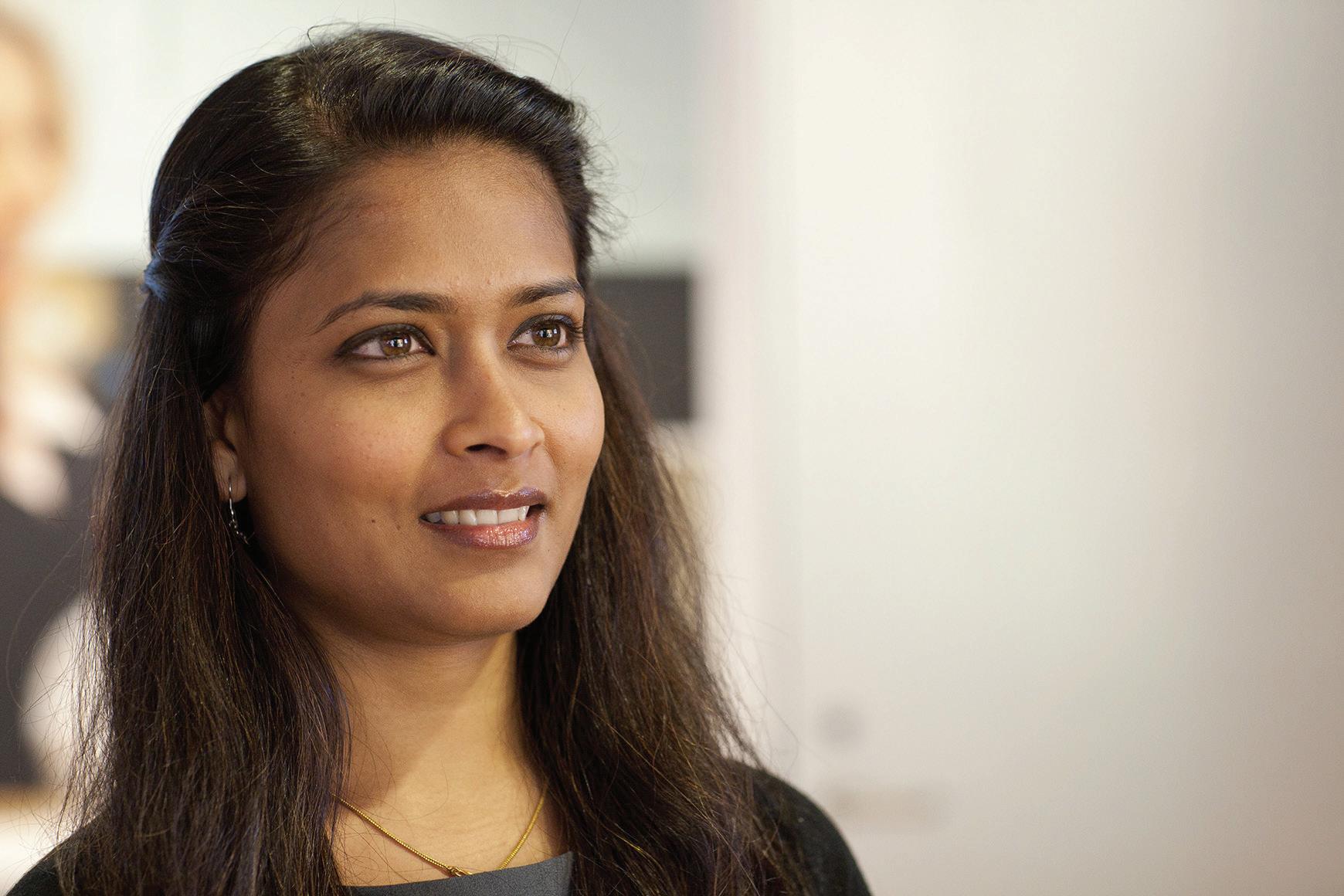

Know
SUPPLIER DIVERSITY PROGRAM


SUPPLIER DIVERSITY = SMART BUSINESS
OUR COMMITMENT TO SUPPLIER DIVERSITY





Hilton is committed to cultivating the economic vitality of the communities in which we conduct our business. We believe that encouraging the growth and development of diverse suppliers will enhance the economic vitality of our communities. Our vision is to forge supplier relationships that reflect the diversity of these communities. Hilton actively engages diverse suppliers, who provide quality products at competitive pricing, and participate in our contracting and subcontracting activities.
Hilton’s commitment is rooted in the belief that by establishing effective business relationships with new and diverse suppliers, we will maintain our leadership role in the global marketplace and create a multitude of benefits for our guests, Team Members, owners, shareholders and the communities in which we live and work.
Partnering with the procurement division, Hilton Supply Management (HSM), which is leading the exciting growth and positive changes in Hilton’s procurement process, the supplier diversity program recognized a major opportunity to embed increase supplier diversity in the fabric of all we do at Hilton.
This new transformation of the business model to better meet our customers’ needs, strengthen relationships, and cultivate robust partnerships will affect us all. Our supplier diversity program is an important aspect of this transformation process, offering the best in class for ensuring supplier diversity in the procurement process.
This transformation provides opportunities for growth to better prepare suppliers for participation in our preferred network. These efforts not only expend business with existing HSM suppliers, but also affords opportunities to new suppliers.
WHO QUALIFIES AS A DIVERSE SUPPLIER?
Inclusion in the Hilton Supplier Diversity program requires companies be owned, operated, and controlled by a member of one of the following ethnic groups – Asian American, African American, Hispanic American, Native American; as well as Women, Veterans, LGBT and Disabled business owned enterprises
Hilton also recognizes diverse suppliers that meet predetermined minimum qualifications and have received certification by recognized councils such as Disability: IN, National LGBT Chamber of Commerce (NGLCC), National Minority Supplier Development Council (NMSDC), National Veterans Owned Business Association (NaVOBA), U.S. Pan Asian American Chamber of Commerce (USPAACC), and the Women’s Business Enterprise National Council (WBENC).
With stories that inform, inspire, and—most importantly— exemplify the possibility of a future of inclusivity, this group of brilliant women were curated to form a beacon of light for all female professionals. P56
LATINAS
LILIANA GIL VALLETTA 58
CARLA MOLINA 64
KARLI HENRIQUEZ 68
MARIA ELENA SALINAS 74
CLAUDIA ROMO EDELMAN 80
CITLALLI ROJAS 86
ZOE SALDANA 90
NATHALIE RAYES 92
NORMA CORDOVA 96
XIMENA JUNCOSA 102
RAQUEL TAMEZ 106
MARIA MARTINEZ 110
ANITA ORTIZ 114
MARJORIE DE LA CRUZ 116
GUEST EDITOR
18 A New Perspective on Healthcare Transparency Physician, US Navy veteran, and Premera Blue Cross’ SVP and chief medical officer, Phil Colmenares offers an empassioned, detailed view on making healthcare performance more visible.
24 Uniting with Competitors for the Greater Good How CVS Health executives Mayra Boitel and Randy Martinez worked to launch the National Hispanic Pharmacists Association—with buy-in from Walmart, Walgreens, and others.
34 Supporting Minority Suppliers, Like Her Father Raised by a business owner, Gladys Lopez knows the impact of supplier-diversity programs. Today, she works with Hilton to help minority-owned businesses navigate the corporate landscape.
132 Building Culture, One Office at a Time Lea Sandoval’s team-focused leadership style created a thriving culture at JLL’s Denver office. Now, she’s working her magic in LA.
His Entrepreneurial Spirit Alexander Reyes left the world of the big four to make an impact at the fast-growing financial firm Citrin Cooperman.

Conversations at the Top: Zoe Saldana
With the 2018 launch of digital-media firm BESE, Saldana aims to diversify the dominant cultural narrative in America. In this candid discussion with Ruben Navarrette, she explains her very personal reasons why.
CREDITS
Dress: Roland Mouret
Shoes: Christian Louboutin
Rings: Misho + Alexandra Jules
Earrings: Cadar
Stylist: Petra Flanney
Makeup: Amy Oresman
Hair: Aviva Perea
Location: La Peer
Hotel Kimpton

A Letter from Our Leading Latina
“There’s
never been a more important time to shout from the rooftops about women’s accomplishments.”
I HAVE HAD THE UNIQUE PRIVILEGE of meeting and learning from a myriad of women that inspire me—personally and professionally. These Latinas give purpose to the work we do at Hispanic Executive, and every day—through their actions and leadership—they are redefining what it means to be a successful Latina in America.
From my eight years with Hispanic Executive, countless moments of inspiration and awe stand out in my head.
Like the time I witnessed Anna Maria Chávez receive a standing ovation at an Alumni Society summit, just one day after having resigned as the CEO of Girl Scouts of America. She told the audience she was jumping “off the ledge” with complete uncertainty on where she would land. Yet, she did not let that fear stop her.
Or the time Rosanna Durruthy, head of global diversity, inclusion, and belonging at LinkedIn, was on a panel of remarkable Latinas working in tech. In one of her responses, she shared her distaste for the word ‘minority’ because, “The last I saw, we were each whole and complete and not less than”—words that have stuck with me to this day. (For more “cringe-worthy” words like Rosanna’s ‘minority’, turn to The Last Word on the last page of this issue.)
And most recently, at our cover shoot in Los Angeles, I was moved to tears as I witnessed our beautiful cover star—actress, activist, and entrepreneur Zoe Saldana— speak passionately and with such conviction about the many injustices being done to our brothers and sisters crossing the border in hopes for a better life. (Watch this interview in our three-part video series with Zoe Saldana on www.hispanicexecutive.com.)
Vianni Busquets VP, Hispanic Division
Guerrero Media
Not listed here are hundreds more moments, great and small, playing out every day in my life and in yours—each reminding us of the power of sisterhood, of shared obstacles, goals, aspirations, and, most importantly, of triumph.
There’s never been a more important time to shout from the rooftops about women’s accomplishments. This issue makes it a point to do just that.
I’m not sure about you, but women’s stories excite me. Every time I see a powerhouse Latina grace our cover, which to date totals twenty-one, it fills me with immense pride and hope for a future filled with extraordinary Latinas who are actively changing the narrative—and face, voice, and perspective—of business leadership.
To quote our guest editor Liliana Gil Valletta, “Some call being Latina a double minority, but it’s actually the reverse. We have double the power.”
I believe this wholeheartedly. I have seen firsthand many different leadership styles, and the ones that inspire me most involve empathy, encouragement, and support— three characteristics that women embody very well. This is the type of leader I aspire to be. I make it a point to be present and available even when I’m traveling, to always review the work being done, and give twice as much positive feedback as I do criticism. And I strive to be open and vulnerable with my colleagues, because I believe this strengthens relationships, and relationships are the threads we weave to create the fabric of our community.
Let me be the first to say to the incredible Latinas featured in this issue and beyond: Thank you for your inspiring stories. Because of you, our fabric is growing stronger every day.
Recommended Inspiration
True leaders are always learning. The Latina leaders featured in this issue weigh in on their most recent or most influential books, podcasts, and films. Here’s what they recommend.

Listen Secrets of Wealthy Women
Wall Street Journal
“On this podcast from the WSJ, host Veronica Dagher does an amazing job interviewing successful women.”
Claudia Romo Edelman
We Are All Human, P80
*Listen to the Jan. 15 episode of Secrets of Wealthy Women, featuring an interview with Claudia Romo Edelman.

Watch Free Solo
Climber Alex Honnold Directors Jimmy Chin, Elizabeth Chai Vasarhelyi
“I could only watch this documentary with one hand in front of my eyes. I couldn’t bear to see Alex Honnold climb a sheer rock face in Yosemite without ropes. But my ten-year-old daughter loves climbing. Seeing her reaction to the movie was energizing. Climbing makes this shy young woman fearless.”
Andrea Guendelman Wallbreakers, P39

Read Factfulness
Hans Rosling
“This is an incredible book about how the world is getting better.”
Claudia Romo Edelman We Are All Human, P80

Listen Code Switch NPR
“I love listening to Code Switch, an NPR podcast that does a deep dive into issues of inclusion. It’s thought-provoking and the hosts are unafraid to tackle difficult topics.”
Anita Ortiz Viacom, P114

Read Becoming Michelle Obama
“I didn’t think I could love her any more, but apparently I was wrong.”
Anita Ortiz Viacom, P114
Follow the Influencer
Photographer Cass Davis shares an afternoon of conversation and collaboration in Miami with social media maven Karli Henriquez.
TEXT & PHOTOS BY CASS DAVIS


Power in Numbers
Shoot far more than you’ll ever use, then edit down to a select few: This process is essential to creating a strong image. How does Karli know when she has the right photo? “If the image captures me at my most natural, that’s when I know we have the shot,” she says. “I love a candid moment! I then curate a solid caption and share it out to the masses. Sharing my journey with my followers is important to me.”



An Unspoken Bond
Creating an image is such a collaborative process between the photographer and the subject. The relationship is built over a short span of time, and that trust is what unlocks the shot. “The person behind the camera has to be someone you can trust with your insecurities,” Karli says.
Know Your Audience, Know Yourself
“When I started posting, I began to understand the formula of my followers—what they wanted to see more of and know more about,” Karli says.
Though she considers the interests of her audience, she makes it a point to remain honest and true to herself. “I’m a career woman—you might expect me to walk in with a suit on, not sneakers,” she says. “It’s a new day, I wear what I feel comfortable in. The Wall Street Journal recently quoted me in an article about scrunchies at the workplace. My quote was, ‘Women can wear whatever they want to the workplace, as long as they get the job done,’ and I still stand by my quote.”





Metaphysical Matters
Upon arriving at this courtyard, Karli immediately connected with certain objects. For example, the agave plant reminded her of her LA home. Including these in her images helps her further connect with her followers. “Do you,” she says. “It’s that easy. Find things that help you feel positive and focused, find your authentic self before creating the image. Ensure your choices continue to say, ‘This is me. If you’d like to get to know me, you can follow me.’”


“This is me.”
With something as simple as a beautiful patch of light, magic is created. Light is an essential element in photography; it’s a form of unspoken poetry. “This is a very reflective image: It’s very honest, it’s me,” Karli says. “This is who I am, take me or leave me. It feels very powerful.”
As a social-media influencer, Karli opens up and shares herself every day. “There’s power in sharing your journey, your failures and victories, in your social channels. I believe it’s the way you control your life’s narrative.”
For more on this Leading Latina, read our exclusive interview on p. 68.
Featured Contributors
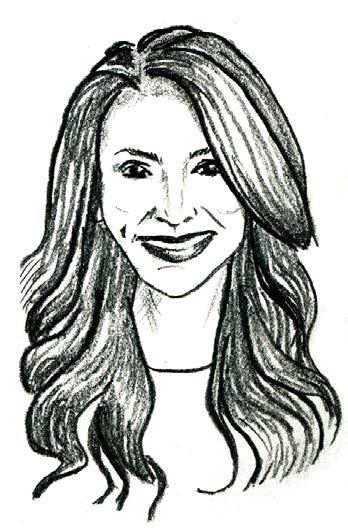
Liliana Gil is an award-winning entrepreneur, recognized cultural intelligence expert, AI tech innovator, and World Economic Forum young global leader. Her firm is globally recognized as a leader in big data analytics and business and marketing strategies to help global corporations successfully turn cultural trends and inclusion into profits. She is a regular TV commentator and the recipient of the 2018 US Hispanic Businessperson of the Year by the US Hispanic Chamber of Commerce. She helms our Leading Latinas section with a must-read letter, on p. 58.
Ruben Navarrette is a syndicated columnist with The Washington Post Writers Group, author of A Darker Shade of Crimson: Odyssey of a Harvard Chicano, and host of the podcast Navarrette Nation. Read his new interview series, Conversations at the Top, on p. 46.
Creative
VP, Creative
Kevin Beauseigneur
Director, Creative
Cyndi Fecher
Managing Editor
Kathy Kantorski
Digital Content Manager
Frannie Sprouls
Contributors
Abhinanda Datta, Ruth E. Dávila, Lori Fredrickson, Joseph Kay, Russ Klettke, Kathryn Kruse, Kelli Lawrence, David Levine, Lior Phillips, Rebecca Roberts, Rhiannon Root, Paul Snyder, Arianna Stern, Jacob Winchester, Stephanie Zeilenga
Senior Designer
Anna Jo Beck
Photo Editors & Staff Photographers
Cass Davis
Gillian Fry
Industry Partners

Corporate
CEO
Pedro A. Guerrero
Managing Vice President
Marc Jerbi
VP, Hispanic Division
Vianni Busquets
Senior Director, Finance
David Martinez
Director, Client Services
Cheyenne Eiswald
Senior Client Services Managers
Rebekah Pappas
Katie Richards
Director, Talent Acquisition
Elyse Schultz
Director, HR & Operations
Megan Thorp
Executive Assistant to the CEO
Jaclyn Gaughan
Senior Directors, Sales
Sarah Jameson
Ben Julia
Director, Sales
Jane Haglund
Rachel Miller
Associate Director, Strategic Development
Hispanic Executive® is a registered trademark of Guerrero, LLC.
©2019 Guerrero, LLC. guerreromedia.com 825 W. Chicago Ave. Chicago, IL 60642
Reprints
Reprinting of articles is prohibited without permission of Guerrero, LLC. Printed in China. For reprint information, contact Reprints & Circulation Director Stacy Kraft at stacy@guerreromedia.com.
Kara Thomas
Director, Strategic Partnerships
Krista Horbenko
Vice President, Business Development
Kyle Evangelista
Director, Business Development
Jenny Vetokhin
Business Development Managers
Erin Malone
Elif Negiz
Strategic Account Manager
Taylor Les
Content & Advertising Managers
James Ainscough, Allyssa Bujdoso, Capri Cutchin, Norman Edwards, Gaby Garcia, Nicole Haas
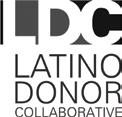
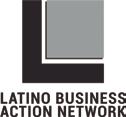
MIS SION Mission
When one’s work makes an impact in the community, it transcends employment and becomes a calling. These executives have answered their call.
18 Phil Colmenares, Premera Blue Cross
24 Randy Martinez and Mayra Boitel, CVS Health
29 Andrés González, Froedtert & The Medical College of Wisconsin
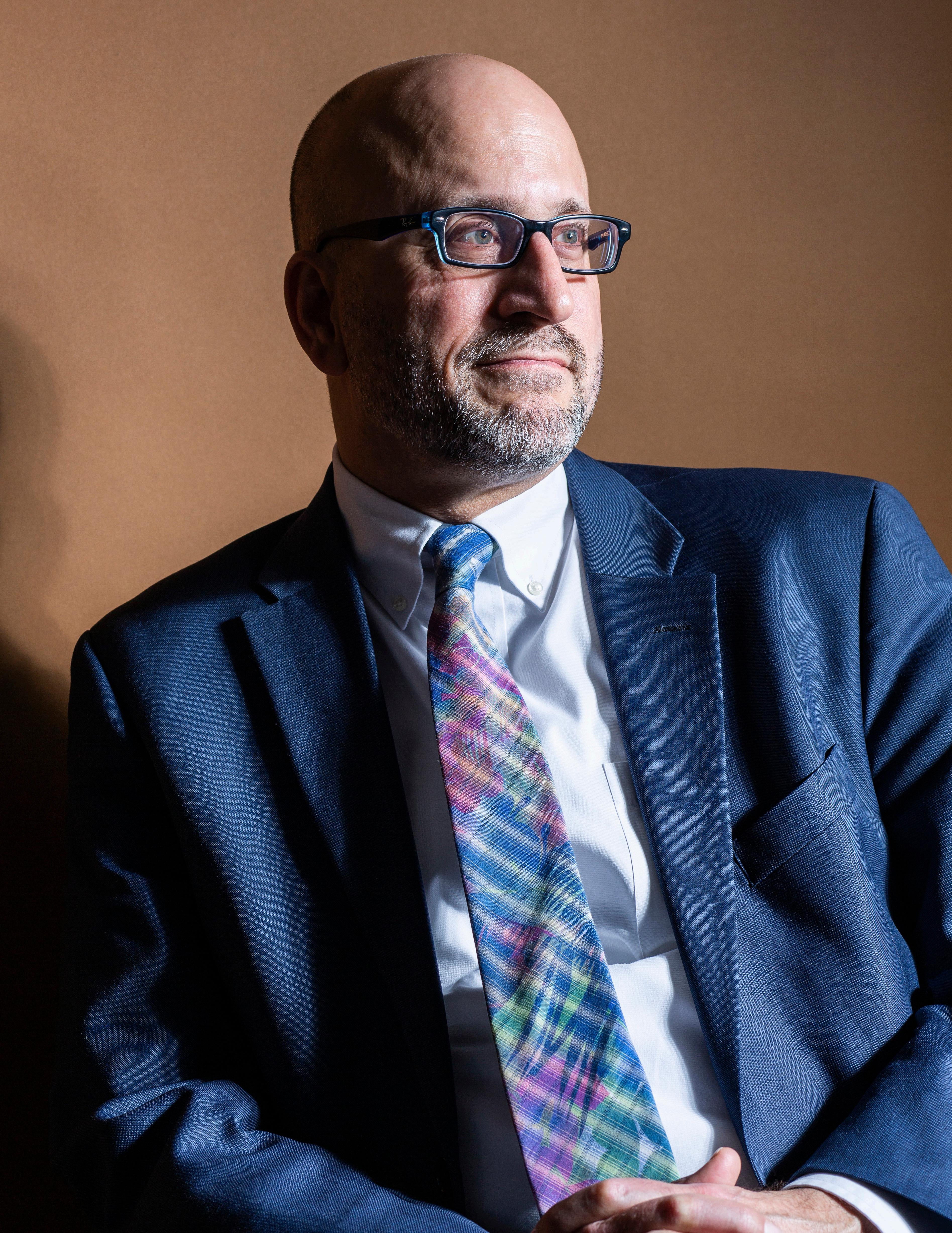
“Healthcare transparency means making performance more visible.”
Embodying multiple cultures and multiple roles, Phil Colmenares, MD, MPH, is a melting pot of perspectives about healthcare. Here, he discusses his mission-driven work with Premera Blue Cross to increase healthcare transparency.
INTERVIEW BY DAVID LEVINE PORTRAITS BY CASS DAVIS
A FIRST-GENERATION HISPANIC AMERICAN, PHIL COLMENARES grew up dividing his time between Reading, Pennsylvania, and Colombia, his parents’ native country, where he spent every summer and three school years. “As a young kid, it was a constant challenge to try to make sense of what seemed like two strikingly different worlds,” he says. “This made a big impression on me as I grew up, and I incorporated it as much as possible into my educational approach. Foreign ways of doing things became less threatening to me, and instead became essential inputs for gaining a comprehensive understanding of things.”
Colmenares’ experience reinforces his unique perspective on healthcare. He is both a board-certified emergency physician and a retired US Navy veteran. As senior vice president and chief medical officer of Premera Blue Cross, a leading health plan in the Pacific Northwest, he advocates for greater healthcare transparency.
Here, he describes his perspective and tells us why these issues are so important to him.
What do you think of when you speak of healthcare transparency? In general, I tend to think of two types of healthcare transparency. One type, popular now, is focused on increasing healthcare consumerism. It’s about making cost and quality variation visible to patients or consumers. But there is another type of healthcare transparency that relates to making healthcare performance more visible.
At Premera we are committed to making cost and quality variation more visible. We believe in continuing to work toward giving health plan members the tools to comparison shop just as they do with every other consumer good. For example, let’s say you need a knee replacement. Today, you might ask your primary-care doctor for a referral or ask a friend or family member for their advice. You may even do some searching online or read a magazine article that supposedly lists the “best doctors” in your city. The process is lengthy, convoluted, and probably relies on far less-objective data than, say, comparison shopping for a new computer. We are committed to changing that, continually asking our members and customers what types of information they’d like to see and finding ways to make that information available to them.
With regard to cost and quality transparency, we’ve confirmed similar observations to those reported in literature:
• Bigger is not better. Higher prices, sometimes resulting merely from big systems getting bigger, has not been shown to result in proportional increases in quality or outcomes. In fact, sometimes the reverse is true.
• High prices in one area of care tend to predict high prices in
“A multicultural perspective can make more transparent ideological biases internalized by the dominant culture that sometimes prevent us from considering effective solutions.”
other areas of care. Expensive hospital or healthcare systems tend to charge high prices across the board regardless of the procedure or treatment.
• High quality in one area does not predict high quality in another area. Just because a hospital or healthcare system scores high marks in treating heart attacks, for example, does not mean the hospital will necessarily score high at performing back surgeries.
The second type of transparency is about raising the curtain to reveal what’s working and what’s not working in US healthcare. Yes, healthcare is very complicated, but that should not be an excuse for not trying to educate and engage the public in deeper discussions about what drives high performance or underperformance. The United States spends $10,224 per person per year on healthcare, roughly double what other developed countries spend. Unfortunately, all that spending isn’t
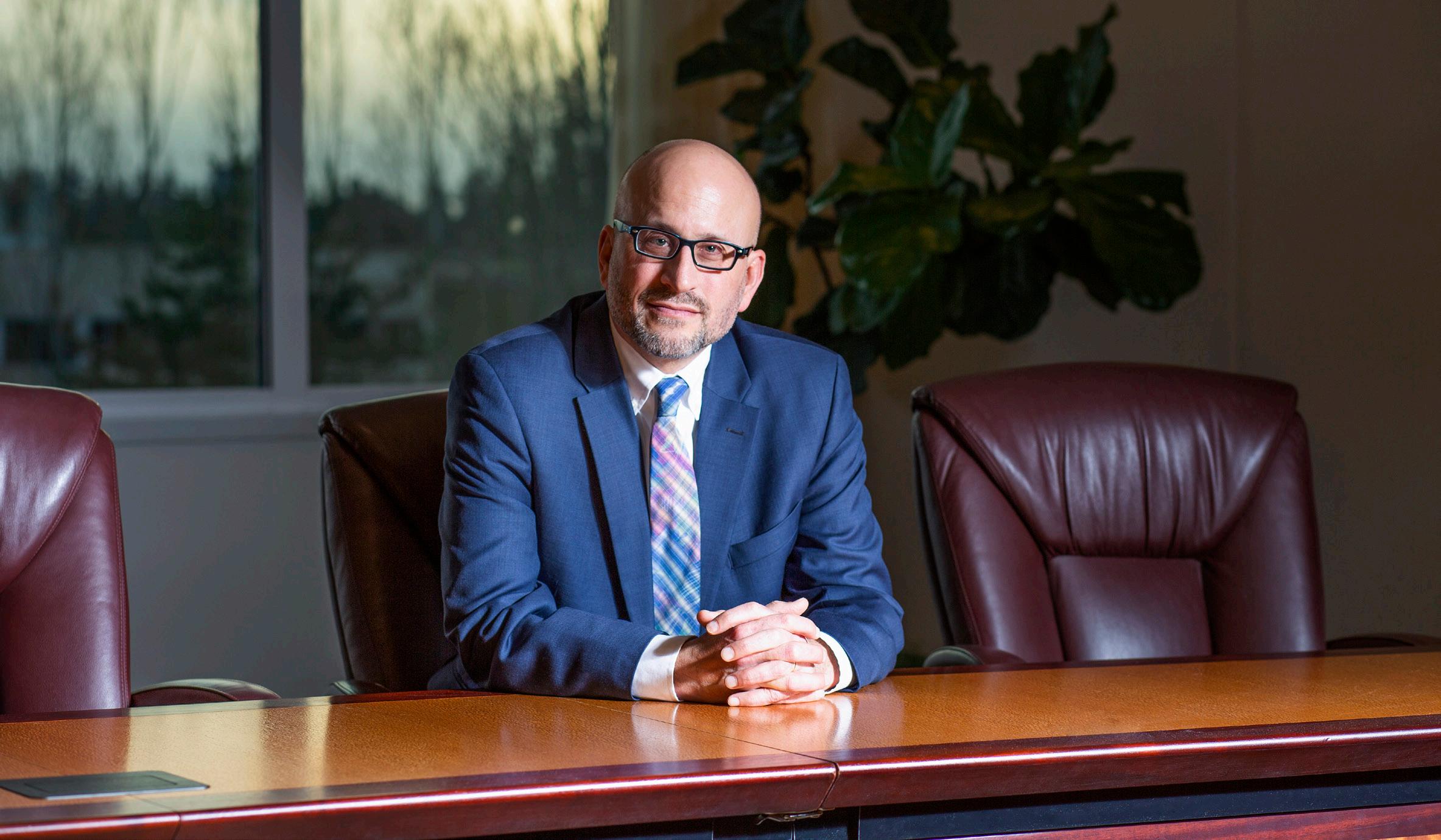
necessarily delivering better outcomes compared to other countries. For example, the Commonwealth Fund has been grading healthcare performance for more than a decade. The United States is ranked last among eleven developed nations in care delivery and outcomes. Understanding why US healthcare performance consistently falls short requires more than just price and quality transparency. It requires holding ourselves accountable to higher performance and making it more transparent when and why we fall short of the mark.
I see two general levels of focus for healthcare-system performance: one focus is on the healthcare system itself, and the other is on the social determinants that impact performance and outcomes. Examples of the first level of concern for healthcare performance relates to how the healthcare system is structured, including:
Primary care: Regular visits with a primary-care physician remain one of the most effective ways to stay healthy. It’s like taking your car to the same mechanic for regular maintenance. But the US system
places too much emphasis on high-cost specialty care. Countries with high-performing health systems make intentional adjustments to ensure that primary care is the central focus of care, rather than a peripheral one.
Volume verse output: The US healthcare system is based largely on volume rather than outcomes. The system rewards doctors financially for seeing more patients, ordering more tests, and recommending more-expensive treatments rather than for improving outcomes. This system drives up our total cost of care, while exposing patients to potential harm, because no test or medical intervention is without some risk. Value-based agreements are trying to change that, but the pace of change has been much too slow and that approach can go only so far.
Access to care: While this improved with the passage of the Affordable Care Act, cost remains the number one barrier to care, with many families unable to afford even basic health insurance. Even
Phil Colmenares | SVP & Chief Medical Officer | Premera Blue Cross
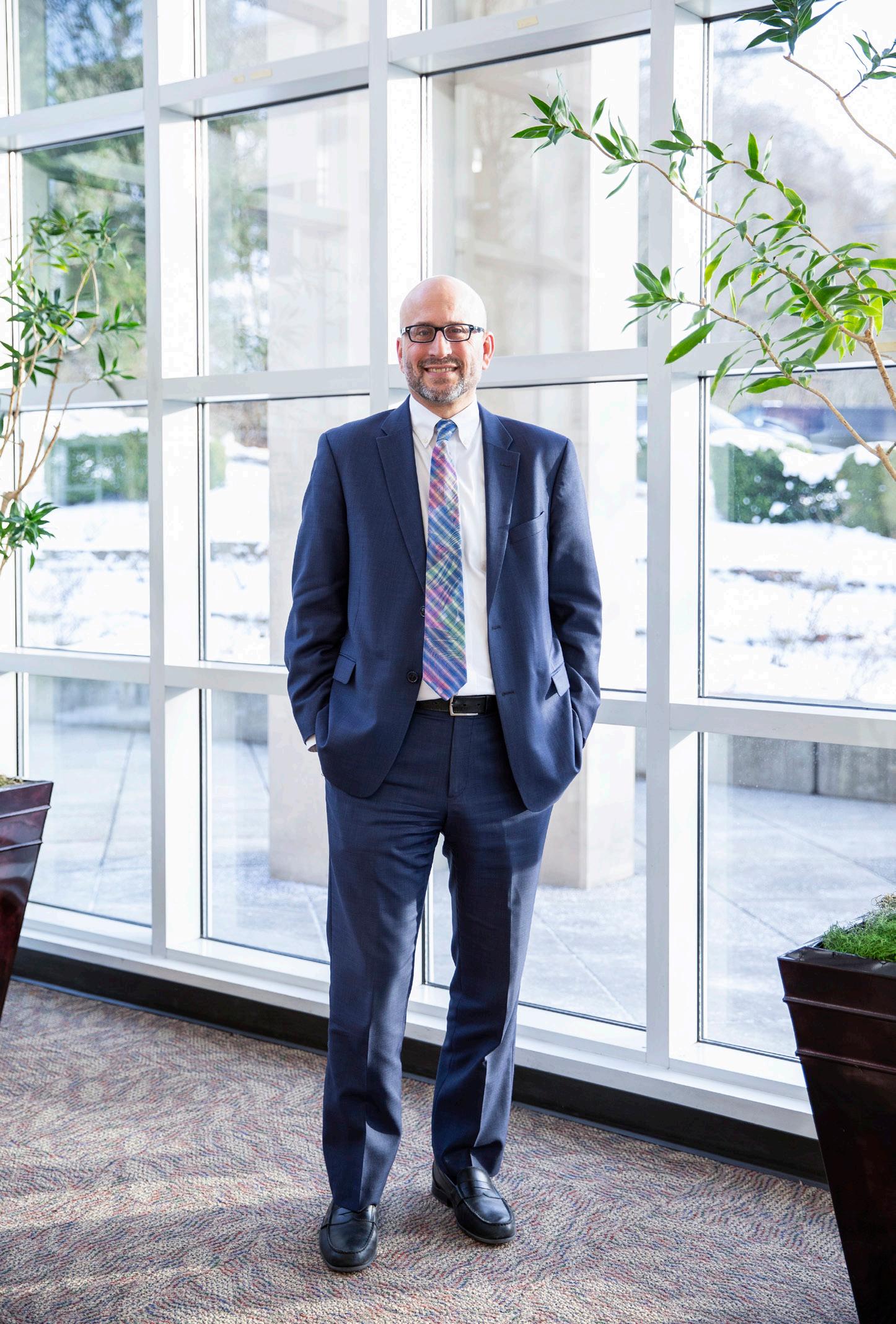
Americans who have good health insurance can be hit with a major hospital bill that can have devastating consequences on their finances.
The second category of concerns around healthcare performance refer to socioeconomic determinants that impact healthcare-system performance and clinical outcomes. A few examples of these include:
Income inequality : According to data from the Organisation for Economic Co-operation and Development, US income inequality has far outstripped all other advanced countries. In addition, healthcare is the number one cause of personal bankruptcies in the United States. These trends have a direct impact on health and outcomes. Lower-income neighborhoods have higher rates of obesity, diabetes, and heart disease compared to more affluent neighborhoods. The Commonwealth Fund study ranks the United States last among developed nations in providing accessible and high-quality healthcare.
Criminal justice: We rely too heavily on the criminal-justice system to address social problems. Compared to many higher-performing countries, the United States has tended to criminalize drug addiction and mental-health issues rather than address these issues through social policy and increased access to the healthcare system. The result is that people aren’t getting the treatment they need. Immigration has been increasingly addressed with a harsher criminal-justice approach. This has had direct impacts on health outcomes, and potentially stokes fear, creating a healthcare access barrier for marginalized groups.
Community environment: Social problems like homelessness have a direct impact on the community and on healthcare performance. At Premera, we have committed more than $40 million over the next four years to address the homelessness issue in Washington and Alaska. Putting a roof over someone’s head almost immediately results in an increase in life expectancy.
How does your multicultural perspective inform your emphasis on healthcare performance?
I think that a multicultural perspective can help make more transparent ideological biases internalized by the dominant culture that sometimes prevent us from considering effective solutions. For example, I don’t feel compelled to ignore the evidence in order to assert that, “The US has the best healthcare system in the world,” or that we should only consider solutions that are “politically feasible” when what is considered politically feasible tends to be a subjective judgement often shaped by ideological preconceptions. My undergraduate degree was in medical anthropology where we studied how different countries solve similar healthcare problems. Each society has its own ideological blinders that make solving difficult social problems, including healthcare problems, more difficult. That multicultural perspective, I feel, can be a helpful asset as we all work together to improve US healthcare performance.
What are the consequences of failing to address healthcare performance more objectively?
Much of my specialty training was dedicated to learning how to look
beyond the symptoms that patients exhibit in order to “make transparent” the physiological or true underlying cause of their symptoms. Objectivity was crucial to being effective in the emergency department. The consequences of not being objective or not making the right diagnosis is delayed treatment, complications, or death. It may seem difficult for some to accept the same level of urgency or gravity with regard to healthcare performance, but I think that it’s not a stretch to make that argument. I feel strongly that we should bring a greater level of urgency and transparency to discussions about our country’s healthcare performance, and that we focus our efforts more on implementing prompt, effective solutions that benefit everyone.
How do you plan to increase transparency and visibility in the Premera community?
There is an advantage to working at a not-for-profit insurer. We are not beholden to shareholders who expect a return on their investment. Like other Blues across the country, we are wholeheartedly committed to our local community. Our company’s purpose is to make healthcare work better. Some may think that this purpose is too bold for a health plan, but I can tell you that every Premera employee is driven by this purpose and is passionate about it. We see ourselves as healthcare stakeholders who must hold ourselves accountable to performance, and be committed to collaborate with all other healthcare stakeholders to improve US healthcare performance for the benefit of everyone. Making healthcare work better will require more than just cost and quality transparency. It will require the courage to move from an “us versus them” mentality across the healthcare spectrum, and together improve healthcare performance. At the beginning of the twentieth century, Dr. Francis Peabody said, “The secret of the care of the patient is in caring for the patient.” Who knew that it would be so challenging? But what better challenge to embrace together?

A COLOMBIAN-AMERICAN SUCCESS STORY
“My mother grew up with eight siblings on a farm in the Andes Mountains, in the town of Chinacota. My father’s family was also poor. His father was a composer of Colombian folk music, and my father was the oldest of nine children. The story goes that the family could only afford one pair of shoes for the children, and my father was the one who wore them first. He got through high school and medical school on academic scholarships. When he did his residency, he would go on horseback to different towns and perform surgeries as well as render medical care. He was paid with chickens, eggs, and vegetables.
My mother and father married in the 1950s and emigrated to the United States in 1957. My father was accepted into an American residency in pathology at Emory University in Atlanta, where my twin brother and I were born. I went to school from kindergarten to high school in Reading, Pennsylvania. It was very interesting—and sometimes a little isolating—being one of a few Hispanic families living in the middle of Pennsylvania Dutch country.
Since birth, I’ve never been away from Colombia for more than two years at a time, and I’ve been going back every year for as long as I can remember. Our family continues to be close to our more than 100 relatives living in the cities of Cúcuta and Bogotá. My mother, twin brother, and younger sister live in Bogotá, and I have one sister who lives in Pennsylvania.
I met my wife, Erica Caldwell Colmenares, at the University of North Carolina where we both earned advanced degrees in health policy and administration. Erica speaks Spanish fluently, and she and her family hail from Madison, Wisconsin, and Nashville, Tennessee. We celebrate our twenty-fifth wedding anniversary this year. We have one child: our son, Maxwell (‘Max’), a junior at Lewis & Clark College in Portland, Oregon.
I am a twenty-year Navy veteran. My Navy career included five years stationed in the emergency department at the naval hospitals in Spain and Italy, and two years as the chief medical officer and radiation health officer of the nuclear guided missile cruiser, USS California CGN-36. While on the ship, we were deployed several times to the Gulf, Japan, Singapore, Hong Kong, and other Far East locations.”
Sobre su Familia
“The idea is to change an industry”
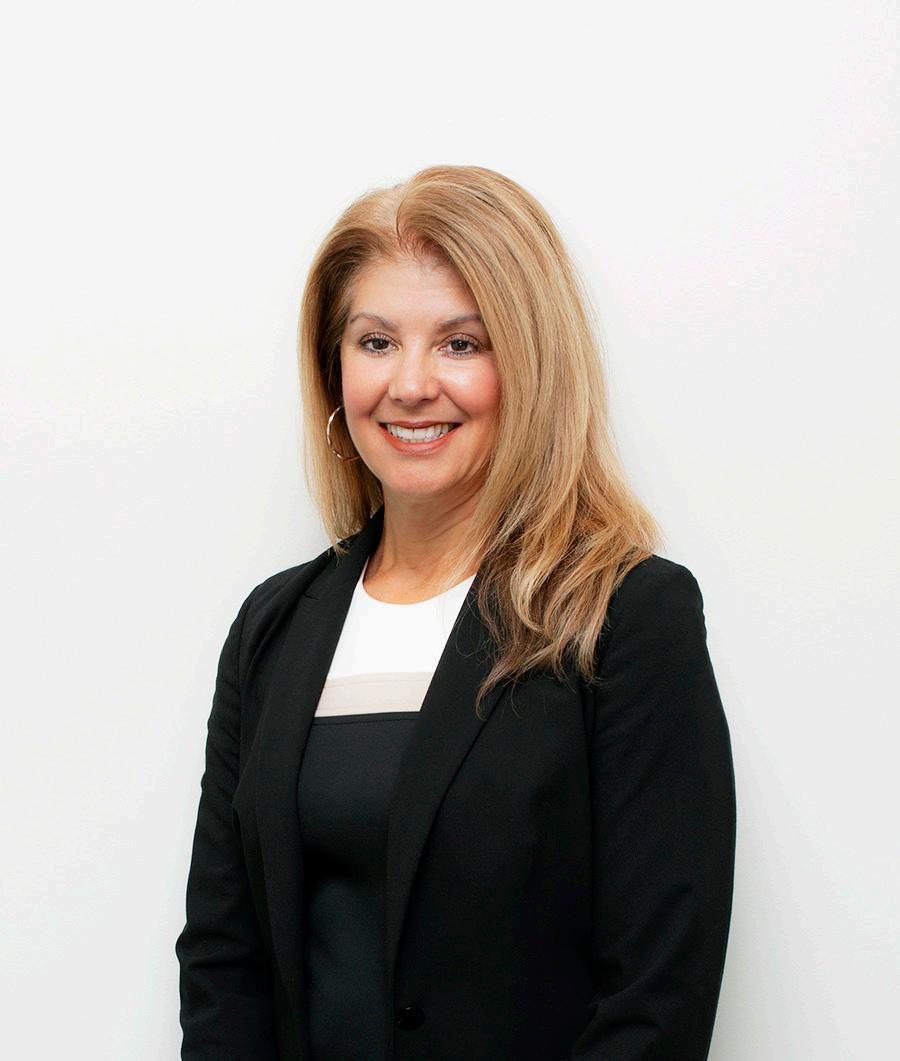

INTERVIEW BY PAUL SNYDER
Between helping establish a national association for Hispanic pharmacists and developing a network of retail locations specifically designed for the Hispanic community, CVS is bringing “long overdue” attention to the needs of the largest minority population in the United States. But as Randy Martinez and Mayra Boitel explain, it’s not just to bolster the company—it’s about shaking up the entire retail pharmacy landscape.
IN DECEMBER 2018, THE NATIONAL HISPANIC HEALTH Foundation announced the formation of the National Hispanic Pharmacists Association (NHPA) to improve access to care for Hispanic communities throughout the United States.
Although the unveiling capped years of efforts by CVS Health and other partners, the healthcare innovation company is continuing its work to bolster not only the nascent organization, but also its own service to the US Hispanic community with the development of specialized CVS Pharmacy y más locations.
In an exclusive interview with Hispanic Executive, Randy Martinez, the company’s director of strategic diversity management, and Mayra Boitel, CVS Health’s vice president, chief merchant of Hispanic formats, discuss the work in pushing the company down this track and the efforts still needed to make it a successful, lasting endeavor.
What prompted the decision to align CVS Health with NHPA and help foster its creation?
RANDY MARTINEZ: We have Hispanic-dominant markets throughout the country and there has been a struggle in those areas around cultural competency in pharmacy-care delivery and in language. We just don’t have a pipeline of pharmacists who speak the language. We’ve explored language learning, and we’ve worked with pharmacy partners and nonprofit organizations to drive awareness in communities about pathways to pharmacy school.
I happened to be at a conference three years ago, where I met Dr. Elena Rios, who was the president of the National Hispanic Medical Association at the time. She and I struck up a conversation regarding forming an organization similar to hers, but for pharmacists. We both realized that no organization like this existed. We felt there was a real need in the marketplace that could drive that pipeline for Hispanic students into pharmacy school.
MAYRA BOITEL: Pharmaceutical associations have been around for a really long time, but never a specific Hispanic pharmaceutical association. Being Hispanic myself, when I was approached about this, I thought, “Wow, it’s about time.” I’m proud that CVS felt this was important and that we got involved.

Randy Martinez Director of Strategic Diversity Management
CVS Health
MARTINEZ: Forming organizations like this is nothing new, but for CVS to take the lead and partner with a nonprofit to create NHPA at a critical time is pretty innovative. Our goal is to ensure NHPA grows and that more corporate support comes into it. It will evolve in the coming years, but we’re thrilled to be able to lead in this.
What about the development of the CVS y más stores? Can you tell me how the missions of these locations intertwine with that of CVS Health?
BOITEL: In 2014, CVS Pharmacy committed to enhancing its service to Hispanic customers with the acquisition of the Miami-based Navarro Discount Pharmacy, the largest Hispanic-owned drugstore chain in the United States. The Navarro stores were an environment where the Hispanic customer felt welcome and at home. They served cafecito at 3 p.m. They offered Hispanic products and ancillary services to the community. As a result, we created the CVS Pharmacy y más store format, which combines Navarro’s unique understanding of the Hispanic consumer with CVS Pharmacy’s best-in-class pharmacy services and high-quality health, beauty, and personal-care products in order to better serve the Hispanic consumer.
CVS y más branding started with twelve stores in the Miami market and, to date, we have expanded into six states/territories— California, Nevada, Florida, Texas, Oklahoma, and Puerto Rico— and we have more than 230 stores total. We’re leaders in the industry with this format and we’re focusing on Hispanic customers and how we adapt, create, and make changes to better serve them.
How do you determine where new locations will be established?
BOITEL: Our goal is to create that authentic shopping experience where the Hispanic consumer can come in and find the products they know, but also establish the feeling of a place where they can congregate and find people like themselves who speak their language.
From a personal standpoint, what do these efforts mean to you?
BOITEL: I’ve been with CVS Health for thirty-six years. I was born in Cuba and I came here when I was five years old with my family. We lived in a New Jersey community very similar to Miami—highly Hispanic where culture was very alive in my everyday life. From a
young age, I wanted to be a pharmacist because I saw the interaction they had with my family. That was the place to go for advice—the person you would go to even before you went to your doctor. I said, “That’s what I want to do. I want to help people. I want to be a part of the community.”
When I heard CVS was acquiring Navarro, I wanted to be part of it. I moved to Miami for a year and led that acquisition. Now, fast-forward to 2018, and I was approached to be a part of the NHPA. To be a member that will be serving the community—to be a part of molding healthcare and helping pharmacists take care of the community—I have an unbelievable amount of passion for this. It’s exciting, but also scary. It’s a big job and we have to do it right and bring the right awareness to our profession.
MARTINEZ: I’ve been with the company thirteen years and I’m very proud of our focus on delivering healthcare to communities and providing customized healthcare needs. For a company to take that initiative and lead in that direction is unique and extremely exciting. Personally, I think it gives us an opportunity. We’re passionate about our community, culture, and ethnicity. To know we can work for a company that lets us lead in this direction is something to be extremely proud of. There’s a lot of work to do from here on out, but I’m proud the company has chosen to focus on this market segment and given us the opportunity to build out both CVS y má s and NHPA.
What would each of you say was the biggest challenge in these processes and how did you navigate it?
MARTINEZ: For NHPA, it was getting buy-in. Budgets are tight with most organizations, and companies all have their sets of priorities— things like the NHPA, in many cases, aren’t at the top of the list. The challenge was making the business case to create this organization and then selling it internally to generate the revenue needed to build it out. We couldn’t fulfill it 100 percent, so we had to go out, get creative, and solicit other companies—Walmart, PhRMA, Walgreens, for example—to become our partners in this effort. The concept of going from competitors to enablers was challenging at first, particularly in convincing management that it was the route we needed to go. But we convinced them that the idea is to change an industry and put as much
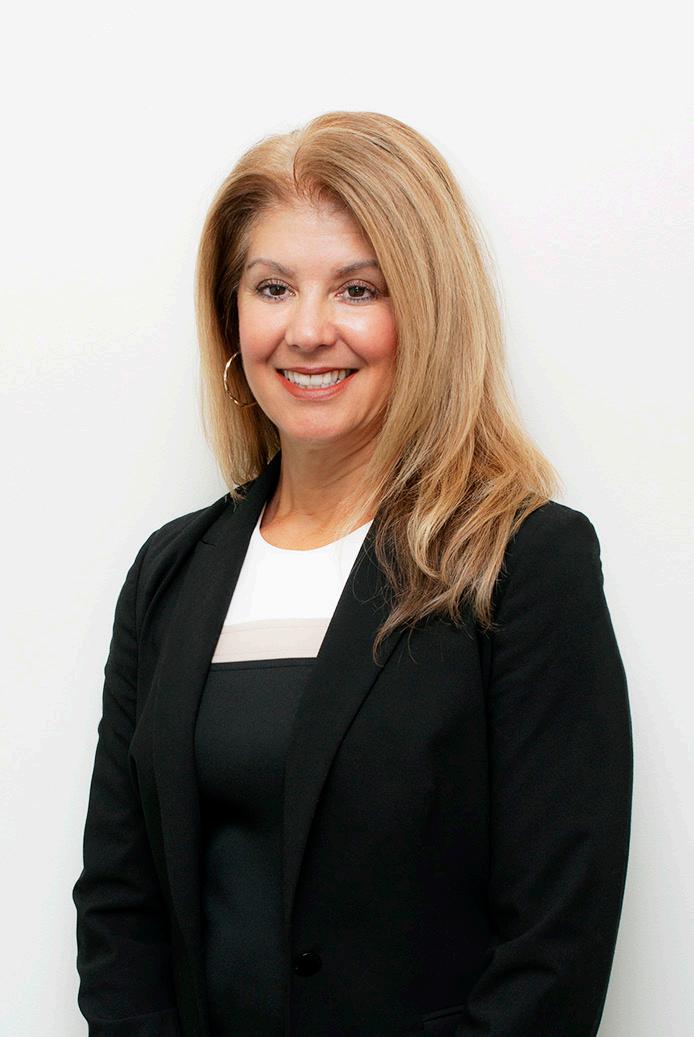
Mayra Boitel VP, Chief Merchant, Hispanic Formats CVS Health

More of what you love... Providing you with more services, more products, and more brands you’ll love at new lower everyday prices.
into it as possible so that we all benefit. Once we put all those pieces together, things started to run smoothly. We gave ourselves a two-year window and completed everything we set out to do.
BOITEL: CVS is very focused on patients and customers, but it was a challenge to ensure that we made the shopping experience for the Hispanic customer different. It’s a customer who has cultural differences. It’s a customer who is very loyal and wants to come in and interact with the team, staff, and pharmacists. They’re looking for that pharmacist to give them information and education. We needed to make sure that when we went in with this brand, we elevated that connection.
The other challenge is really the most basic need: We need to have Spanish-speaking pharmacists and staff to communicate and counsel patients and customers. Unfortunately, we just don’t have enough Hispanic pharmacists. How do we attract them and work with pharmacy schools to make sure they’re attracting Hispanic students into the profession?
Is it simply aiming to get a certain percentage of Hispanic students into the profession or is there more to it than that?
BOITEL: The bigger discussion is how we take care of patients. The knowledge you gain from school is a small part of it. How do you keep the patient coming back to you? CVS will always continue to focus on attracting the best talent, but we want those that genuinely care for their patients. That’s part of what we have to do in NHPA. How do we attract more students into the pharmacy schools so they see what a great profession it is to serve the public at a retail setting?
What’s your favorite part of the job and why?
BOITEL: When I visit the different markets and I get to meet and talk to our customers and patients. I know what we’re doing is great for the community and something we need, but when we hear from customers and patients how happy they are—that we have brought them relevant products they recognize at a lower price, that they like the store, they feel the store—it’s very rewarding to know how happy they are to have a store focused on them.
MARTINEZ: My role here is to serve as a consultant to the enterprise and understand all touch points—from pharmacy benefits management to MinuteClinic to our Infusion business to retail—and find all the areas where there are opportunities to drive diversity management initiatives. Launching NHPA was really exciting, but I’m also working on measuring adherence among minority populations and working through strategies on how we can increase that. And I’m working on language competency within MinuteClinics. I love what I do because I touch every part of this company.
Andrés González uses effective and impressive methods to ensure D&I permeates the culture and community of the Froedtert & The Medical College of Wisconsin health network.
A Community of Equitable Healthcare
BY ARIANNA STERN
MANY ORGANIZATIONS PAY LIP SERVICE to diversity; however, Froedtert & the Medical College of Wisconsin actually walks the walk and talks the talk. The health network—a partnership between Froedtert Health and the Medical College of Wisconsin supporting a shared mission of patient care, innovation, medical research, and education—effectively prioritizes diverse hiring, language services, and culturally competent care. These efforts are led by Andrés González, its vice president and chief diversity officer.
González helps the Froedtert & MCW team conceptualize, implement, and measure the network’s D&I efforts to both raise the standard of care for all patients and to make the organization an employer of choice for diverse employees in the healthcare industry.
“We strive to be a workplace of choice offering an inclusive culture that leverages
our employees’ unique talents and abilities,” González says.
In support of that goal, the health network supports both business-resource groups and diversity-action teams, which conceptualize tactical and strategic ways (respectively) of bringing diversity to the organization. The business-resource groups, which comprise employees at all levels, break down into three affinity groups: Black/African American, LGBTQA, and Military/ Veterans. The diversity-action teams engage employees with supervisory roles or above. Together, these teams take ownership of the organization’s diversity philosophy and find ways to bring it to life.
The business-resource groups and diversity-action teams regularly communicate their ideas to the diversity council, an internal governing body and executive group that includes González. The council metabo-
lizes the teams’ suggestions and combines them with its own diversity-related ideation. Meanwhile, the office of diversity and inclusion serves as a corporate resource providing coaching and guidance to other departments throughout the health network. In the broad scheme, the business-resource groups, the diversity-action teams, the diversity council, and the office of diversity and inclusion form a continuous feedback loop where new ideas constantly take shape.
That ideas flow both upstream and downstream speaks to how deeply embedded D&I is into the Froedtert & MCW health network’s culture. “The diversity efforts go back to the vision and philosophy of the organization and align with its mission and values,” González explains.
One important way that González helps to implement the Froedtert & MCW health network’s diversity goals is through the Equity Pledge, created by a consortium of health care organizations including the American Hospital Association. Historically, there have been racial, socioeconomic, and geographic disparities in the US healthcare system that prevented underserved populations from accessing culturally competent care. The Equity Pledge asks signees to reverse the trend, a mission that coincides perfectly with the Froedtert & MCW health network’s equity and justice ethos.
To make good on the Froedtert & MCW commitment, González has helped to define four steps for the organization to take:
1. Collect “REaL” data—the acronym stands for race, ethnicity, and language—to better understand and serve its diverse patients.
2. Offer unconscious bias training to Froedtert & MCW leaders and nearly

Andrés González VP & Chief Diversity Officer
Froedtert & The Medical College of Wisconsin
13,000 staff members.
3. Incorporate a wider variety of backgrounds into leadership positions in both the C-suite and the board through human resources and diversity-focused hiring efforts.
4. Cultivate strategic community partnerships by supporting local nonprofits.
Together, these initiatives have added depth, breadth, and meaning to the Froedtert & MCW health network’s emphasis on diversity.
Another of the health network’s initiative includes bringing healthcare to diverse constituents, rather than always expecting patients to walk through the doors unprompted.
González recalls that the Froedtert & MCW team recently attended a Hmong New Year celebration to do blood pressure, blood sugar, and vision screenings, build awareness about the health network, and encourage attendees to take control of their health by finding a primary care provider.
“That’s where it starts—building that awareness, and then creating that call to action: referring them to qualifying healthcare providers and community partnerships,” González says. A similar push took place at the Fiesta Mexicana, where Froedtert Health staff encouraged festival attendees to apply for jobs at the company. By meeting diverse populations where they are, the Froedtert & MCW health network ensures that language and social determinants of health are never barriers to care.
Because the Froedtert & MCW health network set ambitious goals for diversity and inclusion, González and his team are dedicated to measuring progress and ensuring the organization stays on track. For example, one goal is to ensure patients at Froedtert are not coming to the hospital to treat problems they first tried to address in the doctors’ offices, indicating a lack of efficacy of doctor’s-office treatments. To achieve this goal, González and his colleagues work to ensure that all patients understand their plan of care with the resources of language services. Another progress measurement occurs when González and the rest of the diversity council review a “balance scorecard” and recalibrate their tactics every quarter. Identified as a business imperative, executive compensation is tied to achieving diversity goals.
The Froedtert & MCW health network includes five hospitals, more than 1,700 physicians and nearly 40 health centers and clinics across southeast Wisconsin. Thanks to González’s strategic mind, passionate commitment, and follow-through, the Froedtert & MCW health network made great strides in terms of equity and justice. Nevertheless, Froedtert Health and the entire health network are doing more than just responding to a moral imperative—its D&I programs are also good business. González says, “Our CEO values diversity and views it as a business imperative as critical as financial strength, compliance efforts, safety guidelines, and quality measures.”
For nearly 100 years, the American Heart Association has been dedicated to fighting heart disease and stroke.
The efforts of our esteemed volunteers, such as Andres Gonzalez, help us make an extraordinary impact to help all people live longer, healthier lives.
Andres, thank you for seeing a need and responding, for sharing your skills to build capacity, and for guiding us toward cultural growth and competence. Thank you for helping us reimagine possibilities and for being an advocate, thought leader and servant. But most importantly, thank you for your relentless pursuit for equitable health.

STRA TEGY
What is your secret to successful leadership?
The impressive executives featured here share theirs, and they are strategies that engage both the mind and the heart.
Gladys Lopez, Hilton
Andrea Guendelman, Wallbreakers
Jon Garcia, McKinsey & Company
BY LIOR PHILLIPS PORTRAITS BY NOAH WILLMAN
Empowering MinorityOwned Businesses, From The Inside
Gladys Lopez is on a mission to level the playing field for suppliers. Hilton aims to partner with small-business communities surrounding its global properties. Together, they’re taking the supplier-diversity world by storm.

ALTHOUGH ORGANIZATIONS AROUND
the world have, for many years, focused on diversity in its various shapes and forms, it can be much more difficult to consider the diversity of external partners. When she was only twelve years old, Gladys Lopez saw firsthand the impact that mindful supplier choices could make on a community.
“My father’s business had just been awarded some subcontract work from a local government agency because his was a minority-owned company,” she recalls. “Those were just the beginning stages of supplier diversity, but I immediately knew I wanted to be a part of that process when I grew up, to help the Hispanic community.”
ing a dual responsibility to her employers and suppliers, Lopez quickly found herself with more opportunities to make a difference. As a growing field, the world of supplier diversity calls for innovative thinkers and flexible strategists—attributes that Lopez continues to demonstrate. “The key is maintaining fairness and consistency, despite the many challenges,” she says.
Lopez joined American Express’s supplier-diversity team in 1997, focusing on global voice and data transport services and then moving into mainframe and mid-range software and hardware. In a short time, she grew into a senior management role, driving growth for the global financial services
“I want to help these diverse communities navigate corporate America. That is one of the most difficult things for suppliers to do.”
In her new role as senior manager of supplier diversity for Hilton, Lopez can continue on her long, accomplished career of doing just that.
Minority small-business owners such as her father haven’t always had opportunities to grow and succeed, but Lopez entered the field of supplier diversity hoping to push change. She took her first official supplier-diversity role after earning her bachelor’s degree at Georgetown University, guided by a mentor that has continued to influence her career. “That person believed in me, and gave me my first job a month after I graduated— like a beacon of light,” she says.
Driven to level the playing field for minority-owned businesses while also feel-
company by leading a corporation-wide supplier diversity initiative with more than 1,000 diverse suppliers for longer than a decade.
After twenty years with American Express, Lopez was ready for a new challenge. She became senior manager of supplier diversity at Hilton in early 2018. The multinational organization manages a broad portfolio of hotels and resorts, also overseeing franchises across the world. Rather than bring a single cookie-cutter hotel to a dozen different markets, Hilton aims to work as a partner with the diverse small business communities surrounding its properties— one of the main reasons Lopez was drawn to the company.

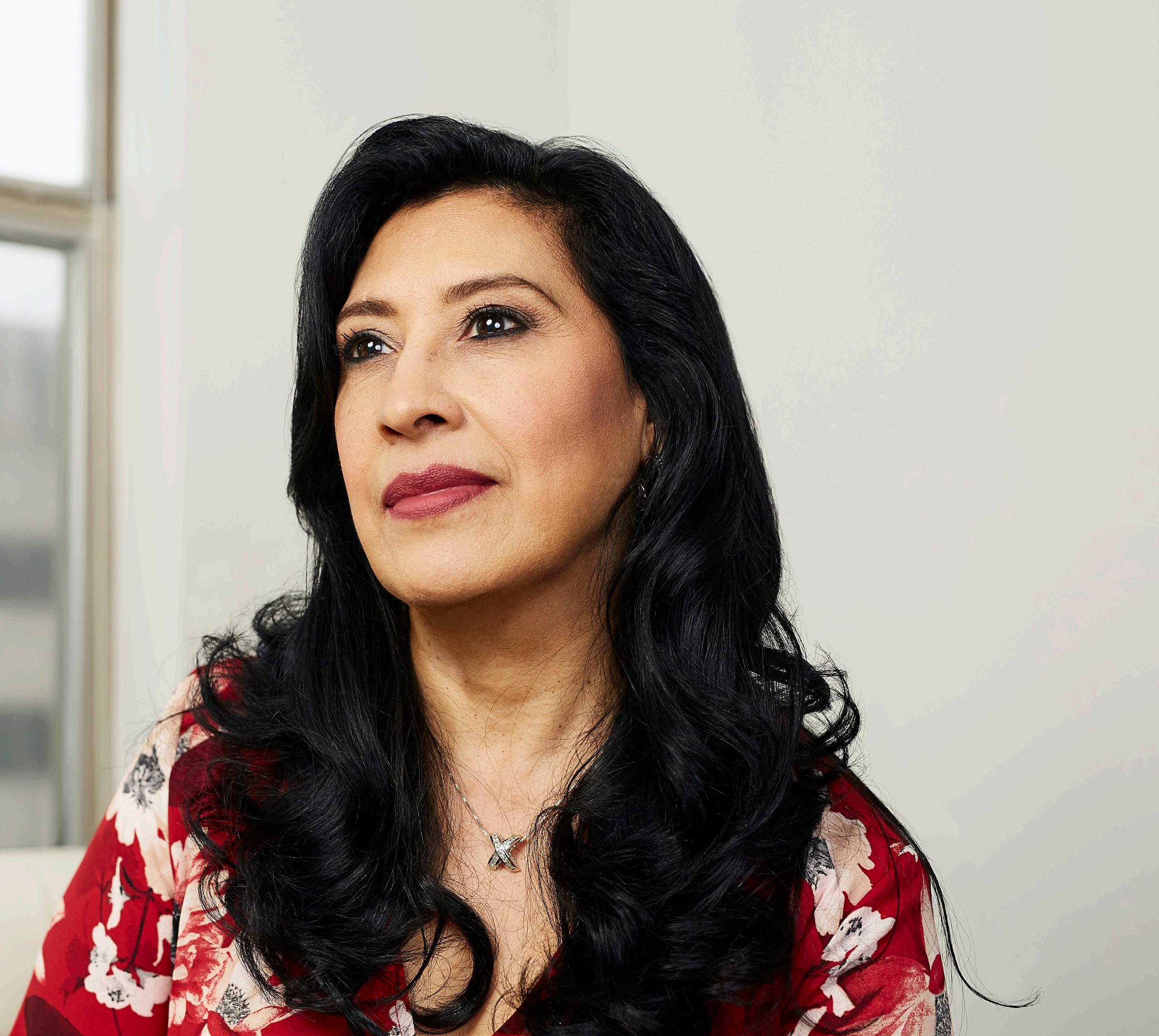
Gladys Lopez | Senior Manager, Supplier Diversity | Hilton

COMMUNITY ACTIVISM
“I practice diversity and inclusion in everything I do,” Lopez says. “Both from my parents and from my mentor, I learned early on the importance of staying connected with my community, and encouraging the same for others. Today, for example, I am on the board of advisors for the Caobas Foundation, which offers educational resources to at-risk youth across the Washington, DC, metro area and the Dominican Republic. I’m also the chapter president of the Catholic Association of Latino Leaders for Washington, DC, a group committed to growing in faith through prayer, education, service, and leadership. Right now our main focus is Catholic education, helping Hispanic children in grades K-12 attend Catholic schools. And, I’m the newly appointed corporate board chair of the National Association of State Latino Chambers of Commerce, which represents approximately 80 percent of the Hispanic state chambers in the United States and Puerto Rico. In addition, Hilton has selected me to chair the Hispanic Latino Team Member resource group. I also founded the Hispanic Leaders in Supplier Diversity and D&I group.
Throughout all this work, I want to share success stories, offer assistance, and, through collaboration with my peers, help diversity practitioners, especially those just getting into the function. We want to be able to leave a legacy of diverse suppliers, of Hispanic program managers that continue to carry the torch.”
“I was very excited to work for a brand that is going to give more opportunity to the diverse business community,” she says.
When she joined Hilton, the organization was at the tail end of a global business-model transformation, which put supplier diversity at the forefront. Diversity and inclusion had been a priority for Hilton for nearly a decade, and Lopez’ supplier diversity team fits into the company’s marketplace initiative of creating a global competitive business.
“We can engage more strategically and partner with nonprofit organizations and marketing campaigns to cater to diverse customer segments and provide opportunities for women and people of color,” Lopez says.
Lopez credits the new leadership in the Hilton supply management department— particularly that of Senior Vice President and Global Head, Hilton Supply Management, Anu Sanexa—for carving a path that could allow for such positive impact. “She set out to redefine the department by strengthening our capabilities, committing to more aggressive growth plans, and investing heavily in talent and technology,” Lopez says. Between that top-down commitment and Lopez’ strategic focus, Hilton has been able to more fully feel the benefits of diversity and inclusion.
The hospitality industry comes with a great deal of change and complexity—especially for a global organization. Consumer needs evolve quickly, and Hilton must be agile. Communicating the impact of supplier diversity to each and every department is an essential part of Lopez’ job. By empowering champions and supporters of the initiative in other teams, she ensured that supplier diversity maintains its value in corporate conversations even when she’s not there to affirm it.
“We need to make sure we have the right infrastructure to respond to anything, to ensure we know how both our customers will be impacted and how our diverse vendors will be impacted,” Lopez says.
Though still relatively new to the role, Lopez has been consistently handling upwards of twenty separate projects at any given moment. In addition to utilizing Lopez’ strategic skills to ensure strong relationships within the organization and with suppliers, Hilton is utilizing technology in support of its diversity focus. Here, too, Lopez maintains her meticulous attention to detail.
“Right now I’m evaluating supplier diversity management software, and there are more than 100 components of each offering,” she says. She is also leading projects such as revamping websites to further ease suppliers’ experience. These new sites will allow prospective suppliers to find and contact Hilton, register with the diversity program on procurement, and more.
“I want to help these diverse communities navigate corporate America,” she says. “That is one of the most difficult things for suppliers to do, and it’s important to have someone on the inside that can help them figure out how to put together their value proposition, do the most effective research on the company—to get them to the right person at the right time for the right opportunity.”
That help extends beyond the oftentimes transactional nature suppliers may find with other organizations. If Lopez finds a supplier that may need to strengthen a particular area of their business, she offers guidance or suggests mentors that may lead them to further success.
At the end of the day, those connections benefit both Hilton and the minority businesspeople. Accomplishing that duality has led to a variety of awards and recognition, but being able to help Latinos, women, and other people of color is the true reward, Lopez says. “Being recognized for making contributions to the Hispanic business community resonates because it reminds me that I’m doing things right, doing what I set out to do when I was very young.”
Andrea
Guendelman
left
a dictatorship, oppressive family expectations, and a successful career in
law to launch multiple ventures
serving a mission close to her heart: helping young Latinx professionals
“break walls” in the tech industry.
BY KELLI LAWRENCE
THE MORE YOU LEARN ABOUT ANDREA Guendelman’s background, the more sense it makes that she’s leading the new start-up Wallbreakers.
Although she was born in California while her father earned his PhD from UC Berkeley, she spent most of her formative years in his homeland of Chile during the dictatorship of Augusto Pinochet. Also, Guendelman was raised Jewish—her Romanian-born mother had fled to Chile, by way of Argentina, to avoid communism—in a country where Judaism represented 0.01 percent of the population.
Growing up, she aspired to be an actress—that is, until she asked herself, “What would I want to grow up to be if I was a boy?” (Answer: a lawyer.) So she studied law at a time when, under Pinochet’s regime, most women didn’t even enter the workforce—much less become lawyers. At age eighteen, her motivation to study plummeted when her father suddenly passed away. Nevertheless, she stayed in school
and finished at the top of her class. When Harvard Law School was suggested as a place to continue her studies, she got in and moved to the United States—primarily as a way to get out of Chile, where pressure was mounting for her to get married and focus on being a homemaker.
It was a few more years down the road when Guendelman began recognizing another problem with young Latinas and family expectations. Her Harvard degree had carried her to corporate attorney opportunities in New York City and Washington, DC, before she headed southwest to Albuquerque in 2007. There, she became keenly aware of the large number of local Latina teens being steered towards the University of New Mexico as their sole opportunity for higher education. Anything more ambitious and/or farther away from home was deemed out of the question by their parents, Guendelman says. “Higher education at an Ivy League institution was an alternate universe for most Latinas in New Mexico,” she says. “So
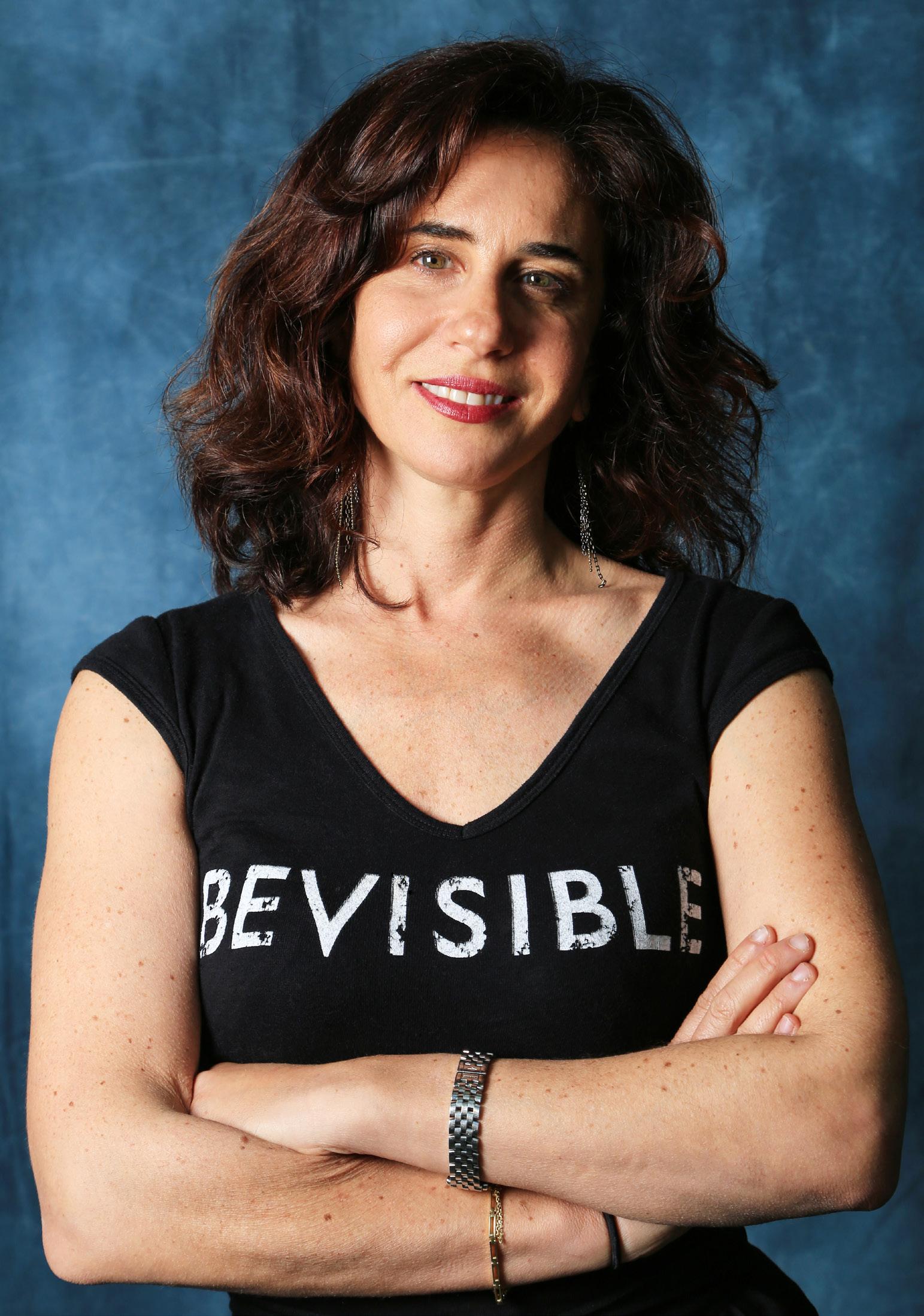
Andrea Guendelman | Cofounder & CEO | Wallbreakers
that’s really where all my work started. I wanted to try something different, something creative…but I didn’t have any idea what that ‘something’ was.”
Though she continued for several more years as an attorney—a career she didn’t particularly enjoy, but stayed with “until I decided what I really wanted to do”—Guendelman found an entirely different opportunity when she worked a deal for Virgin Mobile to stream a massive rock concert from her homeland of Chile. “That was my first entrepreneurial experience,” she recalls. “It wasn’t my money, so I wasn’t an entrepreneur risking my capital…I just made things happen, basically. And I was good at it.”
For the next few years, Guendelman worked with different partners, testing this newfound talent in a variety of ways—everything from the formation of a tech community for women in 2012 (“it was early in the tech movement, so this was seen as very progressive,” she recalls) to an advisory position creating media strategy with the Boulder, Colorado-based National Center for Women & Information Technology (NCWIT). “That was for young girls,” she says, “and I started thinking about how to get Latinas in college involved.”
This is where Wallbreakers comes in. Guendelman and her mentor/ business partner Issac Saldana, the CEO of JoyLabs, have created Wallbreakers with the specific needs of both minority professionals and the tech industry in mind. “It’s about showing those companies that it’s possible to find very talented people from a population that is underrepresented,” she says.
man explains—followed by one-on-one interviews with senior engineers that provide valuable insight into the jobs at hand, and the questions asked by employers on the way to landing them. The goal is not only job placement, but the development of well-rounded candidates. “The students work on their tech skills but also their soft skills,” she says. “It’s about understanding the thought process, learning how to take criticism, learning how to take feedback…being personable and being flexible is very important.”
With eight companies participating in a six-week beta pilot program, Wallbreakers launched in late 2018, the results of which proved quite pleasing to Guendelman and Saldana: six job offers in its first quarter, creating an interview-to-offer success rate of 42 percent. Wallbreakers’ 2019 website launch included company profiles that share values, culture, and ways for potential recruits to engage in interaction. Partnering companies have so far included Twitter, Indeed, Airbnb, Charles Schwab, Pagerduty, Gusto, Hired, Drift, and Prudential. In addition to her role at Wallbreakers, Guendelman also serves as a consultant for the Office of Diversity, Equity and Community Engagement at the University of Colorado Boulder.
“It’s about showing tech companies that it’s possible to find very talented people from a population that is underrepresented.”
Through Wallbreakers, recent and soon-to-be college graduates (including Latinx, African-American, and other underrepresented minorities) receive up to 100 hours of coding exercises—“the more you have coded, the more likely you are getting into a good job,” Guendel-
Everything appears to be coming full circle for the woman with the can-do attitude determined to exceed her family’s expectations. Now more than ever, Guendelman is humbled by the tough entrepreneurial lessons she continues to learn along the way, crediting Saldana and several Latina mentors—including WE Family Offices CEO Maria Elena Lagomasino, and BeVisible Board Advisor Beatriz Acevedo—for any and all success she achieves.
“As for something I do that makes me successful,” Guendleman says after considerable thought, “I have the ability to attract people to my ideas. That’s my gift.”
Reset, Transform, Sustain
BY RUSS KLETTKE
PORTRAITS BY NOAH WILLMAN
At McKinsey & Company, Jon Garcia leads significant, rapid transformations for large corporations. It’s a natural fit: Garcia has been unblinking in the face of change and challenge his entire life.
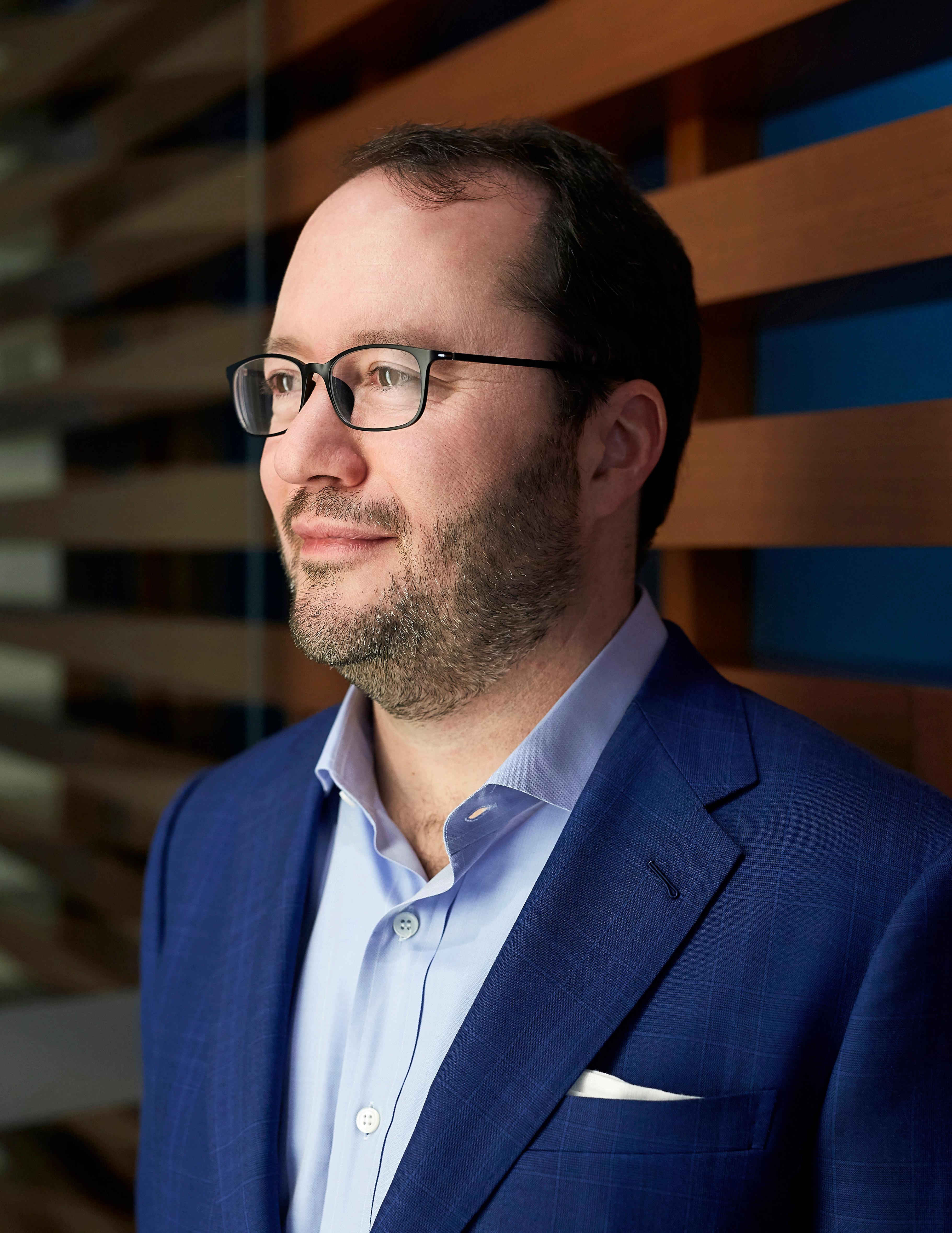
OVER THE LAST DECADE, THE RTS UNIT OF McKinsey & Company has helped a range of clients achieve unexpected, rapid, and even unlikely transformations. RTS Founder and Chairman Jon Garcia is no stranger to transformational change; much of his life has been a story of transformation.
He grew up in a working-class family, with a Mexican father and an American mother. Both parents were focused on ensuring their three children had as much access to opportunity as possible. With their encouragement and financial support, Garcia went to college—and managed to graduate in three years. He followed this with graduate school at the London School of Economics, and ultimately wound up with a law degree from Harvard.
Of course, there were bumps along the way. In his third year of law school, he battled cancer—and won—reinforcing a theme that would recur later in his life: to never give up.
After finishing at Harvard, Garcia went to work for a leading global law firm in Washington, DC. Though he was happy practicing law, on a lark Garcia wound up responding to a want ad for McKinsey in the Wall Street Journal. Before he knew it, he’d landed the job at McKinsey and, with it, a transformation of his career.
After a fast and successful start in consulting, Garcia went to work for the Clinton Administration in late 1996. He served in a senior position at the Federal Communications Commission, where he worked on the opening of the US telecommunications market.
“It’s hard to believe, but just over twenty years ago, regulators were struggling with how to ensure that new services like mobile phones and the Internet were allowed to flourish,” Garcia says.
He found it an enriching experience, and gained a lot of respect for people who spend their careers in government. “I met a set of extraordinary people who were passionate
about doing the right thing,” he says. But, just as important, this experience informed and inspired his work when he returned to McKinsey in 1998.
He thrived at the growing firm—which went from 7,700 employees in 2000 to 27,700 in 2018—and he was ultimately tapped to start something new in 2009. “There were client situations where the scale and pace of change were not typical of most companies,” he says. “Sometimes it was about companies with middling performance. Or when a new CEO had recently arrived and was in a position to make big things happen. I call them super-aspirational leaders.”
The track record of success is impressive. For example, one chemical manufacturing company executed a complete turnaround of their performance, with a stock price that more than quadrupled, catapulting the company into the ranks of the Standard & Poor’s 500. In that case, over two years, the RTS team worked side by side with the client to comprehensively change “how they run the place,” from rationalizing capital allocation, performing product pricing analyses, and reviewing how factories operate; to running effective meetings and training leaders on getting feedback. “After only a couple of years, the company is fundamentally different,” Garcia says. “They went from a challenging situation to where they’re killing it.”
“Love what you do and take some risks. We often don’t realize how much we can shape our own lives.”
Another client, an aluminum maker, went from being in the red to the black through its RTS engagement, which started in 2011. Eight years later, the COO reports that changes brought about by RTS are still yielding results. “The power is in how those changes stick,” Garcia says.
Who better to do this than someone who got through college in three years, and who finished law school while undergoing treatment for cancer? Human and enterprise characteristics and strengths are intertwined throughout RTS and its work.
So Garcia and colleagues created RTS. This special unit of McKinsey helps clients achieve transformational change—improving performance, health, and capabilities of organizations—as well as coaching through corporate restructurings and turnarounds. According to Garcia, it’s a different consulting experience for many clients and RTS teams because they are working side-byside “to develop the capabilities to drive and sustain the change,” he says, often for two years or longer.
“My day job is behavior modification,” Garcia says. “It’s about getting leaders to act differently. The ‘what to do’ is easy. But getting people to act differently is the real challenge.”
That extends to personal health. “You have to realize that how well you balance work and life makes you more effective,” he says. “I counsel clients to remember that business is inherently a marathon, not a sprint.” This includes getting the right amount of sleep, and “recognizing the power of getting ahead of deadlines, which reduces stress.”
RTS has global operations; as Garcia says, they’ve “engaged in large-scale transformations from London to the Artic Circle
to Papua, New Guinea.” Hiring reflects that reach: “There’s a lot of value in different perspectives,” he explains. “I can read about business culture in Brazil or Japan, but nothing beats having team members who know the culture because it is their own. My colleagues are literally drawn from across the world.”
“One of the most important things we do with our clients is coaching them,” he continues. “Good coaches inspire, and it’s quite a bit easier to inspire people if they have some ability to identify or relate to you. That relatability is impacted by your background. Diverse teams are powerful.”
McKinsey’s research backs this up. The company took a quantitative look at diversity with its own study of 1,000 companies in twelve countries, measuring such things as profitability and long-term value creation against the proportion of women and ethnic/cultural compositions of company leadership. The findings backup Garcia’s assertion: firms that rank in the top quartile of companies for gender diversity were 21 percent more likely to experience above-average profitability. The numbers for ethnic and cultural diversity were even higher at 35 percent.
Although he is Hispanic, Garcia has focused his mentoring on young people from a range of ethnic backgrounds, but who come from less-than-affluent homes, as did he. He recalls that unpaid internships in big, expensive cities weren’t affordable for him. Now, he and his wife fund living expenses for a set of college students who could not otherwise afford a summer internship.
Besides financial support, what advice does this high-achieving cancer survivor offer young people?
“Love what you do and take some risks,” he says. “Life is a lot like The Matrix. We often don’t realize how much we can shape our own lives. We can do so much more than we imagine if we just go for it.”
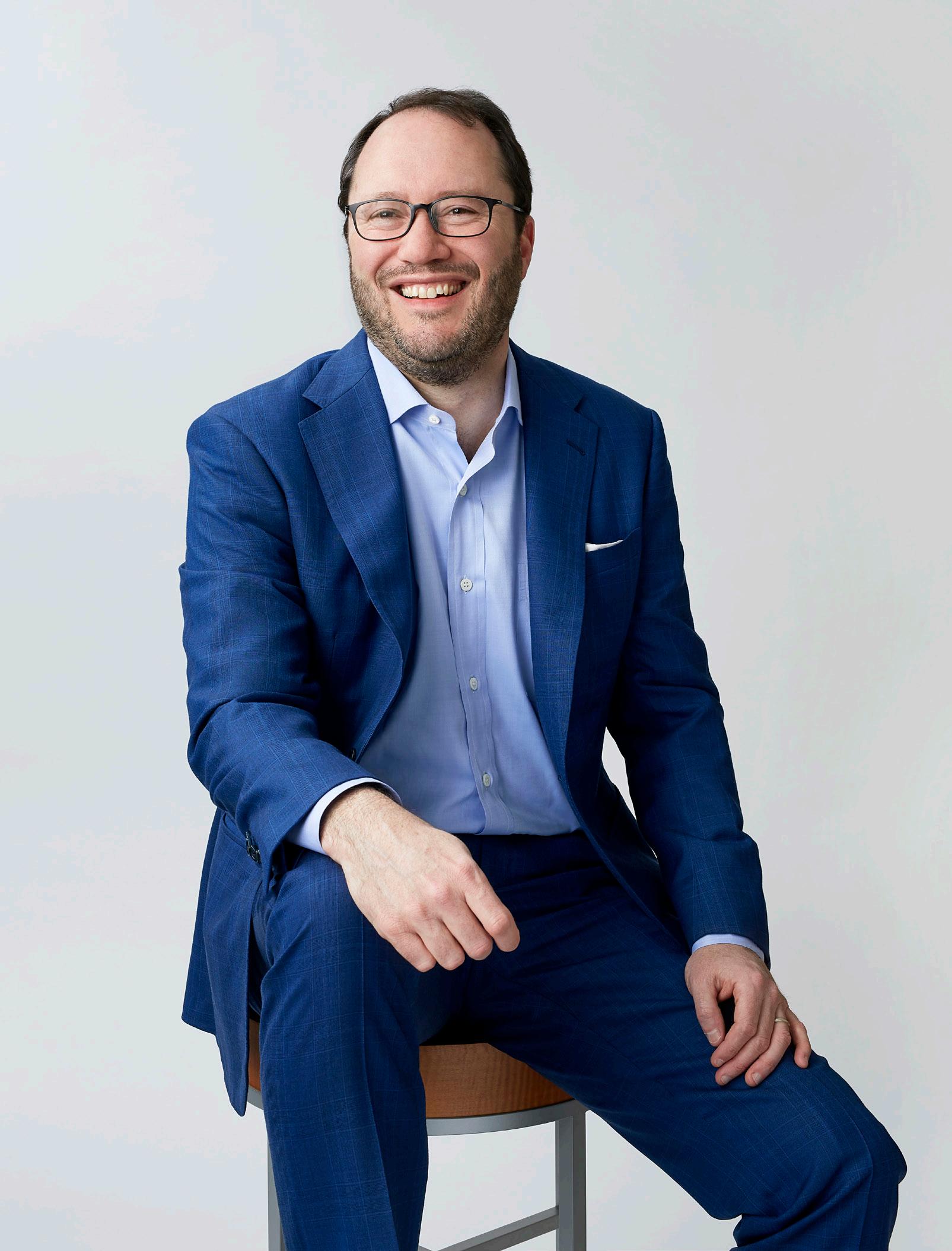
Jon Garcia | Founder & President, RTS | McKinsey & Company
CONVERSATIONS AT THE TOP
ZOE SAL DANA
ACTRESS, PRODUCER, ACTIVIST, ENTREPRENEUR,
and so much more, Zoe Saldana shares a wise-yetfresh perspective on what it means to be an American in today’s sociopolitical society— and how she’s working to broaden the definition.
PORTRAITS
WITH RUBEN NAVARRETTE
BY PETER YANG

fter I spoke to Zoe Saldana for the better part of an hour, it took me a few days to get my head around everything we talked about and to put into context what it all meant.
Besides, first I had to put out the flames.
I had spent more than a hour studying Saldana prior to our conversation, and it felt like my brain was on fire.
There are a few things you must know about the 40-year-old actress, producer, artist, activist, and entrepreneur.
First: Yes, all those titles apply. Like other driven hyper-achievers, Saldana has so much on her plate that she would need to be cloned to accomplish everything she wants to get done during her time on Earth.
Luckily, as Saldana’s fans know from some of her biggest movie roles—such as intergalactic blockbusters like Star Trek , Avengers, and Guardians of the Galaxy —it’s not always clear that she is confined to just one planet.
Nor is she confined by the opinions of others about who she is and what role she is supposed to play.
The fact that some people might see her as primarily an actress didn’t stop her from launching her own production company, Cinestar, with her sisters, Cisely and Mariel.
The fact that Saldana is not African-American, but technically Afro-Latina (with a father who was Dominican and a mother who is Puerto Rican) didn’t stop her from undertaking the bold move of playing African-American musician and civil rights activist Nina Simone. Though her performance in Nina won praise for its intensity, African-Americans were critical of what they considered a case of cultural appropriation.
The fact that she is proud of her heritage and often identified as a Latina actress—and part of a cohort of Latinas in Hollywood that includes Eva Longoria, Gina Rodriguez, America Ferrera, and Rosario Dawson—doesn’t stop her from thinking of herself as primarily an American.
The fact that she hopes her three young children—all boys, under the age of five—will someday remember her as an artist doesn’t interfere with her desire to be an activist for causes she believes in as a woman, Latina, and mother.
Finally, the fact that Saldana has spent more than twenty years in the world of films and entertainment didn’t deter her from bravely taking a stab at the world of media—specifically digital media and electronic news—through her newly launched media brand, BESE (pronounced “bee-say”).
ZOE TALKS: MAINSTREAM CULTURE
“Everywhere we go across our nation, we find Latino communities either in small regions or in big ones. And where are we when we turn on our TV? Or when we go to the museum? Or when we send our kids to school and they’re opening up history books, literature books that they’re given for the year to study, to read—where are we? Where are our playwrights, our writers, our authors?
Enough is enough. I don’t want to consume the general market if it’s not really reflective of my community. As an American, I should be considered. I should be a part of the general market.”
I asked her how she became interested in media—which is, at its core, about disseminating information.
“I understand the power that media has to connect with people in a very quick way, and also through storytelling and representation,” she told me. “Representation cultivates aspiration. I’ve seen it all around me. And I’ve also been a witness to what happens when that representation is not there, how much it affects someone’s identity.”
The name of the digital-media platform derives from the verb “to be” in both English (“be”) and Spanish (“se”). The message is: Know yourself and be yourself.
That also happens to be Saldana’s life philosophy in a nutshell.
The site’s mission is to shape what Saldana calls “the dominant cultural narrative,” centered around 58 million Latinos and how they went from trying to fit into the mainstream to defining the mainstream. The plan is to tell stories that might normally go untold and provide uplifting portrayals of interesting people, all with a multicultural spice that reflects the America of the twenty-first century while giving opportunities to Latinx writers and content providers.
At the heart of BESE, you’ll find Saldana’s partner, media and entertainment veteran Daniel Batista, who acts as president and COO. There is also an in-house staff of about a half dozen people who, in turn, rely on several freelancers to produce content. But, everyone agrees, it is Saldana—as editor-in-chief—who gets the final word.
Although the people who run the day-to-day operation of BESE would likely insist that the goal of the venture is to attract as wide and diverse an audience as possible, it’s clear that a huge chunk of that audience is so-called Generation Z.
The “Z” doesn’t stand for Zoe, but it might as well. Because these two entities “get” each other. Even though Saldana is part of the preceding generation, the millennials.
You know the Z. They’ve been called iGen, because—born after 1995—they’ve spent much of their lives, and in some cases their entire lives, in the age of the smartphone.
“I am American first, before I am anything else. It is how I walk through every door. I don’t walk into a place thinking that I’m Latina or that I am Black. I walk in knowing that I am American first.”
Investors include Sol Trujillo, global telecom executive and former CEO of US West; Ralph de la Vega, former AT&T vice chairman; Monica Lozano, former CEO of ImpreMedia and La Opinión newspaper in Los Angeles; White Owl Capital Partners; M Ventures; Howard Morgan, cofounder of First Round Capital; Michael Francis, former CMO of Target and DreamWorks Animation; Erik Oberholtzer, cofounder and CEO of Tender Greens; and other prominent individuals.
Let that sink in. Baby boomers always had radio. Generation X grew up with television. Millennials have never known a world without the Internet. And Generation Z doesn’t know what life was like before Steve Jobs put the world into the palm of our hand.
The Z prefers Instagram to Facebook, texting to email, and a few minutes alone to hours spent socializing with friends. They’re incredibly media-savvy, yet also skeptical of most existing media and all its agendas. They’re not big on borders, boundaries, or boxes. They like nuance, fluidity, and flexibility. They’re about defining themselves on their own terms—and the transgender revolution that we’re living through at the moment is just the most obvious example.

REPRESENTATION CULTIVATES ASPIRATION. I’VE SEEN IT ALL AROUND
ME.
AND I’VE ALSO BEEN
A WITNESS TO WHAT HAPPENS WHEN THAT REPRESENTATION IS NOT THERE, HOW MUCH IT AFFECTS SOMEONE’S IDENTITY.
One more thing: The Z is starving—for news and information about issues they care about with something that traditional media sources often fail to deliver: context. They’ve been screaming out for several years now: “Don’t try to tell me what to think. Just tell me what happened, and what it all means to me and the people I care about.”
Not only did Saldana hear that scream. She was one of those doing the screaming.
“I was taking myself as a case study,” she said. “Because I was noticing the disappointment that I had felt for so many years, of not seeing myself reflected in everything around me. As I consumed information on entertainment, news, art, technology, or whatever, I didn’t see myself.”
Then came a bolt of inspiration.
“So, I was like, ‘Well, if I’m experiencing this, and I’m an American of Latin origin, I wonder if other communities within my community—especially young people—are feeling the same way,” she said.
The vacuum was there, in part because traditional media companies have been so dense about expanding their audience.
“I do believe that there is a very big imbalance in our nation where all the information given to us—usually through media conglomerates that are privately owned—isn’t as free and as neutral as it should be,” she said. “Therefore, our communities are not informed properly and the conversation feels very uneven and very incomplete.”
Saldana doesn’t like being described as ethnic. In fact, she rejects the whole concept of ethnicity—along with words such as “minority” or “exotic” or “diverse.” She’s not any of those things, she said, because they’re all tied to how someone else sees you or how you relate to another person.
Exotic compared to what? A minority standing next to what majority? Diverse as opposed to what?
She’s just Zoe—American, New Yorker, Mets fan, daughter, sister, wife, mother, actress, producer, artist, activist, businesswoman. You can come to her if you like, on her terms. Just don’t expect her to come to you on yours.
“In order to teach our fellow American brothers and sisters to respect us and see us as Americans, we have to title ourselves as Americans first,” she said. “After all, you can’t blame somebody for othering you when you’re the one who initiates that. I’m proud of my heritage. I live it every day. I don’t need to title it.”
ZOE TALKS: BEING AMERICAN FIRST
“I am American. I am American of Latin origin. If i walk into a place and I shake someone’s hand going, ‘Hi, I’m Latina,’ then I’m not adding to my American fabric. I’m basically excluding myself from the North American storytelling of our history and I’m saying, ‘No, no, no. I am of somewhere else, but I’m here.’ I’m not foreign born in my own nation. My parents are. I’m a proud firstgeneration Latin American, but I was born in Jersey. I’m a New Yorker before I am Latina.”
“ZOE TALKS: ACTIVISM
“I always look at my sons and I’m like: When they’re old enough to do research on their mom and be told who their mom is—or, in an even-farther future, who their mom was—I want them to be proud of the kind of approach that I took to activism.
And it’s not the one of running around with signs. I support my brothers and sisters that do that, but I’ve chosen to support more entrepreneurs and encourage and feed into the narrative of diversity in the boardroom, the leaders that are in corporate America that need to fill in those seats of my origin. I want to add to that conversation because there isn’t enough information about that in the media and there isn’t enough knowledge about that in media. And I want to uncover them, of past and present.”
The word “American” came up a lot in our conversation. Saldana’s patriotism comes through loud and clear, and it’s refreshing to hear from a celebrity.
“I am American first, before I am anything else,” she insisted. “It is how I walk through every door. I don’t walk into a place thinking that I’m Latina or that I am Black. I walk in knowing that I am American first. Everything else comes from that. And when I pledge allegiance, I’m pledging allegiance to my American flag. I’m going to raise my sons to fight for this nation if we ever have to.”
Don’t misunderstand. She’s not being stubborn or arrogant. Quite the opposite. She’s surprisingly down to earth, even humble about the world and her place in it.
“BESE needs to start in a very mild way so we gain trust. We come in peace. We’re not here to be sensational.
The stories we tell are of Americans.”
Saldana displays that humility every time she walks into the offices of BESE and surrounds herself with people who know more about digital media and business than she does. She doesn’t fake it or lord over them; instead, she listens and asks questions—lots of questions. In the process, she gets smarter, the product improves, and the company benefits.
Like most things, it seems, Saldana has thought this out.
“BESE needs to start in a very mild way so we gain trust,” she said. “We come in peace. We’re not here to be sensational. But, as we continue to grow, our research will become much more extensive. Therefore, the stories that we are beginning to tell are not just people who are trailblazers in their own communities, but also Americans with great stories that have impacted the very fabric of our nation on a larger scale.”
Saldana has such a story. I asked if, looking back, she could pinpoint the exact source of her confidence and strength. She could. Her mother.
“My mother told us that we were just as great and just as special as anyone else,” she said. “She never encouraged me to victimize myself. I was never taught to be angry or to think: ‘these are the oppressors’ and ‘we are the oppressed.’ And this is a very healthy way of looking at life.”
Finally, taking a point of privilege, I asked Saldana a personal question—personal to me. I wanted to know what advice she would give me about raising my two daughters—Latinas, ages nine and fourteen—in the era of #MeToo and wage inequality. How could I level with them about what they’re likely encounter in what is still a man’s world without crushing their spirit and making them victims?
“I don’t think you should spend that much time on the obstacles,” she told me. “I think that, while you have them under your care and your guardianship, your job is to create a vast universe for them in their mind, in their heart, and in their spirit. Because the world is already limiting. As soon as they leave your door, the world is real. So why should your home be filled with all of that reality?”
Now, on a roll, she kept going.
“Because, one day, they’re going to come to you with a broken heart when somebody tells them something ignorant and somebody ‘others’ them. They’re going to come to you always. And when that happens, they have to make that choice within themselves: Do I choose to believe what Papa tells me or do I choose to believe what that other person told me? And if Papa has been telling me my whole life that I am just as great and I am just as strong and just as capable, when I discover for myself that the world doesn’t feel the same way, I’m going to believe Papa.”
She crushed that answer, didn’t she? Damn. Here comes that fire again.
—Ruben Navarrette is a syndicated columnist with The Washington Post Writers Group, author of A Darker Shade of Crimson: Odyssey of a Harvard Chicano, and host of the podcast Navarrette Nation.
THE CONVERSATION CONTINUES
Want more Zoe? Watch our continued interview in a three-part video series at www.hispanicexecutive.com.
“
ZOE TALKS: INFORMED VOTERS
“It’s our American duty to vote. It’s our American duty to inform ourselves properly about all the policies that don’t favor minority groups. So when that information isn’t out there … I feel like right now—this is no exaggeration— sensationalism and negative portrayal of information takes a very emotional approach. It’s not pragmatic, it’s not informative.
So that we as an American public can make a good decision for ourselves, then those that have the ability to shed light on that information have a civil duty. It’s about shedding light on topics and on people that are either working for the majority of Americans or working against. And it’s about whether or not our American community— and specifically our Latin-American community—knows about this news, this information. When they have no idea of what’s really going on and how everything affects them, then obviously you can’t blame them for not voting or for voting for people that don’t really represent them and their best interests.”
WITH AN INTRODUCTION FROM OUR GUEST EDITOR: LILIANA
GIL VALLETTA
64 CARLA MOLINA 68 KARLI HENRIQUEZ 74 MARIA ELENA SALINAS
CLAUDIA ROMO EDELMAN
CITLALLI ROJAS
The brilliant women featured in the following pages are not only successful professionals, they are beacons of light and support for the next generation. Their stories inform, inspire, and, most importantly, exemplify the possibility of a future of inclusivity. These are our 2019 Leading Latinas.
90 ZOE SALDANA
NATHALIE RAYES
NORMA CORDOVA
XIMENA JUNCOSA
RAQUEL TAMEZ
MARIA MARTINEZ
ANITA ORTIZ
MARJORIE DE LA CRUZ
A LETTER FROM OUR GUEST EDITOR, LILIANA GIL VALLETTA
We must push and pull each other up.
To the powerful Latinas featured in this issue: getting recognized puts you in a position of accountability—to yourself, to those around you, and to those that follow. So what does that mean? Accumulating accolades is great. Getting featured in a magazine? Wonderful. But so what ?
If you are the Lorena Gonzalez that made it to the C-suite, but once you’re there, you forget you’re Lorena Gonzalez, then it’s a disservice to everyone else watching, aspiring, and following.
It’s mathematically impossible for any business to achieve its full potential for growth in this country without fully integrating the power of the Latino community.
We see this and say, “Wait, there’s something that I love, or something unique about me personally and culturally, that I can turn into a business advantage?” Yes! That’s our superpower. Where culture intercepts with opportunity.


“If you’re reading this right now—whether you’re Latino or not, just the fact that you have these words in front of you means you already activate a sector or vertical of you that can arguably give you a competitive advantage. But, unless you recognize that, it means nothing.”
I call it cultural intelligence, and we must push and pull each other up to recognize this and activate its power. It starts with us, being ambassadors, then pushing and pulling each other where we can.
This is not just for Latinas, but for all readers of this magazine: If you’re reading this right now— whether you’re Latino or not, just the fact that you have these words in front of you means you already have enough curiosity to learn about a segment, to activate a sector or a vertical of you that can arguably give you the competitive advantage you need over everyone else around. But, unless you recognize that, it means nothing.
If you are Latino in spirit, background, you name it, but you don’t bring that forward fully to who you are as a professional, as an innovator—it’s like giving up on your superpower and not using it at all. You’re giving up on your own potential.
I have met Latinos who are trying to be, for example, Charlie Rod when their full name is Carlos Rodriguez, and I think, “Really? Well, fine. If you want to do that, if you want to mute it, fine. Mathematically, it makes no sense for you to do that because you’re giving up on the one thing that is going to give you an edge for your business, for your career.”
Let’s talk economics. Forget the culture. The part of you that is economically driving more than 50 percent of the growth in this country—how could you turn that off? It’s just a bad business move. Even if you don’t like your culture. Even if, I don’t know, you don’t want anything to do with your parents, and you want to be a super Gringo. Look at the numbers.
Anyone that is holding this magazine or reading this letter online already has a level of cultural intelligence higher than most. Use it.
Back to the Leading Latinas: This is your rallying cry. Serve as a portrait of what it means to transcend the diversity discussion, to transcend political noise (because, to me, it is just noise—four years is a blink in the greater perspective of your career and your potential for impact). Transcending all of that, we need to challenge everyone to live up to their full potential and what that cultural advantage means. Try to think, “How am I holding myself and those around me accountable to truly tap into the full power of this thing?” Beyond a cultural celebration, beyond inclusiveness and authenticity—which unfortunately still feels very fluffy—how do you translate your superpower into, “I’m going to get that promotion, because I have something that no one else can claim, something that’s critical to succession planning.”
It’s not just about having the Latina label, it’s the expression of that in business—that’s what makes you unique; otherwise you’re just entitled by the diversity trend. You still have to be an amazing professional that happens to be Latina.
So what’s holding us back? The technology we use at CIEN+ and CulturIntel brings a cultural perspective to mining big data, using artificial intelligence and big-data tools to analyze digital discussions through the lens of gender and culture. We just finished a study, in collaboration with Harvard University, looking into why women business founders aren’t securing capital. Because it’s a problem across all women—around 3-5 percent of venture capital and angel funding goes to women, even though women founders are outpacing men in new business creation at a rate of like five to one.
constructive feedback for growth and confidence? I don’t know if we do that enough.
I’ve been very blessed here in New York City to be in many circles of powerful women, where I’m the only Latina, and I see the dynamics are very different. Non-Latina women can be very direct. They’re blunt and intentional. I’ve been in rooms where it’s my first time coming to some fancy dinner with all of these powerful women, and the first thing someone that has just met me says is, “Hi, nice to meet you. OK Lili: What do you need and who do you need to meet?” I’m like, “Oh my goodness. Hi, nice to meet you.” It’s real.
THOUGHTS FROM OUR GUEST EDITOR:
Find insights from Lili throughout our Leading Latinas stories.
Within that, Latinas and African-American women are actually the ones driving most of the growth of new business creation, but receive less than 1 percent of venture capital and angel funding. What’s wrong with this picture?
When we looked at the drivers and barriers to capital, the non-Latina founders articulated such barriers as, “I can’t penetrate the rate networks,” and “I don’t know the technicalities of the perfect pitch”—very technical things like that. In contrast, Latina founders reported barriers that are self-imposed. Things such as: “I don’t know if I’m ready to show up in that room—what if they ask me this, or that?” A lot of self-doubting. We Latinas can be bold and sassy in many other ways, but in a business setting we have a lot of self-doubt, the data suggests.
It’s possible that we lack confidence because our culture is so loving and embracing. When we have Latino events, we talk about family, and our pets, and we kiss, and hug, and dance—it feels really nice and warm. But when are we giving each other
We Latinas don’t do that. It can be why we lack confidence. We often claim we want to grow, but then someone gives us growth advice and we look the other way and take it personally. Or someone asks what we want, and we shy away from spelling it all out. No, instead we should take every piece of feedback as a gift. We should be intentional about what we want, where we’re going, and open to helping each other. What’s the worst thing that can happen anyway? This is also what I mean when I say we need to push and pull each other up.
You also have to have the forum to stand up and make mistakes. What does self-esteem training look like? It’s not theoretical, it’s practical. It takes getting in front of bigger groups and not thinking three or four times whether you’re dressed right, or overthinking your choice of words. It’s just going for it. Like practice for an athlete. Just keep at it, doing it again and again. Then surround yourself with coaches, people who believe in you and tell it like it is. Even to this day, my business partner tells me as it is, but I know he’s coming from an edifying place. I don’t know if we Latinas have enough circles that do that candidly.
This year, I might be joining my first public board. I think I’m going to be part of the small
percentage of Latinas that are on public boards. It’s pathetic that there’s so few of us, but anyone that asks me how that happened, I tell them it’s because I have champions that intentionally “pulled” me into the room. They put me in front of the nominating committee.
So to the Latinas featured here, and anyone that’s reading: If you are in a position of authority, your success demands being someone else’s champion. Pull someone else up. Be candid and open with one another with intention. Keep the legacy going, and make it stronger.
Some call being Latina a double minority, but it’s actually the reverse. We have double the power. There’s plenty of research that shows women make more effective leaders. In fact, studies show companies with women in the C-suite are more profitable. Data reported by EY last year clearly showed that increasing the percentage of women in top spots from zero to 30 percent is associated with a 15 percent jump in profits. So we already have that advantage going for us, if we recognize it.
If you add on top of this our bicultural, bilingual perspective as Latinas, then just as we are the inspiring and collaborative leaders that arguably deliver better financials, so are we the leaders with the market perspective and innate consumer insight that our competition may be ignoring.
We have a double strength, we are a double threat—in a good way. But, we’ve got to believe in it and live up to it.
Unfortunately, there’s still a lot of ignorance, which is why I have the business that I have. You’d be surprised, the things I hear from senior leaders.
That’s our challenge. To claim our place in the career world. To be the experts that bridge and elevate what culture means as a force for innovation and not an altruistic mission. To be more than just the group having the Cinco de Mayo cafeteria party. Instead, be the group that has something others don’t understand, the ones who are undeniable experts at the power in numbers that we represent, the ones who represent an advantage that accelerates business and innovation, a group that is essential for leaders above and below to futureproof their business and achieve their full potential for growth.
A lot of it is on us. I hate to do that, put it back on us.
But so much inequality is systemic—while we wait for the system to change, we, too, can make a change starting at the places we influence today. Starting at home, in our communities, churches, companies, and beyond. Be intentional, and push and pull each other up.
“Some call being Latina a double minority, but it’s actually the reverse. We have double the power. Studies show companies with women in the C-suite are more profitable. Add on top of that our bicultural, bilingual perspective. We have a double strength. But we’ve got to believe in it and live up to it.”
Preparing the Next Generation for Greatness
As part of BCW’s commitment to Diversity & Inclusion, we support students from diverse backgrounds through a variety of exceptional programs.
· The REACH Program: Unique to the PR industry, BCW partners with Historically Black Colleges & Universities and LatinX Institutions.
· Harold Burson Summer Internship Program: BCW provides exclusive opportunities to students, with a goal that intern classes are – at minimum – 50% ethnically diverse.
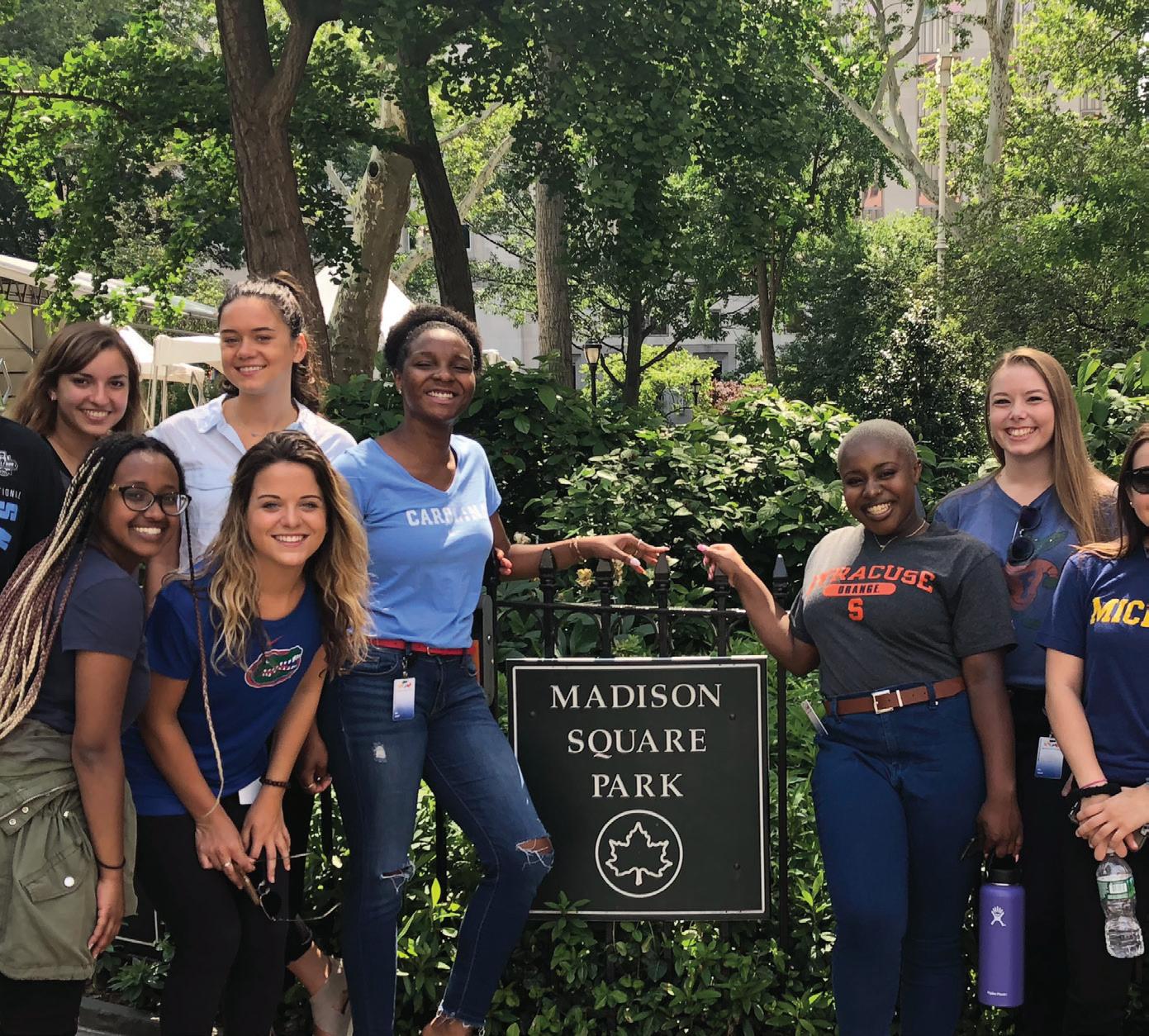
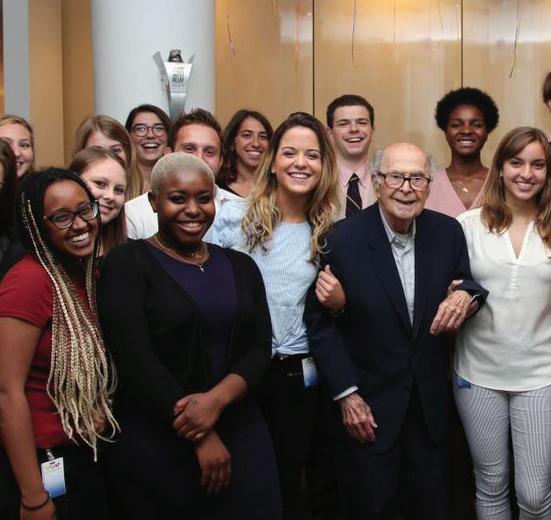
This Bank of America SVP believes financial education is key to helping the Latino community leave a lasting legacy.
Carla Molina
BY STEPHANIE ZEILENGA
Carla Molina boils her job down to one noble goal: Helping people achieve financial freedom. As senior vice president and communications executive at Bank of America, she specifically aims to help the Latino community through initiatives such as BetterMoneyHabits.com, a free online education tool that debuted a Spanish-language version in late 2018. “It’s a resource for anyone interested in learning more about strong financial habits, and not just Bank of America customers,” Molina says.
Better Money Habits was developed in 2013 with the help of Khan Academy, a leading online educator. The move to launch a Spanish version was informed by research. “We wanted to understand the unique needs of Hispanic consumers,
households, small businesses, and others, and their frame of mind when it comes to finances and financial information,” Molina says.
In recent research from the bank, Hispanics reported more stress about finances more than other groups, while they also prioritize smart financial habits, with 53 percent always tracking their monthly expenses, 31 percent always planning and sticking to a monthly budget, and 84 percent expressing a desire to learn more about financial topics like homeownership, investing, and retirement. “The appetite for the information is there, and I’m so happy and proud we’re able to fill this need,” Molina says.
The Spanish-language site is already showing success, outperforming much of its English content

on key engagement metrics, including average session duration, the number of returning visitors, and content completion rates.
Molina’s support for the Latino community doesn’t end there. She serves as executive sponsor of the Austin chapter of the Hispanic-Latino Organization for Leadership & Advancement (HOLA), Bank of America’s program to foster Hispanic-Latino employee growth. Through her role as sponsor, she mentors the chapter’s two heads, who are both Latinas. “We want to be constantly building that pipeline of talent,” Molina says. “My goal is to set my cochairs up for success, whether that means they are promoted within their current roles or through horizontal opportunities in the company. They’re now part of other leadership programs within Austin so they’re being exposed both within and outside the company to opportunities.”
Financial education—like that which Molina is helping provide—is key to helping people like Molina’s grandparents achieve success. “So many people who come here have to start over, and even though they may have been financially savvy back home, they still need financial education because the system is different,” Molina says. “Here, it’s OK to put your money in the bank—whereas it might not have been at home—because we have a sound financial system with protections for customers. If you just give them the information they need, they’re going to be able to succeed and contribute to our economy.”
THOUGHTS FROM OUR GUEST EDITOR:
She makes time for involvement in local organizations, as well, including the Austin Community Foundation’s Hispanic Impact Fund, a fundraising network supporting the advancement of Hispanic Central Texans. “We believe that when we support Latinos, the whole community benefits,” Molina notes.
“Carla’s commitment to bring equity and financial wellness into our community is admirable. Her work reminds us all that beyond fulfilling a job title is leaving a legacy that empowers and transforms generations to come. Gracias , Carla, por tu compromiso .”
Whether through Better Money Habits or her mentorship work, Molina says it’s all about legacy. “Many of our families came here to create a better life for the generation ahead of them. Legacy is such an important thing in our community for that reason, whether it’s in the form of your career accomplishments or your family’s trajectory.”
Molina, who has more than fifteen years of experience to her name, says being a Latina in the banking and communications field has been exciting but, at times, frustrating.
“We’re seeing so much opportunity,” she explains.
Molina’s efforts to lift up the Latino community stem from her own personal experiences. A first-generation American, Molina was born in Houston after her parents left Nicaragua before the 1979 revolution. Her grandparents soon followed, fleeing in the middle of the night and leaving behind everything they had worked so hard to achieve.
“They were in their sixties and didn’t speak English,” she says. “My grandfather retired from the military in Nicaragua and had to work as a janitor in America to make ends meet.”
“In the political landscape, for example, so many Latinas won positions in the last election. Being multicultural, we bring a different lens to the table. Thankfully, there’s increasingly more acknowledgment that diversity of thought is valuable. Our company is committed to that idea.”
Molina credits her success in part to an early mentor at Bank of America, Tony Allen (who currently serves as the provost of Delaware State University). Allen provided a strong example of an effective, caring leader—an example she still draws on today.
“So many people who come [to the United States] have to start over, and even though they may have been financially savvy back home, they still need financial education because the system is different.”
“As I’m leading my own teams now, I remember how he always had my back,” she says. “You learn so much from mistakes and having that support is invaluable to growth.”
The 2008 financial crisis, which occurred shortly after Molina started at Bank of America, also proved fertile training ground, helping her learn the ropes of navigating crises, understand the value of remaining calm during turbulent times, and see the big picture, including potential risks. Those experiences also helped Molina become more aware of her personal strengths, including her collaborative spirit.
“At Bank of America we talk a lot about our core values, and the two that have always rung truest to me are ‘trust the team’ and ‘deliver together,’” she says. “I feel so fortunate to work at a company that has everyone from the CEO down focused on our
purpose of improving financial lives. Finances are a massive thing that impacts so much of how you live your life and I know we are making a difference because we’re constantly asking ourselves, ‘How do we come together and positively impact the communities where we work and live?’ My job gives me the ability to deliver on programs that are moving the needle for people in a very real way and helping them feel empowered in their daily lives.”
Lopez Negrete congratulates Carla Molina on blazing trails! Carla has always set a sterling example of how to ignite the Hispanic market. As Bank of America’s Hispanic partner, we at Lopez Negrete know the courage it takes to blaze trails and why, together, we’ve led the charge when it comes to Hispanic marketing for nearly three decades. Today, Latinos are at the forefront of growth, so together with Carla, we work tirelessly to bring our Hispanic consumers the best tools and resources to better their financial lives. See the impact leaders like Carla have made with our clients at www.lopeznegrete.com.
Get to know the fresh voice of tech-savvy influence marketer Karli Henriquez—she’s permeating mainstream culture as we speak.
BY RUTH E. DÁVILA
INTERVIEW
PHOTOS BY CASS DAVIS

FFierce. Feminist. Influencer. Los Angeles-raised Karli Henriquez forged a path from radio to TV to the social media sphere. Today, she heads marketing for leading-edge tech company i.am+. Working at the intersection of lifestyle gadgets and pop culture, she scouts tech talent, innovators, and music makers—all while wielding a powerful social media presence. What better place for a Latina under forty to represent?
What does a day in the life look like for a director of music and influencer marketing?
Right now, we’re developing your future favorite artificial intelligence. I’ve been taking the lead on developing a network of global digital creators that are fans of the new media space. The creators I’m working with are young business moguls, entrepreneurs, tech journalists, and tech-savvy thought leaders. I try to stay on the pulse of whoever’s being innovative, whoever’s bringing something new to the table. On any given day, I could be releasing a zine with a top film photographer, I could be at the Grammys with an emerging artist, or I could be speaking at a local panel discussion on the importance of diversity in the tech space.
SEE OUR PHOTO ESSAY FEATURING KARLI’S INSIGHTS ON BUILDING A PERSONAL DIGITAL BRAND ON P. 10.

You’re known as an authority among influencers. How has influencer marketing evolved over the years?
The word ‘influencer’ is a new concept; it started with new media. People are just beginning to understand the value behind micro campaigning and micro activating with digital influencers—investing in a celebrity each time you want to promote a new product or brand is slowly becoming a thing of the past. It’s still so new, and explaining it is not easy. Sometimes people don’t understand the value of these types of marketing investments until they take the risk. Once you see an influencers’ insights and digital reach you will be very impressed. The digital media space can be very boutique, geo-curated, and make impact in a big way.

How does it feel to be a Latina operating in this emerging tech space?
It’s really important for me to be in the room, because the amount of Latinas in these tech conversations are very limited. One of the main things I realized at a young age is the lack of diversity in entertainment and tech at large. I knew I had the responsibility to pave the way in areas I had the power to change.
So, how do you leverage your position to drive positive change?
I leverage my position by exposing it to young women that are interested in exploring careers in entertainment and technology. I currently have three Latina interns. No shade, no tea—but those are my people.
I mentor young women utilizing my personal social channels, locally with once-a-month meet-ups, and I have a podcast in the works that will reach a bigger community of people. Stay tuned for that.
When you were growing up, did you ever imagine you’d have your own media platform?
I was raised in a very traditional home, with first-generation parents, so it made everything tough. My father is Colombian and my mother is Salvadoran. Most of our parents come to this country with a set of roles and limitations, and you’re raised to believe that this is as far as it goes. When I was younger, no one was telling me I could have a career in music or tech. I had three options: being a nurse (not even a doctor), a banker, or a wife.
A New Venture
Karli Henriquez is partnering with Marc De Jesus to launch a new agency, Know Alias, in 2019. The duo bring more than fifteen years of experience to the start-up, described as an artistmanagement, tour-management, and brand-development agency. “We’re very excited to see where this new business venture takes us,” Henriquez says.
When did you break through from your traditional anchors?
At twenty-one, I moved out of my parents’ house. It almost gave my grandmother a heart attack, but it was the best move I ever made for myself. That’s the moment when I truly became independent. I said to myself, “OK, Karli, you wanted your freedom. Now, what are you going to do with it?”
I got hired by iHeartMedia and wasn’t really aware of the access I was getting—to concert tickets, red carpet events, and more. I’m proud of myself for not going in the wrong direction, and I give my family credit for that. When the opportunity to become an MTV VJ came around, that’s when the real access and money came. One regret is that I wish I had done something with the money I made at such a young age. I hope to one day offer better financial tools to our community of young creators/ entrepreneurs.
Any career regrets so far?
I’ve made many mistakes—one of them is trusting people who really didn’t want the best for me. But it allowed me to realize the type of people I wanted in my life and the types of conversations I wanted to be a part of. I got scrutiny for not being at every single party in my early twenties, but it helped me to filter out which ones were to my benefit.
To succeed in this business, it’s a science: You have to identify your path. So I told myself, “You have to represent your community, make your family
proud and you can’t be wasting your time.” As the saying goes, “Dime con quién andas y te diré quién eres.” The moment you start to spend time with people who are not as driven as you, you begin to get uninspired and lazy.
Thankfully, my man, my friends, and my family have been a great support system. My sister, Emely, keeps it real for me all the time; she’s the greatest gift my parents gave me.
How did you cultivate such an impressive social media following?
Working for KIIS FM in Los Angeles and hosting an MTV show, I gained a lot of followers. My followers on Instagram have been there for me since day one, and they’re just wanting to see me win. I love them! A large group of my follower count are women, mostly Hispanic. They’ve grown with me. The more candid and transparent I become in sharing my fears, my failures, and accomplishments, the more they value sharing that digital relationship with me.
At what point did you realize that you had finally arrived?
I’m not there yet. When I’m at Oprah’s house picking vegetables with her—that will be the moment I’ve arrived. For now, all I can say, to myself and my followers, is: “Chill, girl, you got it under control. Enjoy the journey—it’s not all going to happen at once.”
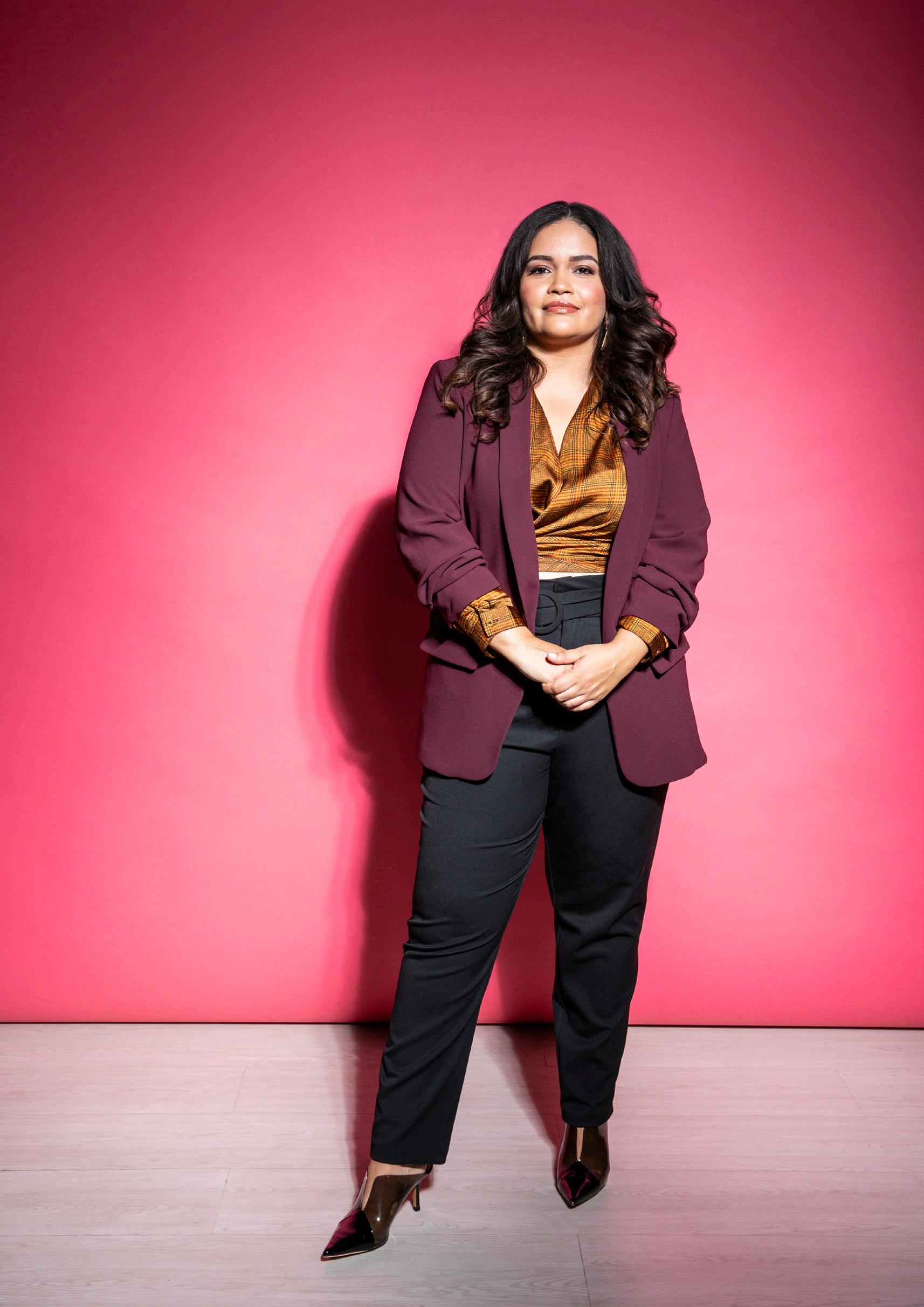
Acclaimed journalist Maria Elena Salinas has left Univision, but continues to drive political engagement.
Maria Elena Salinas
INTERVIEW BY RUTH E. DÁVILA
PHOTO BY CASS DAVIS
The New York Times calls her “the Voice of Hispanic America.” For most US Latinos, she needs no title.
Maria Elena Salinas spent nearly thirty-seven years as an anchor and correspondent for Univision, her words and likeness wired into our homes and hearts. From shaping stories on everyday heroes to thoughtful interviews with heads of state, Salinas has covered every spectrum of society.
A year after stepping down from her post at Univision, Salinas reflects on her latest professional projects, political involvement, and most salient media moments.
You’ve noted that your life’s mission is to inform and empower Latinos. How did you find this mission?
When I started my TV career in the early ‘80s on
Channel 34 in LA, there were only 14 million Latinos in country. The community had a thirst for information. So many were immigrants, and they didn’t know how to navigate this ‘adopted’ country. Since I covered politics heavily in the beginning, I realized that Latinos often were not engaged in the political scene; they felt disenfranchised. I felt they wouldn’t ever gain representation if they weren’t well informed, so I made it my mission to change that.
How do you continue to live out that mission after leaving Univision?
I’ve spent the past year taping my final season for “The Real Story,” and the rest of it doing civic engagement work—speaking to students at universities, giving speeches, participating on panels. I was always active in the community, but I was represent-
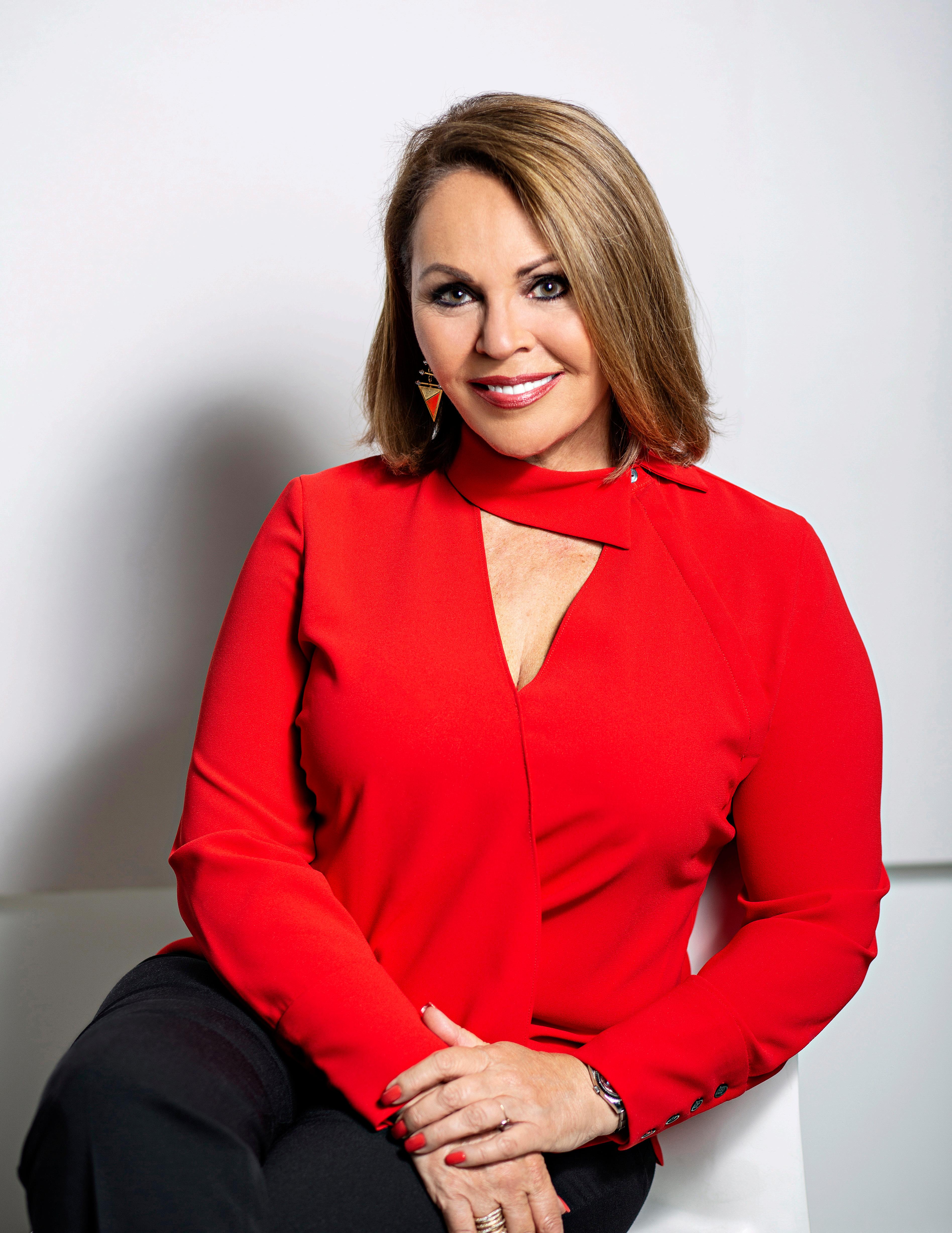
ing a company. Now I’m doing it on my own, so I have more freedom to speak my mind.
Which causes do you support? Have they evolved? My passions are still the same: the Latino community, empowering women, and supporting Latino students and education.
I teamed up with Mi Familia Vota on a campaign to get Latinos to register and vote. The political empowerment of the Latino community is not something you do only around elections. Right now, the line between ‘us’ and ‘them’ seems to be widening. We can erase that line if we get people engaged.
Among other projects, I became involved with a company called She Works. It has a technology that allows companies to hire women to drive diversity on their staff and enables women to work remotely. I’m also on the board of the Hispanic Scholarship Fund and attend those events throughout the year. And I’ve continued to fund my scholarship for Latino students through the National Association of Hispanic Journalists.
Our recent Leading Latinas event in Miami seemed to be right up your alley. Any “a-ha” moments during the dinner?
It was awesome; there was a very diverse group of Latinas, and it felt like a community. The speech Eva Hughes gave about evolving her career was something I could relate to entirely. It reinforced the idea that you can reinvent yourself. Reinvention comes in many ways, and in our case, it’s after you’ve had a successful career.
What was your process for deciding to part from your illustrious career at Univision?
There were so many factors—personal and professional—that led me to do this. I knew several years before that I was going to make the step one day. But as with any life-changing decision, I had to prepare mentally, emotionally, and financially.
I’ve always followed this theory: Don’t be a conformist, and don’t allow yourself to be mediocre. I try to do things to the best of my abilities, and I’ve wanted to grow in every job. I’m a workaholic. I must have OCD. I’ve been working since I was fourteen, and I can’t stop even now.
What was your first job, at only fourteen?
I worked in a clothing factory. I needed to help my parents pay the rent. We were poor, but I didn’t realize it. I’ve always been grateful to my mother for that. She was a seamstress. We always wore nice clothes because she made them for us. I didn’t stop working a steady job until leaving Univision in 2017.
How has life on your own treated you? Any big surprises?
I’m beginning to understand what it means to be independent. And I don’t mean to be an independent journalist or producer but to be in control of your time and life. I’m finally beginning to understand that I can do whatever I want.
I want to work on projects that advance my interests. That gives me a lot of satisfaction. Some people say, “Don’t you miss being on the air? Don’t you feel like that’s how you contribute?” No, I don’t. I closed that chapter. I’m ready to move onto a new one. I opened up a production company and I’m in the process of exploring all the different possibilities.
Across your trajectory, you’ve produced some amazing stories. Which was the most impactful, personally?
Throughout my career there were many stories that touched me. One thing I realized toward the end, what I liked more than anything else was long-form. To have an hour to tell the story is a real privilege.
One of my favorite specials was Latinación—my response to all the negativity against Latinos right after President Trump claimed that Mexicans were sending rapists and criminals to this country. Instead of fighting back and saying “you’re wrong” or calling out racism, we
“I’ve always followed this theory: Don’t be a conformist. Don’t allow yourself to be mediocre. I’m a workaholic. I’ve been working since I was fourteen and I can’t stop even now.”
created a two-hour special highlighting all the contributions of Latinos. I interviewed incredible subjects who made me feel so proud to be a Latina. If I could only multiply that and do that all the time, I would.
Have you ever refused an interview or a story out of principle?
Absolutely. I did reach a point in my tenure where I could refuse to do something. There were many occasions in the newscast where I said, “This is not right, accurate, or worthy of our audience.” It’s an uphill battle, but I did it many times. Let’s just say that I was not a ‘yes man.’
You’ve said you’ve always struggled to strike a balanced life. What did you mean by that?
Work and family balance was tough for me. One of the most difficult things was being a mom and a professional. I’ve always wanted to make sure that I gave my daughters the best quality time, because I couldn’t give them the quantity. My job required me to travel, and that made me feel guilty. I was a mom 100 percent when I was with them and then fully dedicated to my work when I was on the job.
When they were younger, it was hard; they wanted me to stay home. When they got older, a few times I took them on assignments, to journalism conferences, and to events. When I would receive awards, I would invite them to join me to hear why I was being honored. I thought they would get the message that their mom was doing something meaningful.
Which recognition, great or small, has been the most meaningful for you?
In my home office, I have ten Emmys, a Walter Cronkite award, a Peabody, two Gracie awards, and recognitions from several Latino organizations. I’ve been inducted into the Hall of Fame of the National Association of Broadcasters and the Broadcasting & Cable Hall of Fame, I’ve earned seven lifetime achievement awards, and a lifetime achievement Emmy. (I joke that when you get one lifetime award, it’s an honor; when you get two or three, it’s a message.)
The day that I announced that I was leaving Univision, in August 2017, I went home and stayed up reading my social media messages until 3 a.m., crying. I was shocked and surprised by the comments. People were being very kind and expressing how they felt about me, how I had accompanied them in their lives for so many years.
I suppose that accolades from the audience about what my work means to them is one of the best awards. Being off the air for more than a year, it’s an honor that people still remember me and respect my work.
HEAR MORE
Listen to Maria’s interview on the podcast Latina to Latina by Alicia Menendez. www.latinatolatina.libsyn.com
Latina Entrepreneurs
Latina-Owned Business Size*
25 % of all Hispanic-owned employer businesses are owned by Latinas
$ 66 B
Annual sales generated by Latina-owned employer businesses
64%
Microbusinesses (< $50K)
32 %
Mid-size businesses ($50K–$1M)
4 % Scaled ($1M+) businesses
87 %
Growth in the number of Latinaowned businesses between 2007 and 2012, the largest increase in female business ownership of any race or ethnic group
10 %
The yearly growth rate of Latinaowned employer businesses, which is four percentage points higher than that of male-owned Latino employer businesses
“Pushed”
Latina entrepreneurs cite more “push” factors as reasons for becoming an entrepreneur than their male counterparts, most notably the need to balance work and family, and the need for more flexible hours (men cited “pull” factors such as greater income opportunities)
40 % of Latina entrepreneurs feel they are not qualified to access funding from financial institutions
*Size of business defined by annual gross revenue
are employed by Latina-owned businesses
SOURCES: “2017 State of Latino Entrepreneurship” and “2018 State of Latino Entrepreneurship,” Stanford Latino Entrepreneurship Initiative

A Mexican-Swiss diplomat and humanitaria who served as a special adviser to the United Nations, Claudia Romo Edelman offers her unique perspective on being a US Latina after moving to America five years ago.
AS TOLD TO KATHY KANTORSKI
“I have been working in the humanitarian, social-impact world for the last twenty years. I’ve had the privilege of working at the UN refugee agency, for UNICEF, for the UN’s secretary general, and the World Economic Forum. I’ve been working on global and humanitarian affairs for most of my life.
Despite the negative news we’re bombarded with these days, I truly believe that the world is getting better. The world is making progress. For girls, there is no better time to be born in human history than today. There’s no better time for
women—and men—to have the opportunity for healthcare, education, avoiding poverty, the right to vote, access to electricity, etc. While there is still much to do, the progress that has been made should not be diminished. I am an optimist because I know that it’s possible to have a better world and a prosperous future for all.
My biggest fear comes from the growth of divisive language. It’s everywhere and it’s creating a sense of division that could negatively impact the progress the world has made to date.
Reflecting on the initiatives that I have been involved in and the progress that I have seen, I was inspired to act against the growing divisiveness, working to remind everyone of our shared humanity.
In my career, I’ve worked to fight diseases, such as AIDS, that appeared to move faster than science. But this divisiveness we’re experiencing—this is not a science, this is not a virus, this is us. We have to flex that muscle to see people as people and not see them as a Democrat or a Republican, as rich or poor, Caucasian or Hispanic. We just have to see each other as humans and allow each other the right to have a dream, to have equal access, inputs, and outcomes. That vision is at the heart of the We Are All Human Foundation, which we founded
“We are all human, therefore we deserve the same salaries. We are all human, therefore we deserve to have an opportunity to be recognized and valued for our contributions to society.”
in 2017. People are more the same than they are different, and those differences should be celebrated rather than discouraged: Every human to value every human.
Five years ago, I moved to America and, for the first time in my life, I observed what I like to call a ‘reverse marketing’ situation involving US Hispanics. In the work that I’ve done over the years, I was usually trying to elevate the awareness of a negative product or issue—like poverty—and worked to position it properly in order to engage consumers. In the case for US Hispanics, the opportunity is amazing, and yet still largely unknown. Hispanics make up more than 18 percent of the US population, 12 percent of the annual US GDP, and have annual consumer purchasing power of $1.5 trillion. For these reasons and many more, Hispanics represent the largest opportunity for growth of the US economy. However, when examining the ‘packaging’ of this opportunity, the misrepresentations and underrepresentation of this community tells a different story. For the first time in my life, I see the ‘packaging,’ so to speak, as being far worse than the ‘product.’ And not only is the packaging affecting the perception of non-Hispanics, but it is negatively impacting the confidence and growth of Hispanics themselves.
the answer. It came down to two main issues: The Hispanic community is unaware of the strength of its own story, and the Hispanic community does not represent its interests as one unified community.
THOUGHTS FROM OUR GUEST EDITOR:
“Claudia’s purposeful spirit is not only inspiring but contagious! Her gift to the world is the ability to connect the dots, enable connections, and create momentum for hearts and minds to unify and believe in the power we have as ONE. I cannot wait to continue to support Claudia as a leader and also as a friend in her path to elevate the role we play as a force for growth and influence in the United States and beyond.”
When we shared basic facts about the power of the US Hispanic market to participants in our study, 77 percent were surprised by the statistics. They were surprised to hear the numbers that give dimension to our community’s size. They were surprised that Latinos create small businesses faster than anyone else, that we contribute 12 percent of the US GDP—all of these things Hispanics should be proud of, but of which many have no idea. Hispanics do not know their own power.
My goal is to reduce that lack of awareness from 77 percent to 30 percent in 2019, and down to 15 percent in 2020. When you know that you’re strong, you exercise your voice. This is our time. There is no better time.
Hispanics have never been stronger. However, we’ve also never faced so many political pressures. This community needs to be united and it needs to unite now.
The question is: Why? Why are the numbers and potential so powerful, but the reality of its appreciation so weak? Our foundation conducted the Hispanic Sentiment Study and partnered with a number of Hispanic organizations to find
When I worked in the public health sector on AIDS and HIV, we faced incredible donor fatigue. There already had been thirty years of fighting the pandemic, and donors were saying, ‘That’s enough. When are we going to finish with this?’
The trouble was there was a very fragmented approach to dealing with the virus, and it continued to kill people every day. Religious leaders were focused on opposing the distribution of
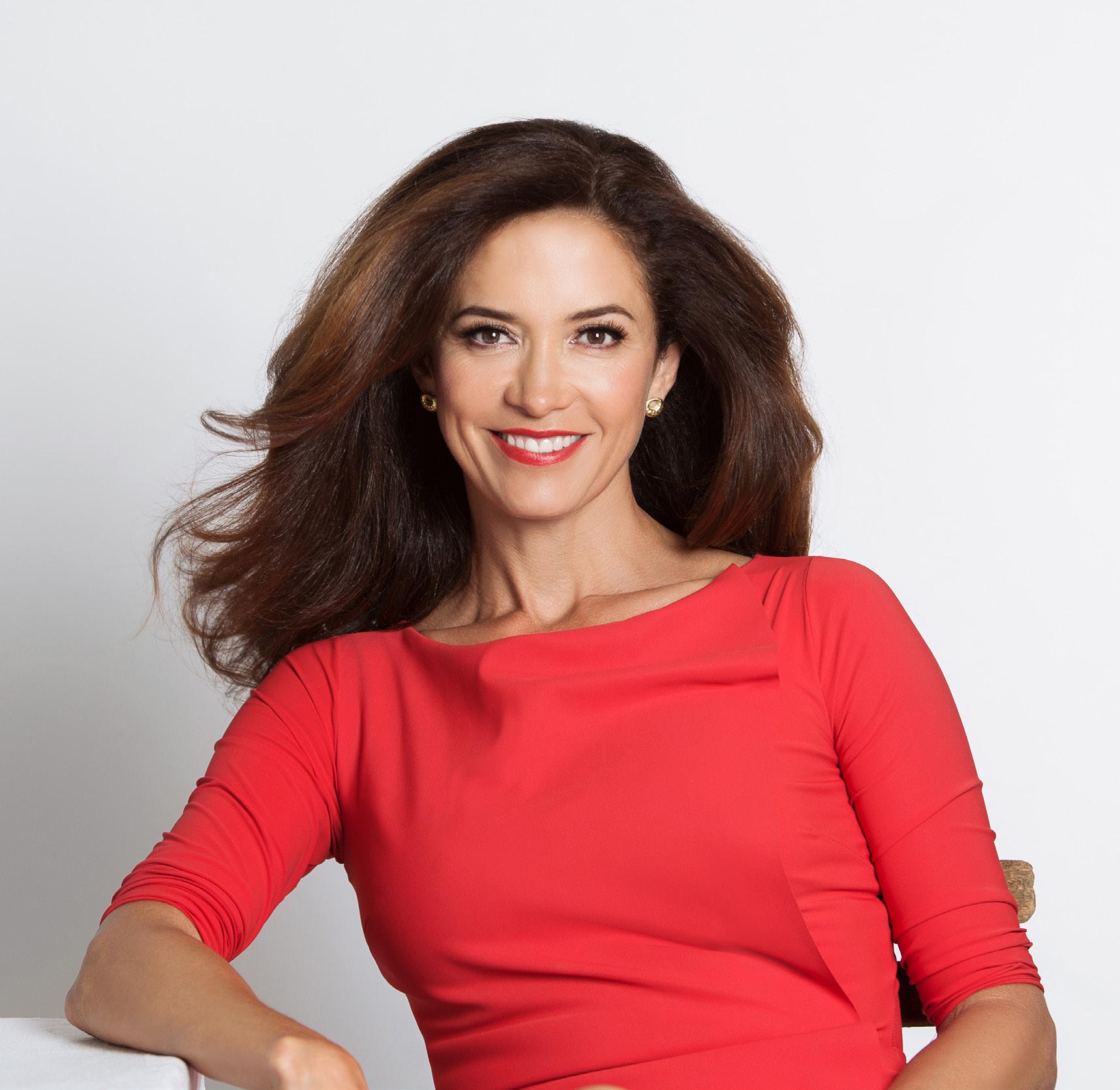
condoms. The NGOs were lobbying to pass legislation. Everyone was doing their own thing. The Hispanic community is great, but it’s fragmented, like that approach to HIV was. Everybody is doing their own thing.
To combat HIV, we had to unify religious leaders, NGOs, pharma, and the government. We had to get the big picture, get them to focus on the question: ‘How are we going to stop this virus from killing our people?’ It took some time, but we finally got all stakeholders working together, using their voices
towards the common mission, and we ultimately saw success combating the disease.
Once you have clarity around your goals and collaboration within your community, your voice can be heard and change can be made. I’ve seen it.
I’ve done it. It happens. It is possible.
At the Hispanic Leadership Summit in December, we defined a shared agenda, called ‘Vision 2020.’ It has three key priorities: access to education, financial empowerment, and improving the image of Hispanics.
“Once you have clarity around your goals and collaboration within your community, your voice can be heard and change can be made. I’ve seen it. I’ve done it. It happens. It is possible.”
For the next two years, if everyone is working on these three things, the Hispanic community will be in better shape. We’ll change our future, our destiny, because we’ll be able to elevate our community.
We have until the next election in 2020 to make sure that we’re not invisible, but visible; that we’re not voiceless, but we have a voice.
The jump between feeling Hispanic and acting as a Hispanic community is not that large. It is a jump that requires focus and discipline and rigor just like any other campaign. My intention is to use one to two years to make that transformation.
We Are All Human is a mechanism for activating these efforts and the efforts of the Hispanic community, working with companies and organizations, and using tactics such as storytelling and advocacy efforts. We want our foundation to be a vehicle to move the hearts and minds of people, to shift their opinion, their mind-set, and their behavior. Each foundation initiative has a lens of opportunity and empowerment for everyone, with ‘We are all human’ as the underlying narrative.
We are all human, therefore we deserve the same salaries (Hispanics are the lowest-paid demo-
graphic). We are all human, therefore we deserve to have an opportunity to be recognized and valued for our contributions to society. With the foundation, we represent these ideals publicly while uniting our community at events like the Hispanic Leadership Summit.
My message for Hispanic Executive readers is this: Be a role model for the Hispanic community, show them their beauty as professionals, as leaders, as innovators, as dreamers. Show the Hispanic community by lifting a mirror, saying, ‘Look at us, we’re powerful.’ And do this with the goal of helping the community unify as one. Let’s be one. We may be Mexican, Colombian, Cuban, Venezuelan, but we can also act as one unified Hispanic community.
So my desire for 2020 is: Let’s be one. Let’s have our voices heard.”
MORE TO SAY
Hear more from Claudia in her podcast, Global Goalscast, now in its second season. www.globalgoalscast.org
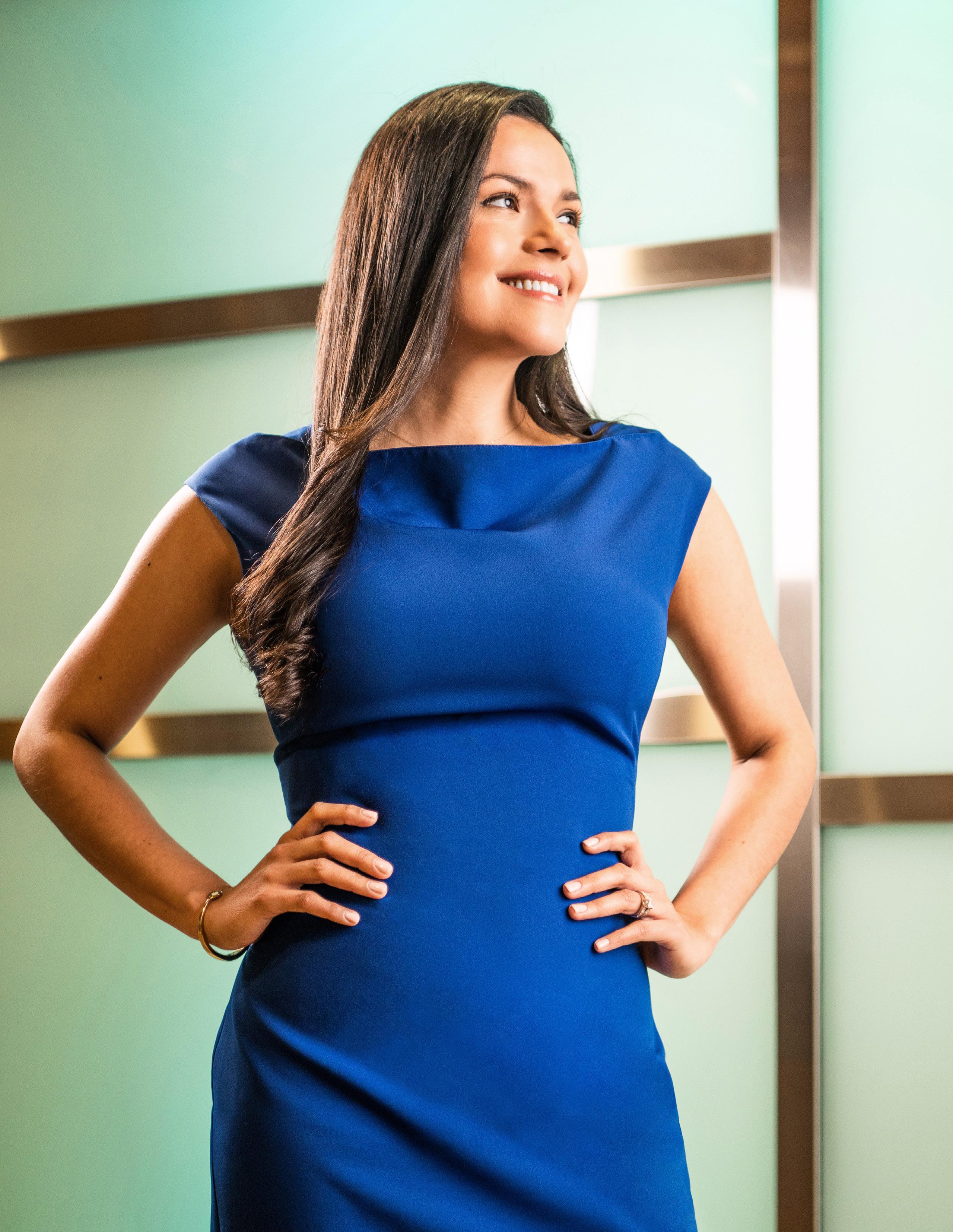
In the first generation of Latina managing partners at New York Life, this Latina’s self-fulfilled prophecy of empowering—financially and professionally—the local Latino community is a full-fledged symbiosis.
Citlalli Rojas
Afriend came to Citlalli Rojas, looking for advice about making a career change. “He was unhappy and felt like he wasn’t making a difference,” Rojas remembers. “He mentioned that he was envious of my job because I was really helping people in times of need. My conversation with him made me really appreciate the career path that I took.”
As a managing partner at New York Life’s Inland Empire General Office, Rojas had always relished her opportunity to generate growth— personal and professional, for herself, for new financial professionals, for her organization, for clients. With that ability to help in full perspective, and in learning that she is part of the first generation of Latina managing partners for the company, a passion in her ignited: to elevate and empower Latinas both within and outside of her industry.
BY LIOR PHILLIPS
Rojas spent her childhood in Mexico, but decided to seek out new experiences at age eighteen and moved to Texas to attend college. “In order to grow you need to make sacrifices, and for me that was leaving my family and friends in search of my American dream,” she says. In her first few months in a new country, Rojas quickly learned that if she worked hard enough, anything was possible. She found herself immediately drawn to the financial field, graduating in just three years with a degree in business administration and finance.
Growing up in Mexico, Rojas noted that many people around her weren’t properly planning for their future. She saw a career in finance as a way to help others from falling into that same trap. Coming out of her first job interview, Rojas remembers calling her father to ask how much life insurance he had. “It’s just not necessarily a topic that comes up on a
day-to-day basis, but it’s one of the things that can really make a difference,” she says. “Our culture is very family-oriented, so we could position life insurance as a way to protect families.”
Her arrival to the job market, though, appeared at first to be ill-timed: Rojas had graduated in 2008, in the midst of a recession. “Everyone was just saying, ‘Yeah, there are no jobs,’” she says. Luckily, Rojas was introduced to someone at New York Life, who helped her land an internship with the organization.
Not long after, Rojas had earned a full-time position and knew she had found a career in which she could make a difference. Moreover, she had been given an opportunity by a female manager of Fillipino descent, a woman who stood as an inspiring professional and an inspirational symbol of possibility. Over the decade that followed, Rojas rose in the ranks, from agent to partner to senior partner, eventually becoming managing partner in 2016. But that rise wasn’t without its struggles. “When I became a partner in 2013, I realized that there were not many women managing partners,” she says.
Although she felt that anything was possible with the right dedication, it was clear to Rojas that the opportunity was a blessing, not a given. “I looked around and felt that Latinos in my community would be fantastic on this career path, but the opportunity I had may have been less available to others,” she says. Changing that reality quickly became a big motivator for Rojas. Both by serving as a role model and by actively encouraging others, Rojas decided to make a mark on the industry by improving Latino representation.
“From the early stages of her career, Citlalli’s passion and vision to help the Latino community grow financially propelled her to grow personally and professionally,” says Liliana Canedo, head of the Latino Market for New York Life.
Rojas quickly learned that her passion aligned with New York Life’s values. The manager who helped give Rojas her start wasn’t the only minority professional in the organization—far from it, as
New York Life prides itself on rewarding exceptional performance regardless of a person’s background. Moreover, being able to represent and assist the diverse cultural markets which it works with is essential to New York Life’s identity. The organization’s offices are intentionally composed of diverse nationalities and backgrounds.
In the five years since she became a partner, the number of women in managing partner positions has nearly tripled. While New York Life continues to make strides in diversity, Rojas believes that all of corporate America needs to continuously strive for further diversity in order to bring in new voices and perspectives, and she is proud to be a part of that push.
In the incredibly diverse Southern California market in which Rojas works, more than 50 percent of the population is Latino. For that reason, Rojas’ focus has strategic business value: when leadership reflects the customer base, its improved understanding of—and community ties to—the market becomes a competitive advantage.
“We have amazing leaders and tremendous support in the Latino market,” Rojas says. “We can reach out to Latinos to truly help them cover their needs, which is so important.”
When looking for the right candidates to continue that positive community stewardship, Rojas has a few key characteristics in mind. “We focus our efforts in recruiting in the area, looking at people with determination and integrity,” she says. “The beauty of our organization is that we have the resources to help them develop the necessary skills.” To both potential New York Life employees and current teammates, Rojas stands as an example that more women can be involved in financial services. Additionally, as she considers her success a product of New York Life’s Latino market strategy, Rojas is proud to impact the caring and talented leaders in the group, showing them the path to success and giving unconditional support. “Accomplishing that success is very humbling,” she says. “Because helping others is the core of everything that we do at New York Life.”
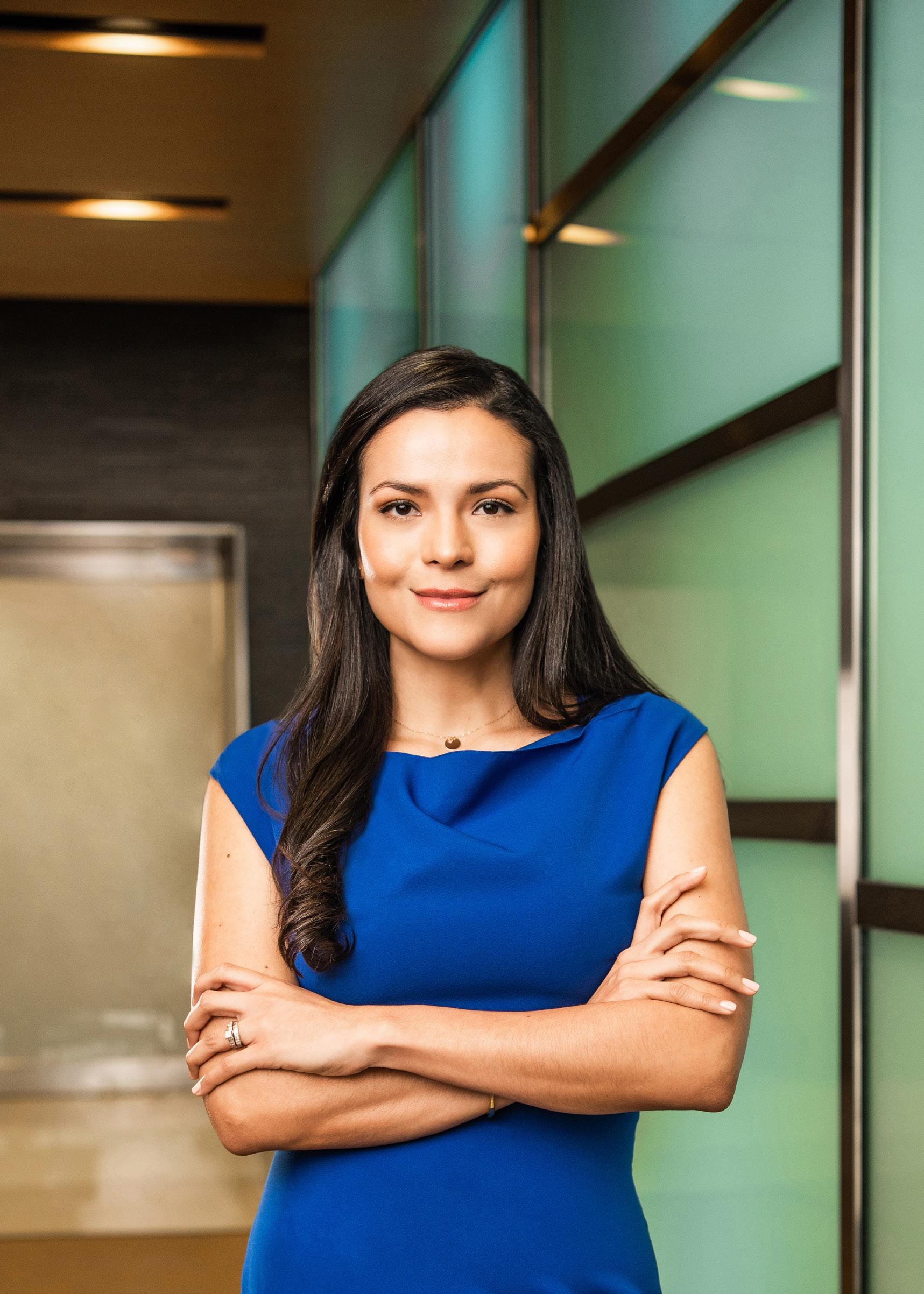
Rojas isn’t the only one in the organization feeling empowered by her rise to managing partner. When the news of her promotion was announced via a story in New York Life’s internal magazine, the response was overwhelming. “Employees across the company, some that I had never met, were writing to congratulate me and tell me that they were sharing
my story with their daughters and granddaughters,” Rojas says. “I didn’t realize how impactful my story could be. My response was simple: ‘If I can do it, your daughter or your granddaughter can do it.’ At the end of the day, opportunities are and should be available to everyone, and it fills me with pride to know that I can help people to believe in that.”
Zoe Saldana tells a story of choosing sisterhood over competition that every woman should hear.
Last November, Zoe Saldana joined fellow Latina actors and activists America Ferrera, Eva Longoria, Gina Rodriguez, and Rosario Dawson in Florida to rally the Latino vote for the midterm elections. The collaboration was forged to raise awareness and emphasize the importance of voting, but it ended up doing so much more.
“The first thing we did when we were all together on that trip is: we sobbed,” Saldana says. “It was so emotional because every other time in our lives, we would have been so afraid to be in a room together. We would have been worried, ‘Oh, is she going to take my job?’ Because, including the women outside of our community, there’s only one door that opens and it’s 60,000 of us trying to get through. Fear was paralyzing us and kept us away from each other.”
Saldana points to the 2018 launch of the Time’s Up movement as an initiation of the unification of women. “January 1, 2018 is a very powerful date in my life as a woman, regardless of what kind of woman I am,” she says. “January 1 let each and every one of us know that we have the responsibility of taking care of each other. We all believed, we all promoted it, we all talked about it on social media. We were all sent the
BY KATHY KANTORSKI
email, we were all sent the letter. On January 1, 2018, we all became accountable for each other’s welfare and well-being. So every time you look at a woman, whether she’s Latina, white, Asian—you look her in the eyes and you know that you have her back.”
The sisterhood that Time’s Up created was prevalent when the group of Latinas met for the November Florida gathering. Saldana says, “[Since the Time’s Up movement], we now have this responsibility of coming together and being good citizens, being good women, being good artists, and being good sisters. It took a weight off and we were able to just embrace each other. I love each and every one of them; there is nothing I wouldn’t do for them.”
READ OUR CONVERSATIONS AT THE TOP FEATURE WITH ZOE SALDANA ON P. 46.
PHOTO BY PETER YANG

Finding the sweet spot between the public and private sectors, the VP of public affairs for multibillion-dollar Grupo Salinas strategically aligns her nonprofit board work with both the company’s goals and her own passions.
Nathalie Rayes
BY RUTH E. DÁVILA
It was April 2013, and President Obama was preparing for a state visit to Mexico. Nathalie Rayes stood in the intimate Roosevelt Room of the White House, among thirteen other experts briefing the president for his journey. It was a bucket-list moment, and it clicked: She had become one of the nation’s leading authorities on US-Mexico relations.
Rayes—vice president of public affairs in the United States for Grupo Salinas, a $6 billion Mexican group of companies—now uses her authority to ensure other Latinas have a seat at the table, whether in politics, business, or the social sector.
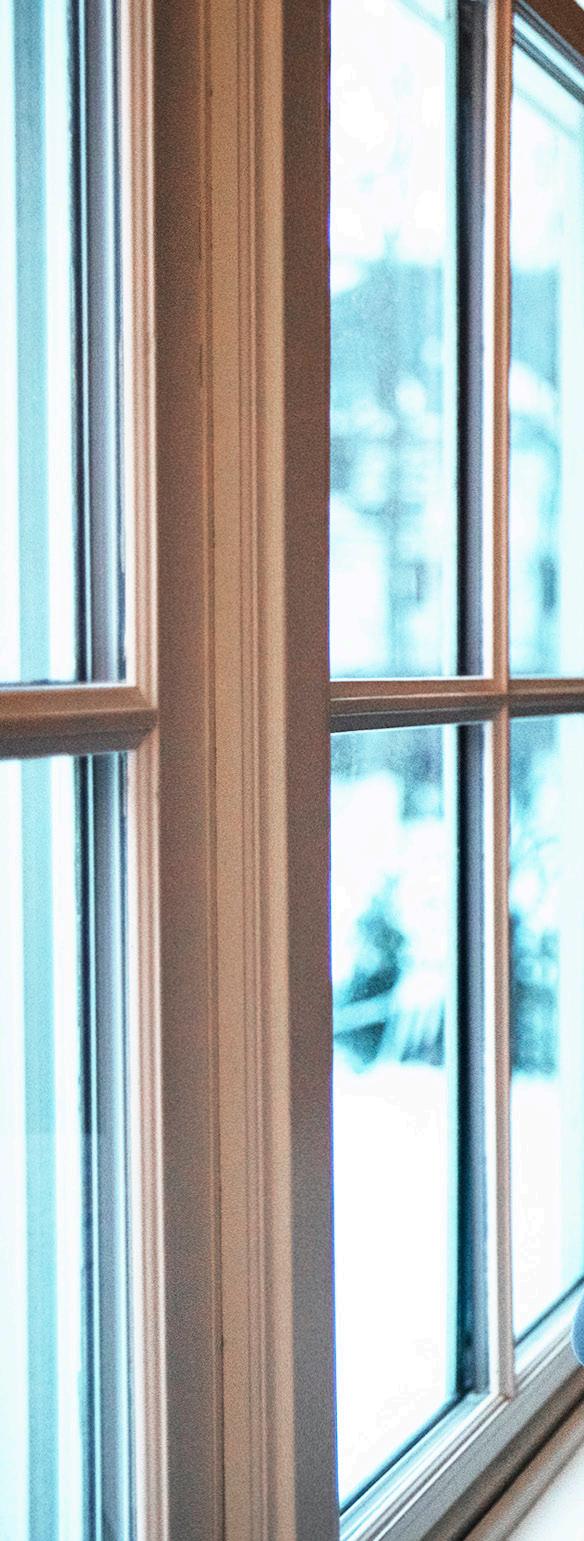
When she was nine years old, Rayes emigrated from Venezuela with her Lebanese-born parents. She knew no English (“not even my ABCs,” she recalls) and faced an uncertain future. Just one year later, her father died, leaving her mother widowed at age thirty-seven. Rayes swung into caretaker mode for her four siblings, fueling a work ethic and ideals that mark her today.
Curious about the world and civilization, Rayes earned a sociology degree from UCLA and planned to study law. To gain experience, she landed the most relevant job she could find: field deputy for LA council member Mike Feuer. It was there, face-to-face with the

street-level impact of legislation, that Rayes found her new calling. She returned to UCLA to earn a master’s in public policy and secured a prestigious policy fellowship with the State Department in Cairo, Egypt.
A short time later, LA Mayor James K. Hahn appointed Rayes as his deputy chief of staff.
“I was twenty-six, directing a portfolio of inter-government relations for the second-largest city of our country,” Rayes says. “For four years, I gave it my all. It was an incredible job that shaped not only my political ideas but my understanding of how important government is in our daily lives. To this day, people still remember me for that role.”
Hahn went up to bat for a second mayoral term, and his team—including Rayes—threw their souls into the campaign. When he lost to Antonio Villaraigosa, Rayes was emotionally cashed out. As her last official act for the city, she kicked into caretaker mode (as she had done with her siblings growing up), helping to set up jobs for around thirty people on the mayor’s staff, and then retreated to Europe and the Middle East for a year-long sabbatical. During her travels, she helped set up Sister Cities between LA and Ischia, Italy, as well as with Beirut, Lebanon.
Upon her return in 2006, Rayes received an intriguing offer from Grupo Salinas—a fast-growing
“Do things all the way—with passion, devotion, dignity, and love. Once you find your element, everything else just aligns and flows beautifully, from economics to love and passion. It’s greater than you.”
Nathalie Rayes’ Playbook for Board Work
The common thread across Rayes’ personal and professional lives is an impressive list of national boards on which she serves. Here, she shares her strategies on earning and leveraging board seats for a greater good.
EARN CREDIBILITY
Rayes advises leaders to serve on boards where they offer unique knowledge. “You’re an expert when you have something to contribute that is truly valuable. I’ve tried to make myself that added value in different spheres,” Rayes says.
technologically advanced group of companies with operations in broadcasting, retail, financial services, telecom, and other industries. (It owns Latino household names like TV Azteca and Grupo Elektra and is cited as the second-largest TV content producer in the world.)
Leading Grupo Salinas’ public affairs efforts stateside, out of her Boston-area home, Rayes spends her days advancing its interests. That includes everything from advocating for healthy US-Mexico relations to managing PR for founder Ricardo Salinas (a “true intellectual,” she says, who publishes regularly in outlets like the Boston Globe and The Hill ). Rayes also leads the group’s philanthropic activities in the United States, funding programs that drive Hispanic civic participation and community engagement.
“My dad died at forty-seven; I’m forty-four now,” she says. “This is the opportunity I’ve been given. I will rise to any and all occasions. I feel like I’m making real impact, and you can’t beat that satisfaction.”
But expertise alone won’t snag the best board positions; it’s also about your track record and your presence. “Your reputation is everything,” she says. “If people trust you and like you, they’re willing to do everything. You have to be ethical, kind, respectful—all these things are important not only personally but as a corporation.”
MAKE IT A WIN-WIN
“My time is finite and it’s my most important resource,” Rayes says. “I align Grupo Salinas’ interests with the boards I serve on. That’s critically important for me. If I’m going to sit on the board, we’re going to advance our common interests together.”
Rayes only sits on boards whose issues she’s passionate about. Latino Victory, for example, grows Latino power at all levels of government. Hispanic Federation, which Rayes chairs, is a broad-based Latino organization supporting everything from education to health to disaster relief.
STAY GOAL-MINDED
“Living your life to the fullest potential— that’s my personality,” Rayes says. “Do I think I’m a super hero and can do it all? No, but I’m a planner and organizer and don’t leave what I can do today until tomorrow.”
Although she checks off a massive to-do list each week, Rayes says her mantras are the big goals. “I have my goals on my desk— and a calendar for the whole year, printed out month by month. Very little movement will happen, but of course, you have to be limber and flexible to great opportunities that align with those goals. I am surrounded by visionaries and doers.”
The multi-year goals for Grupo Salinas that appear on her list include:
1. Improve economic opportunities for communities
2. Generate capabilities for social and environmental value creation
3. Build capacity in leadership across sectors
4. Increase elected Latinos into office
5. Promote potential of Western hemisphere
6. Engage communities to be civically minded and active
COLLABORATE
The most complex goals are only achievable by working together, she adds. “Working in isolation is a mistake. I like to share, collaborate, and get new ideas constantly. People who say, ‘I made it on my own’ could have been incredibly more successful if they had collaborated with other people.”
Case in point: Through Hispanas Organized for Political Equality (HOPE), she collaborated to create a nonpartisan, binational leadership program to build awareness and capacity among highpotential Latinas in the United States and Mexico. Its curriculum—designed by the Woodrow Wilson Center, of which Rayes was appointed by President Obama to serve as a board member—covers critical issues, from cybersecurity to trade.
CONNECT THE DOTS
“Your affiliations are like a portfolio of investments—greater than the sum of their parts,” Rayes says. Inspired by Ricardo Salinas, founder of Grupo Salinas and global leader, Rayes helped create the Aspen Institute Mexico, part of a global network headed by the Aspen Institute in the United States, which has become a benchmark for debate and leadership forums. This collaboration was inspired by Ricardo Salinas’ Ciudad de las Ideas, a threeday conference held in Puebla, Mexico, convening brilliant thinkers, scientists, and leaders in a forum of thought. Rayes ushered HOPE’s binational fellowship class to the conference, expanding their horizons while fostering better relations across borders—all of which line up to meet Grupo Salinas’ goals.
These types of connections abound “when you’re doing things all the way— with passion, devotion, dignity, and love,” Rayes says. “Once you find your element, everything else just aligns and flows beautifully, from economics to love and passion. It’s greater than you.”
Learning from firsthand experience what it means to be flexible for working parents, Norma Cordova has developed an empathetic style that builds and retains great teams.
BY RHIANNON ROOT
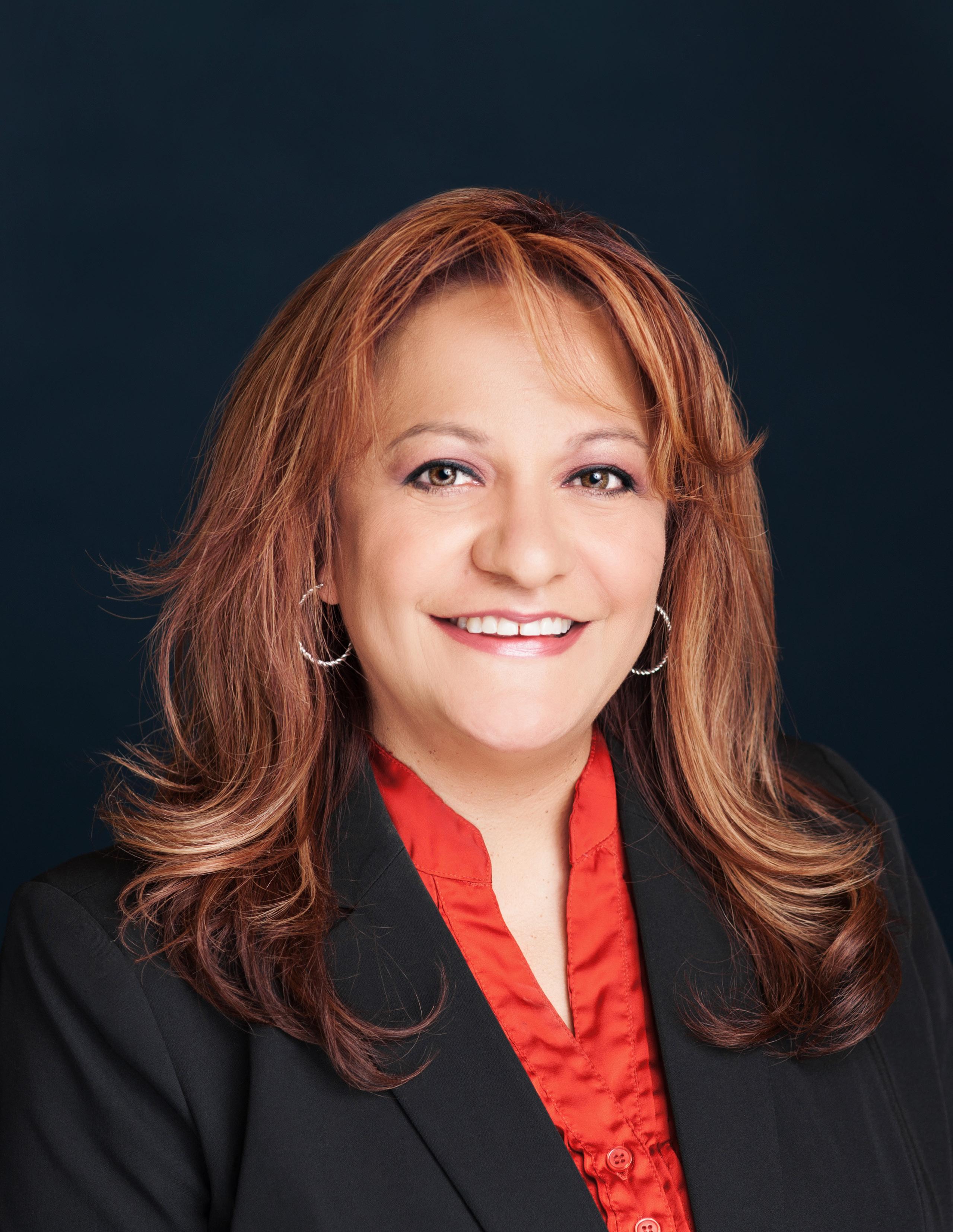
WWork can teach a lot of skills: how to manage time, how to manage daily business operations, how to evaluate the strengths of employees to help them grow to their highest potential, and how to be a good leader. It can also teach us what not to do— often learned by having an inexperienced leader in place. Norma Cordova has learned all of these things throughout her career.
Growing up, she wanted to work on Wall Street. “I thought I was going to move to New York City, become a successful stock broker, enjoy views from a high-rise apartment, and live life as a lone individual,” she says. She dreamed of this because she came from a family with six siblings, which meant she had very little privacy, and, as a middle child, she’d always wondered how life would be if the focus were just on her. “You could say my dreams came half true,” she says. She did go into the financial world and became incredibly successful, but she doesn’t live in New York City, and she does have a son, now twenty-three years old.
“As a young adult, we all have this narrow self-centered vision, but as an adult, we broaden our horizon and realize that nothing matters more than family,” she reflects.
Cordova started her career by joining Time Warner Satellite Services as a customer service representative twenty-five years ago. “Up until then I’d worked part-time in retail,” Cordova says. “I didn’t feel the drive in the retail world, so I wanted to give the business world a shot.”
The entry-level position had her working on the phones as a customer service and sales representative. After a period of time, Cordova was promoted to an area manager, where she took on more responsibilities and paved her way into management. She held this role for about four years, during which time she had her son. Soon after, the division within the company sold and she transferred to Time Warner Cable, starting all over as customer service representative with full determination that she would be back in a management role one day.
Even under ideal circumstances, balancing work with parenting is difficult. The difficulty increases when you’re a single parent living away from family. In Cordova’s opinion, it didn’t help to have supervisors along the way who did not support or understand her situation. This convinced her that, as she excelled into higher levels of leadership in the future, she would provide her employees with support and flexibility to enable them to have a healthy work-life balance. After all, as any parent or caretaker can tell you, a lack of flexibility can be devastating. Cordova says it was difficult to schedule time to simply drop off and pick up her son from daycare and school because it conflicted with work hours. Family obligations also axed opportunities to travel for work, which limited her opportunities for management growth.
“I dealt with it by putting my head down, and I just kept working,” Cordova recalls. “Some people fight so aggressively to change [unjust work situations]. That’s not how I do things.” Instead, she encourages a different attitude. “Change what you can and accept what you can’t,” she says. “You have to remain positive and know that another opportunity will come along.”
That approach paid off: Cordova was promoted to a business operations analyst. In her previous role, she learned customer operations. In this new role, she learned how to measure individual performance and run back-office operations. She did this for four years.
Next, she spent four years in the information systems department, which was all about learning Time Warner Cable’s complex billing systems, writing queries, and extracting the right information for projects. This opportunity led to a position within technical operations, where she was tasked with running statistics that allowed the company to re-examine cable installations and improve field operations, which resulted in a better customer experience. In this role, her hard work, dedication to the job, and track record caught the attention of the engineering leads. The vice president of engineering recruited her, and she’s been working within engineering operations for thirteen years now. In 2010, she became vice president of network technology engineering operations. In 2016, Charter Communications acquired Time Warner Cable, and she retained her position.
to color outside the box and deliver solutions that open up new possibilities.”
Still, Cordova says she didn’t do this alone. The support she has received from her current supervisor, Matthew Stanek, senior vice president of network technology operations at Charter, has been extremely impactful to her career. She credits Stanek as a longtime mentor. “You can’t get to the top all by yourself,” she says. Additionally, she credits others along the way. “In this world of cable, there are so many brilliant individuals that surround me and my world never stops growing. I’ve been here twenty-five years and I still continue to learn new things all the time.”
THOUGHTS FROM OUR GUEST EDITOR:
“Norma’s inspiring journey reminds us what the full definition of success embodies, in which our fullness as women, moms, and excellence professionals can come together as one to keep us driven to succeed and lead with compassion.”
“Norma is a change agent who sees the possibilities that technology will bring to future communications,” says Kevin Jones, a colleague of Cordova’s and the regional vice president of sales at Casa Systems, which provides technology solutions to Charter Communications. “She has a unique ability to balance the current needs of her company and its customers, while preparing for the transformational network change necessary to support our always-connected future. Norma inspires and motivates us—her team, her peers, her partners—
Her “accept what you cannot change, change what you can” approach paired with her “family comes first” philosophy has shaped her leadership at Charter Communications. She is proud of the leader and mother that she has become and continues to not only support her own growth, but to help all others around her flourish into strong leaders. “I want everyone to excel,” Cordova says, actively encouraging those around her to take the next step. She has been recognized for her leadership skills with honors and awards.
She emphasizes the need for education, particularly for young Latinas. She consistently encourages young Latinas to seek roles in the technology field. Most telecommunications and technology companies tend to be dominated by men, and she would like to see more women in leadership and technical roles within these industries. Cordova states, “Education is key in obtaining a seat at the table, as most executive positions require a degree

Her “accept what you cannot change, change what you can” approach paired with her “family comes first” philosophy has shaped Cordova’s leadership at Charter Communications.
or a high level of experience—and rightfully so; every company seeks the best.”
In her own family, Cordova recalls that education wasn’t emphasized as a “must” when she was growing up. She has since learned how important it is, and she not only encouraged her son to attend college (he is in the process of obtaining a biology degree), she also went back to school in her late 30s and earned a bachelor’s degree herself—in finance from Liberty University in 2016.
Cordova says she’s often been one of a few women in meetings, and often the only Hispanic person. “It would be nice to see more diversity in executive and technical positions.” She advises young Latinas who are entering the workforce to define themselves, go after what they want, and to grow their skill set as much as possible. She encourages her son, and young nieces and nephews to allow those around them to teach them. “Be open to listen to the wise minds around you,” she says.
“None of this has been easy,” Cordova says. “The struggle is real.” Though she works to support her team and had phenomenal successes with a project last year, it has come at a cost—working many hours and being away from her son.
“I’m proud of what I’ve done for myself and my son,” she says. “I’m also proud of the leader I have become, of the teams I have built, and everything I have accomplished in my lifetime. And I’m not done yet.”

A belief in chasing dreams and finding her own strength led this lifelong connector to a unique and integrative strategy in executive talent building.
X Ximena Juncosa
imena Juncosa always prided herself on knowing, as she puts it, how to turn lemons into lemonade.
“My advice to people is always to go get what you want, follow your dreams, and not let anyone tell you that you can’t do something,” Juncosa says. It’s a trait that she says has helped her to think outside of the box and find solutions in nearly every situation—an ability that has guided her throughout a career in HR, and something she encourages in others as the vice president of executive talent at McKesson.
Going after her dreams was also what kickstarted her career. Though she was born in Lima, Peru, Juncosa grew up in Gainesville, Georgia, where she often encountered stereotypes about her heritage. But, Juncosa says, “I was drawn to [Peruvian] culture and realized that this was something that
BY LORI FREDRICKSON
PHOTOS BY BEN ROLLINS
didn’t exist where I was living, that it was something that I was proud of.”
She enjoyed learning about her culture and being surrounded by it on her family trips to Peru. After high school, she decided to move to Miami to study at Florida International University. To support herself, she took on additional full-time work in the hotel industry; after graduating, that experience combined with her business skills made her a natural fit for the hospitality industry, where she rose quickly to director of HR at major chains such as the Ritz-Carlton and Four Seasons.
A later move, back to Miami, gave her a new opportunity to reinvent herself and stretch her talents in a different industry—she was recruited for a role at ADP.
“I’d never done this specific work before, and I remember confidently nodding and saying, ‘Don’t
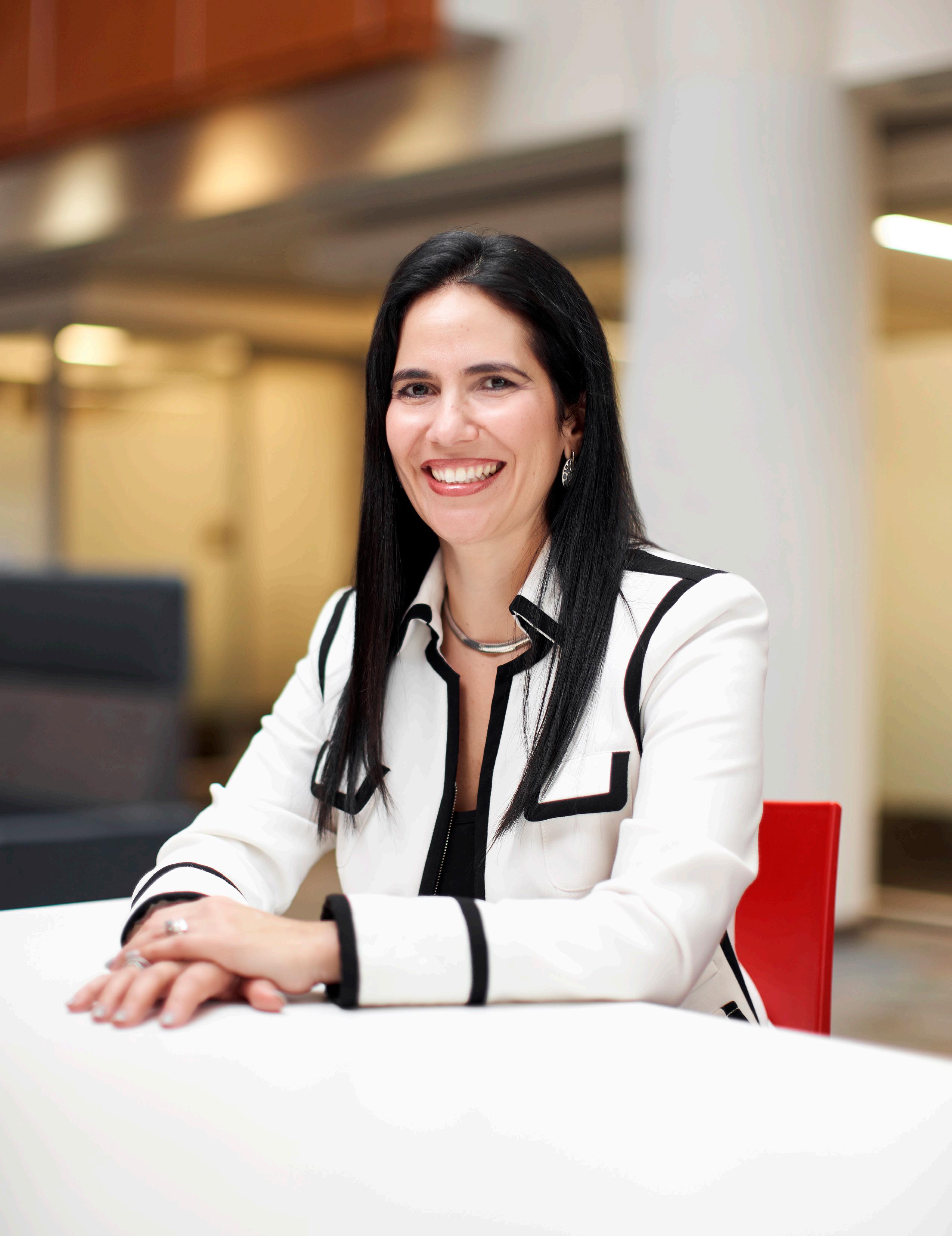

worry,’” Juncosa recalls. “I had never been more unsure when I’ve spoken.” Still, her success led her to rise in that company as well, from director of HR to a new position in executive talent acquisition. In 2017, she got a call from the former boss who had appointed her the role—now working at McKesson, a healthcare company—who wanted to build an executive-talent function.
Since then, Juncosa worked tirelessly to develop an in-house executive search function, collaborating with senior leaders at the company to identify and select fellow senior leaders through a highly competitive process.
“I have the opportunity to work with people who are not only going to be taking McKesson forward, but charting our course in an industry
that is experiencing significant transformation and evolution,” Juncosa explains. To do so, she focuses on mapping and understanding internal competitive searches and aligning those searches with McKesson’s strategy and leadership principles. This includes both when internal talent can be identified and promoted, and when a niche role or transformation requires an external search.
As changes at the company led to an increased demand, Juncosa’s work became increasingly valuable. Being in conversation with the company’s leadership throughout these changes also made it clearer why choices were being made, and how they were tied into McKesson’s mission. This alignment, coupled with the significant cost savings by keeping the recruiting function in-house, made her team an asset.
Juncosa sees her greatest accomplishment as the relationships she’s been able to create, in a role that she refers to as a “three-legged stool.” She explains, “I’ve had the opportunity to bring different teams together—across inclusion and diversity, talent management and executive talent—and be part of that integration. We are approaching the entire executive talent space in the most integrated, meaningful way to ensure that executives have the capabilities we need for the future.”
Her passion for building relationships is reflected outside of her role, as well. Shortly after joining McKesson, Juncosa became the national chair for PALMa, McKesson’s Hispanic employee resource group. “Inclusion and diversity is a personal passion of mine, so I find it very exciting to play a role in it,” Juncosa says. “And it became very apparent to me that diversity was already important [at McKesson], so I didn’t find myself having to make a business case as to why we needed diverse candidates.”
Her chief focus in this area is strengthening the pipeline. “We’re preparing leaders for future roles and we’re looking for opportunities to be strategic for the future,” Juncosa says. This includes managing external recognition and partnerships in the marketplace, as well as continuing to build a culture
of inclusion at the company. She works closely with McKesson’s new head of inclusion, diversity and culture. “We’re really focused on having a united approach,” Juncosa says. “It’s enterprise-wide thinking that’s very aligned to our McKesson strategy, and the work we’re doing is really making a business impact.”
She’s excited that PALMa’s work, such as rolling out new initiatives like a national webinar, has already received enthusiasm and support. “Everybody is very plugged in,” Juncosa says. “It is refreshing to see a company culture where ERGs leaders are so engaged in the inclusion efforts. It demonstrates McKesson’s strong culture and engagement.”
As McKesson continues to transform, particularly during an upcoming move of headquarters from San Francisco to Dallas, Juncosa’s work—in both her VP of talent role and in PALMa—will be increasingly valuable. She’s excited to continue to negotiate that transformation in a meaningful, strategic way. “What brought us here isn’t necessarily going to get us there,” she says. “The work my team is doing is centered around understanding the abilities that are going to take us forward.”
She’s also glad to be able to do so in a way that connects people. Throughout her career, Juncosa focused on finding opportunities to help others. She’s especially passionate about supporting other women and Latinas—whether encouraging a colleague to go for roles in which they can thrive, or sitting on panels to share her experiences. She also focuses on this in her life outside of work: A moving experience several years ago sparked a passion project in supporting Casa Faustina, an orphanage in Peru. She helped the orphanage with fundraising and she regularly volunteers with her family on return trips.
“I’m a connector at heart,” Juncosa says. “Having the ability to connect others to support their personal and professional development is a rewarding experience for me, whether to other people, to jobs, or to ideas. And in this role, I get to do all those things.”
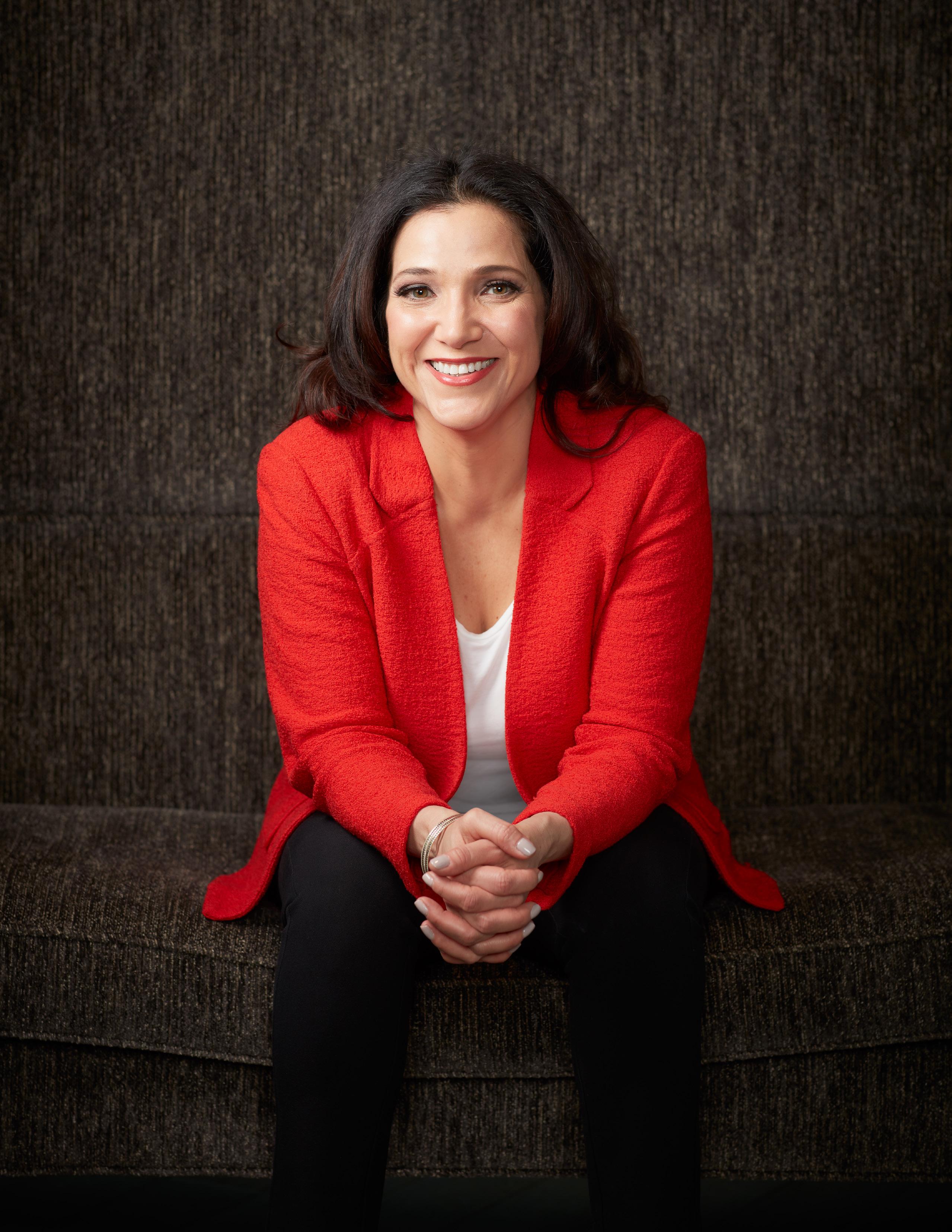
From trial litigator to CEO of a STEM nonprofit, Raquel Tamez has experienced an array of workplace cultures, and her current field is proving to be the toughest yet.
BY KATHY KANTORSKI
WWhenever Raquel Tamez is mentoring a Latina or speaking publicly to Latinas, she always tells her “feisty Latina” story.
“An executive not too long ago called me a ‘feisty Latina,’” she says. “It took me aback because of the context: how it was said, when it was said. It was meant to be derogatory. I’m hardly ever speechless, but I didn’t know how to respond. I was in a state of shock.”
The comment stuck with her, and she often thought about it. But it wasn’t until she spoke about it with a mentor that she was fully able to process the experience. “[My mentor] said, ‘You know, you need to reconcile this for yourself. I’m concerned that you’re going to carry this with you in an unhealthy way,’” she recalls. He then invited her to think about whether or not she was going to lean into being a feisty Latina. Would she turn something belittling into something empowering? Would she stand proud as exactly what that executive called her, a feisty Latina?
“I’ve given it a lot of thought, and I have decided: Yes, I’m going to be that feisty Latina,” she says. “I am going to fight and advocate for what’s right. It brings me back to why I decided to go to law school in the first place: justice, equality, and fairness—and just doing the right thing.
“I tell Latinas whenever I get the chance,” she continues, “that they need to figure out for themselves how they define ‘feisty Latina.’ What does that mean for them?”
Despite the derogatory comment, Tamez came out of the career transition she was experiencing at the time with an outcome that, in her more than twenty years in various legal roles, she never saw coming. The Society of Hispanic Professional Engineers (SHPE—pronounced “ship”) was looking for a CEO, and a national executive search firm contacted Tamez about the opportunity. “I initially thought, ‘I don’t have a shot at this,’” she remembers. Nevertheless, she began looking into SHPE, and she felt an immediate connection to its vision and mission. She was compelled by the opportunity to pay forward what she had experienced in her own life. She explains, “I grew up in the ’hood. I got out of the ’hood through education, and here’s an organization that’s supporting students and young professionals in STEM. And had I not had well-intentioned mentors and assistance along the way, I don’t know where I’d be. If I can help facilitate the same for others, I’m going to do it.”
The decision wasn’t an easy one. Tamez would be leaving her field of expertise, which she’d spent years developing. She’d be giving up the practice of law and putting her legal license on hold. “Am I ready to do this?” she’d ask herself. The answer was a resounding yes. “I’m going to take this calculated risk and see what I can do for this organization and for my community,” she remembers thinking.
Tamez landed the position, and made the leap from law to STEM as the CEO of a professional society. “I think, initially, people asked, ‘How is that lawyer leading an organization of engineers?’” she remarks. “At the end of the day, it’s about transformational leadership, passion for the mission, and having a vision and strategy for the organization.”
The time was right. Becoming the CEO of SHPE in June 2017, Tamez entered her new role just as the #MeToo movement launched and American society
began to take note of racial, ethnic and gender-based disparities in STEM industries. In almost-poetic fashion, just as it’s becoming recognized that diverse women are underrepresented and discriminated against, here comes the feisty Latina labor and employment litigator to lead a STEM society.
“You look around and see all these socioeconomic factors: immigration, education, the labor force, the workforce, the demand for STEM, the relentless acceleration of technology, the critical-mass numbers of Hispanics—all of these coming together,” Tamez says. “The time is now, and I have this sense of urgency because I’m leading the best-kept secret in STEM.”
Her vision for SHPE? “In one word: catalyst,” she says. “SHPE as a catalyst wherein SHPE steps up, takes action, builds consensus, leads the change, and influences the outcomes.”
Being that catalyst has been more difficult that Tamez could have imagined. She knew it wouldn’t be easy, but she’s been surprised by the challenges she’s facing.
First, there’s the competition. “How does SHPE get the recognition it deserves?” Tamez asks. “I thought litigation was competitive, but these professional societies in STEM are very competitive. No doubt, in many instances we collaborate and partner. But in many more instances we are competing for the same small buckets of money.”
Moreover, she says the playing field isn’t level. Funding often comes from an organization’s D&I budget, and Tamez has spoken publicly about the disparity SHPE experiences here. “There are the ‘haves’ and the ‘have nots’ when it comes to diversity and inclusion,” she says. “When budgets are small or are being slashed, for some reason Hispanics are getting the short end of the stick. I see it every day. ‘We’re going to fund this organization in the millions of dollars, but we’re not sure we have the budget for your organization.’
“Look to who is making the decisions about where the D&I monies are being invested,” she
continues. “We actually have to diversify diversity. We need to make diversity more inclusive.”
Perhaps just as troubling—if not more so, because it’s on a more personal level—are the biases Tamez occasionally experiences in interactions with certain folks in the STEM space. Since her decades of work in the male-dominated legal field, she actually has experienced an uptick in chauvinistic micro-aggressions in her new role.
“Maybe it’s the CEO title and position, but I feel that men—chiefly, Latinos, unfortunately— are trying to put me in my place, in sometimes subtle and sometimes not-so-subtle ways,” she says. She recounts comments such as, “Raquel, you’re not being sensitive enough,” and “Raquel, you’re trying to flex your muscles.”
“When would they ever say that to a male CEO?” she asks. “They wouldn’t.”
While experiencing these biases, she is simultaneously leading her team and advising “SHPEtinas” (Latina members of SHPE) to overcome the same challenges, which leaves little time for her to process situations appropriately. “How do I captain when I’m grappling with something?” she says. “Being CEO is very lonely. You are part of the board of directors, but not really. You are part of the staff, but not really. To whom does a CEO go to commiserate?”
Tamez knows that the best way to find strength through the adversity she faces is to unite with others in similar situations. She dreams of creating a sisterhood with other Latina leaders—so much that she already has a name for it.
She plans to call it FLEX: Feisty Latina Executives. A name with multifaceted meaning. A way of turning belittling micro-aggressions—“You’re a feisty Latina,” and “Raquel, you’re just trying to flex your muscles”—into an empowering catalyst for change.
Stay tuned for a FLEX event coming your way in the near future. Tamez is on a mission, and she’s issuing a call to action for Latina executives to join her.
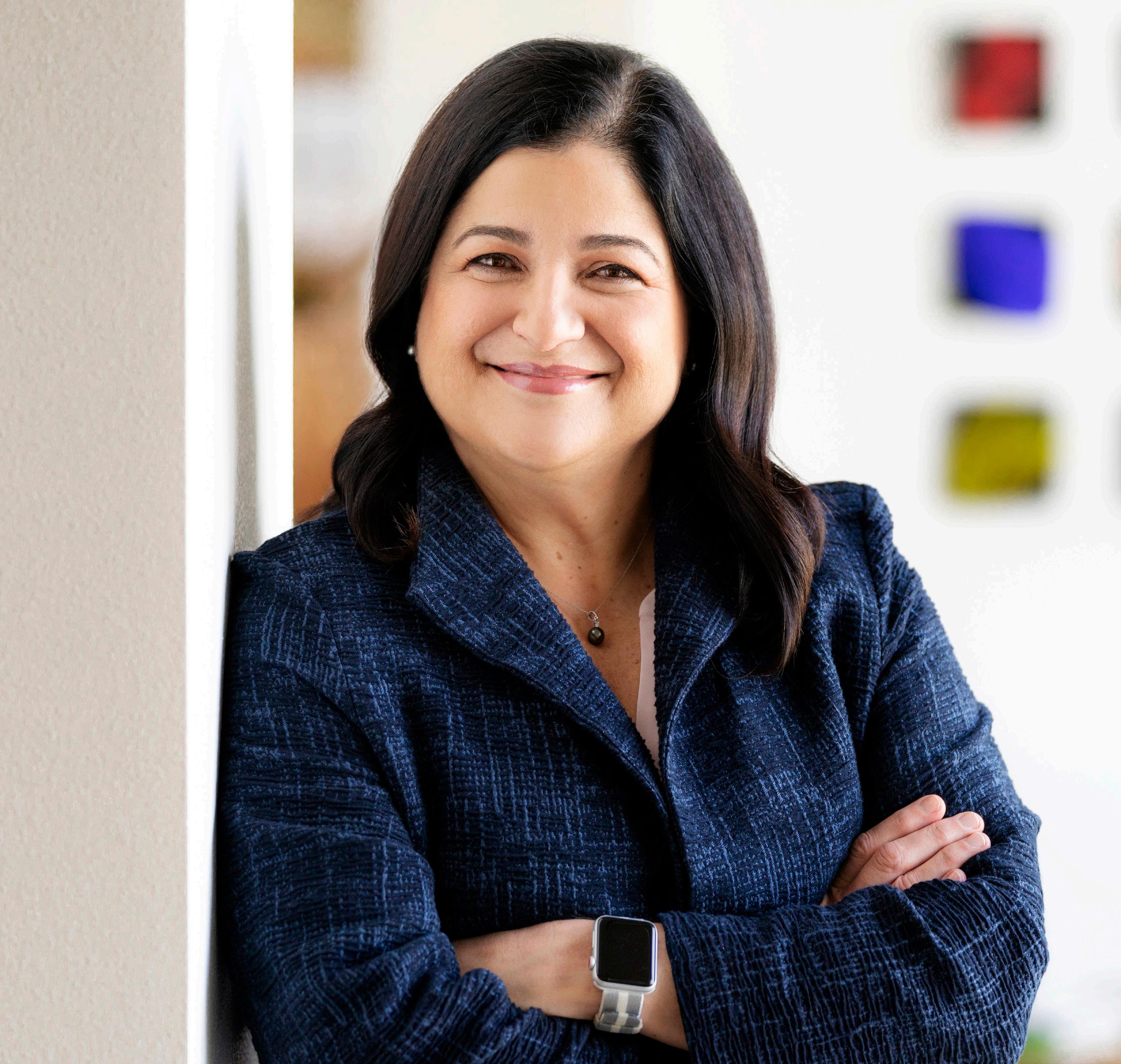

Science, empathy, and family values are woven together in this Latina; a package critical to successful leadership of both internal employees and external customers of Cisco.
Maria Martinez
BY LIOR PHILLIPS
Women face an uphill battle in the worlds of science and technology, from STEM programs in early education all the way to the boardroom. The disparity is even greater for women of color. According to the National Center for Women and Information Technology, Latinas held only 1 percent of computing-profession positions in 2015.
Despite those long odds, Maria Martinez’s résumé brims with the highest-profile names in the world of technology: AT&T, Bell Labs, Motorola, Microsoft, Salesforce, and Cisco Systems, for which she currently serves as executive vice president and chief customer experience officer. In addition to helping the multinational firm excel, Martinez hopes to encourage more Latinas to find career success in the technology field.
“I work really hard getting the word out there because there is so much that these kids aren’t exposed to. I take every opportunity that I can to support organizations that promote STEM and early career development, and to speak with girls in underserved neighborhood and schools.”
Growing up in Puerto Rico, Martinez was inspired by her hardworking mother. Her father passed away when she was still young, so, to support the family, her mother worked as a CPA and later at a bank. “I learned at an early age the importance of working hard, doing your best, and always trying to do more than what you’re asked for,” she says. But the technology switch flipped in Martinez’s life when a high school math teacher pulled her out of standard classes and encouraged her to study engineering. Although she hadn’t grown up hoping to be an engineer, Martinez was excited by the new adventure unfolding before her.
“Looking back, I was lucky enough to attend private schools because my mother worked so hard, and I was lucky that my teacher led me to engineering school,” she says. Today, Martinez seeks to provide some of that same guidance to young girls who might not even consider technology or engineering as a path.
“I work really hard getting the word out there because there is so much that these kids aren’t exposed
to,” Martinez says. “I take every opportunity that I can to support organizations that promote STEM and early career development, and to speak with girls in underserved neighborhoods and schools to make them aware of these opportunities.”
After graduating from Universidad de Puerto Rico, Martinez left Puerto Rico to take on her first engineering job. She began working at AT&T in 1980, while simultaneously earning her master’s degree from Ohio State University. After eleven years with AT&T and Bell Labs, Martinez took on her first executive-level position at Motorola—and from there continued to grow and express more leadership strength.
Martinez assumed her first CEO and presidential role with Embrace Networks, a developer of ISP and network solutions. From there, she moved to a corporate vice president position in Microsoft’s communications sector. She then joined Salesforce in 2010 as chief growth officer and executive vice president of customers for life. Customer success was a burgeoning field in the technology world at
the time, and was only then being established within Salesforce, so Martinez could truly put her stamp on the model used by one of the country’s largest and fastest-growing technology companies. “I’m very proud of that model, which is now being implemented by many companies,” she says.
All the while, her focus on supporting and guiding others remained steadfast—if not expanded now that she’s in a leadership position.
“I’m a big believer in spending time in coaching and sponsoring,” she says. “It’s so important to actively follow them, monitor how they’re doing, and intervene when there are moments to ensure that they are getting the right opportunities.”
Martinez learned firsthand the struggles that members of the Latinx community might face in the quest for those opportunities. The presence of women and minorities on boards has changed in the years since Martinez first entered the boardroom— thanks in part to the many nonprofit organizations dedicated to improving diversity at the highest levels of corporate America. However, she stresses, there’s still a long way to go. “You need diversity to change the dialogue, to bring new viewpoints to the table,” she says.
then I also spend time with a wide span of customers and influencers,” she says. “By working with so many different people, we can create a culture where customers go from choosing Cisco, to using Cisco, to loving Cisco. We all unite together when we think about our customers.”
THOUGHTS FROM OUR GUEST EDITOR:
“Tech is fashionable today but clearly Maria has been a pioneer changing the face of Latinas in tech for many years, and that is certainly something worth celebrating and elevating. Maria, please keep telling and re-sharing our stories for young Latinas and Latinos who crave to see people like themselves in roles like yours. Thank you for inspiring us all.”
Though customers remain the prime focus, the unique lives of her team members are never far from Martinez’s mind. Since her childhood, she understood clearly that balancing work and family is essential. That understanding was reinforced when she started her own family. “I focus on producing quality time with my family,” she says. “Thanks to that passion, I have a fantastic relationship with my daughter. She’s in her twenties now and on her own journey, but I’m her best friend and I’m so proud of that.”
Although she expects every Cisco teammate to be committed to their customers, she knows that flexibility is important. An employee may need to leave a little early from time to time to take their daughter to soccer practice, but then check their email after getting home. “We need to create that culture where employees feel there is choice and the flexibility to take care of their families,” Martinez says.
In fact, diversity is one of the main factors that drew Martinez to Cisco in early 2018. The organization has made great strides to improve its diversity in every level, including its boardroom. As the chief customer experience officer, Martinez experiences very clearly the diversity of Cisco’s customer base, and having an equally diverse leadership team can ensure that all customers’ needs and points of view are understood. “I have a very diverse team, and
That focus is something that Martinez finds lacking in many careers. Rather than merely being dissatisfied with their position or looking for greener pastures elsewhere, she encourages individuals to learn a lot, follow passion, and refuse to be discouraged. That’s especially important advice for other Latinas, who often don’t receive that kind of encouragement. “Sometimes you just have to take a risk and try,” she says. “It’s all a journey.”
“Don’t take the seat away from the table,” says Viacom SVP Anita Ortiz. “Pull up more chairs. There can be enough opportunity for all of us.”
BY KATHRYN KRUSE

RRewind the clock to just over twenty years ago, and you’ll find Anita Ortiz starting at Paramount Pictures, a subsidiary of Viacom, in the international TV marketing department. That same year, the company didn’t fare very well in industry trade reports on diversity and inclusion, so Ortiz wrote a letter to then-CEO Sherry Lansing, with some suggestions and ideas. “She called right away,” recalls Ortiz, still amazed. “I was an assistant, and the CEO called my cubicle and talked to me about my ideas.”
Bolstered by this conversation, Ortiz started a research project. “I got a bankers box and called it my ‘diversifile,’” she says. “Any time I read an article about diversity and inclusion, it went into the box.” Meanwhile, she transitioned into increasingly responsible roles in government affairs, then corporate responsibility. When 2012 saw an expanded Viacom-wide focus on inclusion, Ortiz took the opportunity to get in touch with the senior executive leading the work, Marva Smalls. Shortly thereafter, Ortiz—and her “diversifile”—officially joined the inclusion team, bringing a new level of purpose to her career.
Her impressive vision of what her company can offer employees and consumers drives her. “Some
people have a career. I have a passion for my work. This is a calling,” Ortiz says. She seeks to empower every employee to use their voice and reach their full potential.
For Ortiz, global inclusion means looking at the whole Viacom system: the product and those who create it. She explains that she thinks about her work in four buckets: people, product, process, and presence. With these areas in mind, she partners with the corporation’s leaders to roadmap the way forward, ensuring D&I in each step.
“I am working so that diversity and inclusion are part of the mind-set for all leaders,” says Ortiz, who works closely with Viacom’s Global Inclusion Advisory Committee. “We are steadfast in commitment, yet flexible in approach. Each brand and each project is unique.”
For example, one show may employ people from traditionally underrepresented communities on the crew; for another project, that diversity may also be reflected in the characters who show up on screen; and they both may be working with diverse vendors. Ortiz is not working with numeric quotas, rather she is fighting stagnation—something she says can be an issue in entertainment. She’s doing all this by making sure all perspectives are heard and people are represented.
In the grand scheme, Viacom’s work is about telling compelling stories, and Ortiz knows those stories will be more successful if they reflect their audience, which requires a diverse staff who can understand a variety of communities. Also, it’s just smart business. “Equity in back-of-house is important,” she explains. “Diversity leads to new approaches to problem solving and better outcomes; it leads to more interesting and engaging workplaces and creative products.” It is diversity and inclusion that will keep the company competitive in a changing field, and Ortiz is charged with ensuring it permeates the company’s strategy and culture.
With human resources, Ortiz considers talent acquisition, retention, and data analytics. She is
breaking down barriers to entry and opening paths to employment. Campus-to-career partnerships and open houses with programs such as the Posse Foundation expose potential candidates to Viacom’s vast career offerings. Once employees are on board, Ortiz builds resources to ensure they feel like they belong. She helped launch Viacom’s sevenemployee resource groups on the West Coast, and people lined up to participate. More than 700 employees came to the kick-off, demonstrating not only their desire for development opportunities but also for community.
Ortiz also recognizes that entry points to the industry are less linear than they once were.
“Now there is a new generation of people who, when they don’t have access to a big company, will go create content on their own,” she says. Many online platforms offer direct access to audiences.
This, Ortiz says, presents an opportunity for Viacom to find diverse and proven creators, widening the talent pool.
have difficult conversations. “We have to be willing to push through our discomfort,” she says, though she likes to follow her grandmother’s advice and use a non-confrontational approach: “You catch more flies with honey than vinegar.”
Besides advocating for change, Ortiz focuses on helping people be their best: advance their careers and fulfill their dreams and visions. She does this work by acting as a resource and acknowledging people for what they bring to the table.
“We all need people to believe in us and help us on our trajectory. We need champions,” she says.
THOUGHTS FROM OUR GUEST EDITOR:
“It is never too early in your career to have impact and influence in the C-suite, and that is exactly what Anita’s story teaches us all. Beyond having the position, it’s about having the courage to be culturally curious and dare to go as high as the CEO to recommend ways to become better. Anita didn’t wait for others to be part of the solution, she turned herself into the solution.”
From dabbling in supplier diversity to forming partnerships with the company’s social responsibility teams, Ortiz infuses diversity into Viacom’s external partners while also improving its presence in diverse communities. “We consider vendors that might not have been part of the process before,” she explains. This includes businesses owned by women, people of color, disabled individuals, and within the LGBTQ community.
Challenging the status quo, she knows, means facing hurdles. “I’m short,” she jokes, “so I didn’t really have growing pains as a teen, but other people I know did.” She recognizes these pain points lead to growth and encourages others to be unafraid to
“We must extend our hands to support the people who are coming up after us. I would not be here if people had not done that for me.”
In her everyday world, you’ll find Ortiz citing inspirational quotes, which elicits a nickname her colleagues have given her, “Cheesy-Ortizy.”
You’ll also find her up and about, laughing with others, making sure she is not chained to a desk.
Keeping spirits up is important to her because, as she acknowledges, D&I work can be exhausting. “It is tiring to continually explain why it is important and why it matters,” she says. For that reason, Ortiz believes it is critical to understand and affect change in her sphere of influence. “It is not my role to solve the problems but to give tools to help others find solutions for themselves,” she says. “And I am here as much for a senior executive as I am for a brand-new assistant.”
Of her own role as a Latinx executive, she says, “People in the Latinx community are often unseen, doing labor that is not always highly valued. I always want to acknowledge everyone. That is part of being
“We all need people to believe in us and help us on our trajectory. We need champions. We must extend our hands to support the people who are coming up after us. I would not be here if people had not done that for me.”
a twenty-first century leader.” She understands, also, how her very visible role is important to the community, recalling a time when she was on her way into a meeting that included Viacom’s CEO and an older Latino employee stopped her to say, “We are so proud that you are at that table.”
“The Latinx community needs this now,” she says. “There is so much shade about immigrant communities, an entire people painted as less than,” she says. At the same time, she knows that as a Latina, having a senior role can be lonely and believes in the importance of building networks. “I am a proud Latina. But we don’t advance when we put ourselves in siloes. I want to have trusted colleagues from every background, and that means I must be an ally to them as well.”
Looking at the current sociopolitical environment, she again demonstrates the resilience of positive thinking.
“I have to have the confidence that we will come out the other side stronger,” she says. Then she offers a method for getting to that other side. “If we are going to make systemic change we must lock arms with everyone, majorities included. Don’t take seats away from the table. Pull up more chairs. There can be enough opportunity for all of us.”

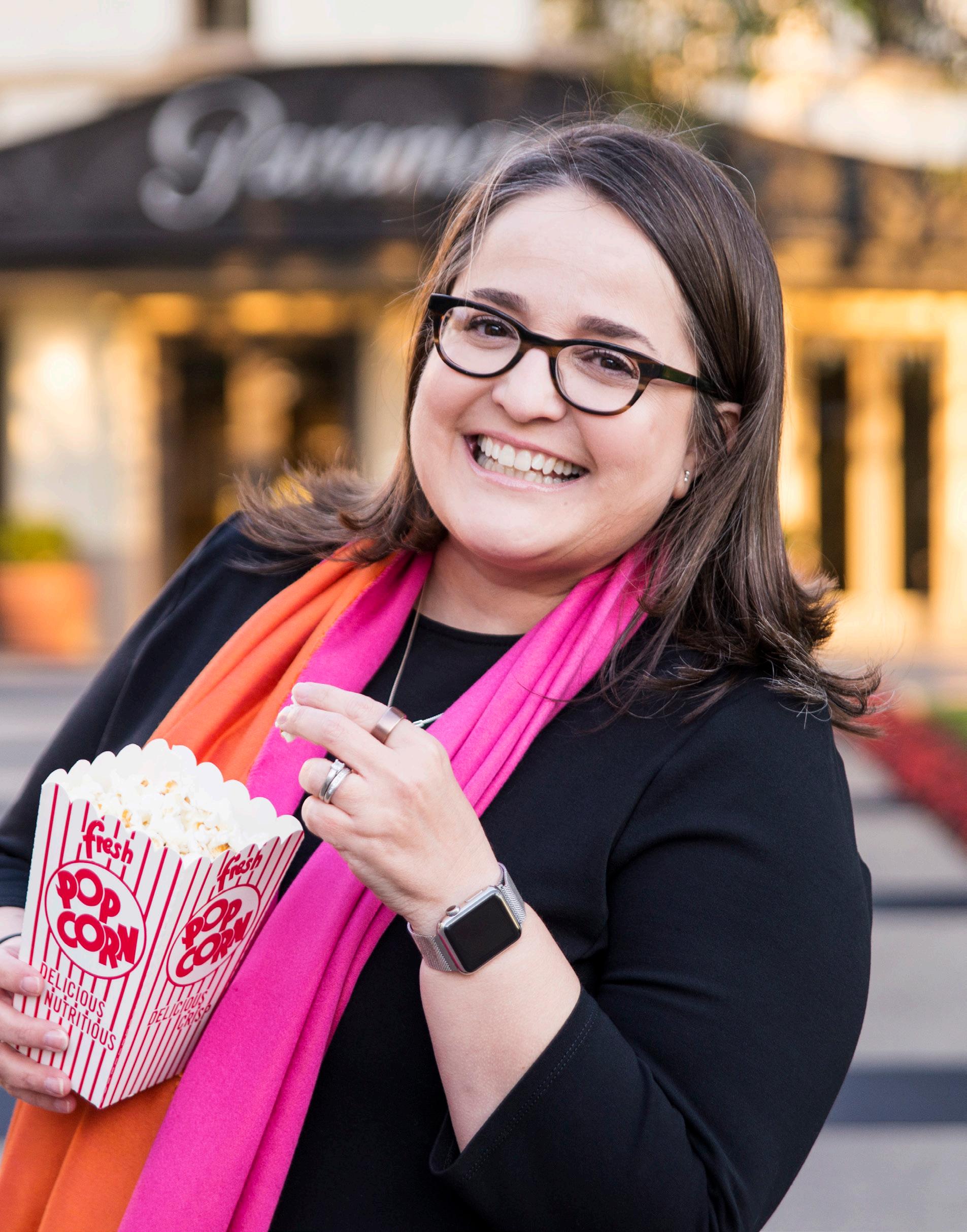
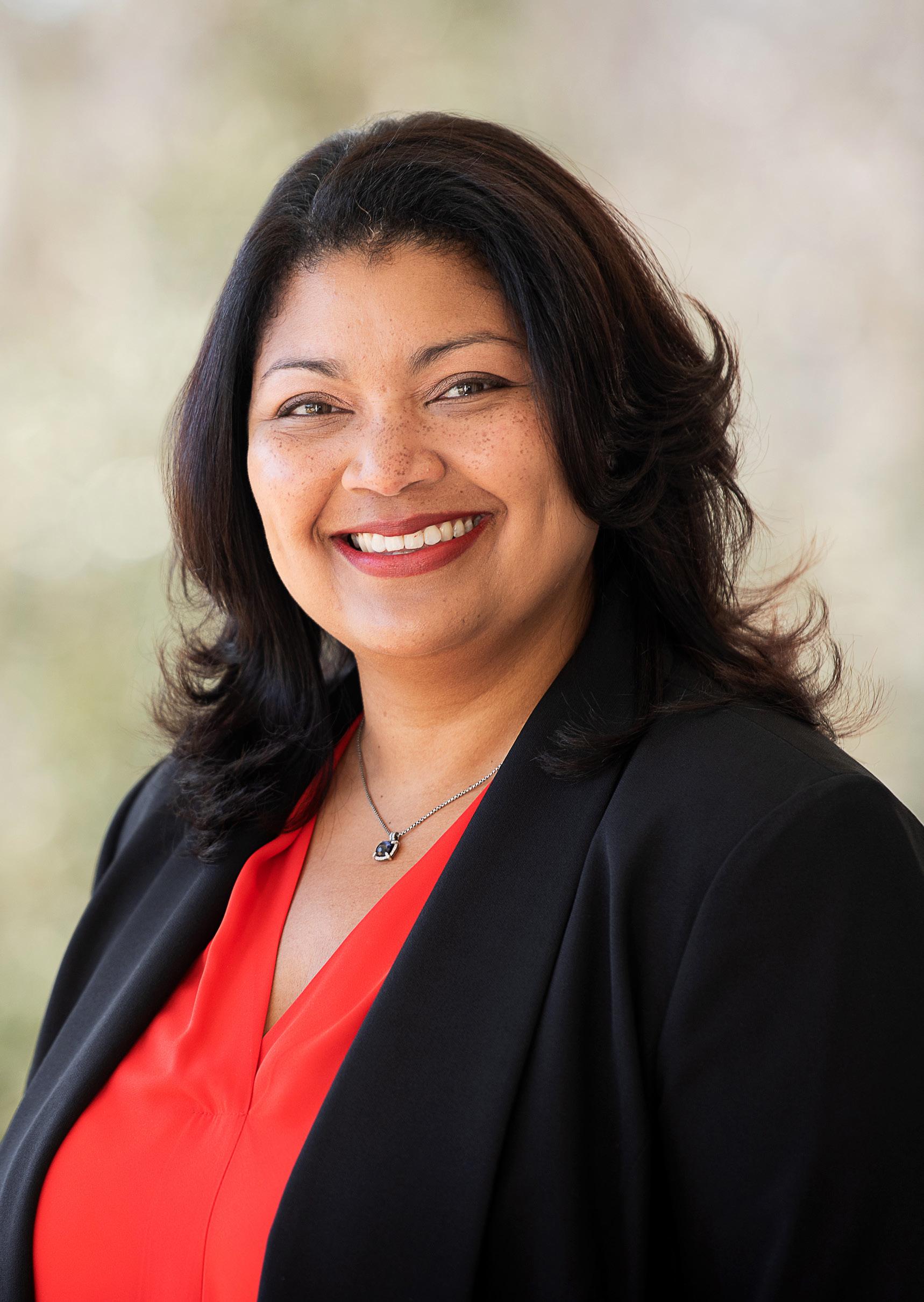
Like a lighthouse, this legal Latina provides guidance and hope to PepsiCo employees in Latin America, to her family, and to immigrant women and girls.
Marjorie De La Cruz
BY LIOR PHILLIPS
Fighting against the prejudices and disadvantages that come from being a Latina can prove to have value in a male-dominated, older-skewing, stodgy legal field. “As a woman of color, particularly a Latina, you always are a bit of the exception and have to prove that you belong in the room,” says Marjorie De La Cruz, senior vice president and general counsel Latin America for PepsiCo. “You train yourself to over-deliver, to show you are unique and can offer something different from everyone else.”
De La Cruz joined PepsiCo as senior legal director and international counsel in 2004 after a long string of successful legal positions. Her background—both professional and personal—positioned her perfectly for the role. The daughter of immigrants, De La Cruz knew intimately the importance of cultural sensitivity and the ability to make connections across borders. Prior to joining the legal profession, she worked in advertising. After completing her law degree, De La Cruz was able to pair that experience with mergers and acquisitions training for legal roles in the advertising industry.
It was at that time that De La Cruz first became acquainted with PepsiCo; one of her primary clients at the time was the biggest advertising agency of record for the brand. “I learned that they were looking for a Spanish-speaking lawyer that knew consumer products and advertising,” she says. PepsiCo was looking to support its beverages business in Latin America, and De La Cruz saw the job as a way to merge all of her experience into one opportunity. “It was the ability to translate and apply all of my learning in the United States to a region where I have strong, personal roots that is also growing and evolving,” she says.
After thirteen years in leadership positions within PepsiCo, De La Cruz became general counsel of Latin America in 2017. In this role, she leads all legal, regulatory, and public policy matters in the region and leads a team of more than 100 legal professionals. Though she’d been able to make an impact previously, she was one of the only women in a leadership role.
ness partners and enablers that help the business make good judgment calls,” she says. “Those are the decisions that can lead to sustained growth.”
THOUGHTS FROM
As general counsel for the Latin American region, De La Cruz’s team negotiates deals, ensures compliance, and handles labor relations. In addition, the region’s occasional, but not infrequent, political uncertainty and volatility requires an added level of close attention. “The role requires constant contact with my direct reports touching on the news of the day, how we are going to tackle it, and who needs to be involved to make the appropriate decisions,” she says. “My role is to act as a bridge between our corporate general counsel and what we do on the ground in Latin America.”
OUR GUEST EDITOR:
“Our impact and voice as professionals, advocates, and champions for inclusion transcend title and role, and that is what Marjorie represents. She inspires us to take our influence from the office and boardroom into the communities because our voice and legacy is made bigger when it lives beyond the walls of our corporate office. Bravo, Marjorie!”
“Being the exception became much more about being a woman that had decision-making authority,” she says. “But I knew I’ll always have an advantage and an opportunity to break a barrier, to educate, and to hone my leadership skills.”
Chief among De La Cruz’s priority list in her new role were: ensuring decisions on risks were made with as much information as possible, keeping the business moving forward through any crises, and ensuring the legal department integrates with the rest of the business so that its judgment remains embedded in all day-to-day operations. “I took it upon myself to make sure that my people are busi-
The region has many countries—each with its own specific culture, customs, and needs— and PepsiCo must have a proper legal strategy for each. Take, for example, PepsiCo’s recent portfolio expansion, which offers consumers low-calorie foods and beverages. While it might seem like a single cohesive idea, each country’s tastes and needs differ. “As the general counsel for the region, I can advise, for example, on how the company should approach what we say about our products and how we can support our business to innovate in a way that’s appropriate for that particular country,” De La Cruz says.
The same is true for operations, working with plants, distributors, and large workforces in each country, as well as day-to-day issues such as natural disasters. “For example, we have probably less labor uncertainty than many other countries, but we have the same types of issues in terms of security,” De La Cruz says. “I’ve had to learn to be very well-versed in
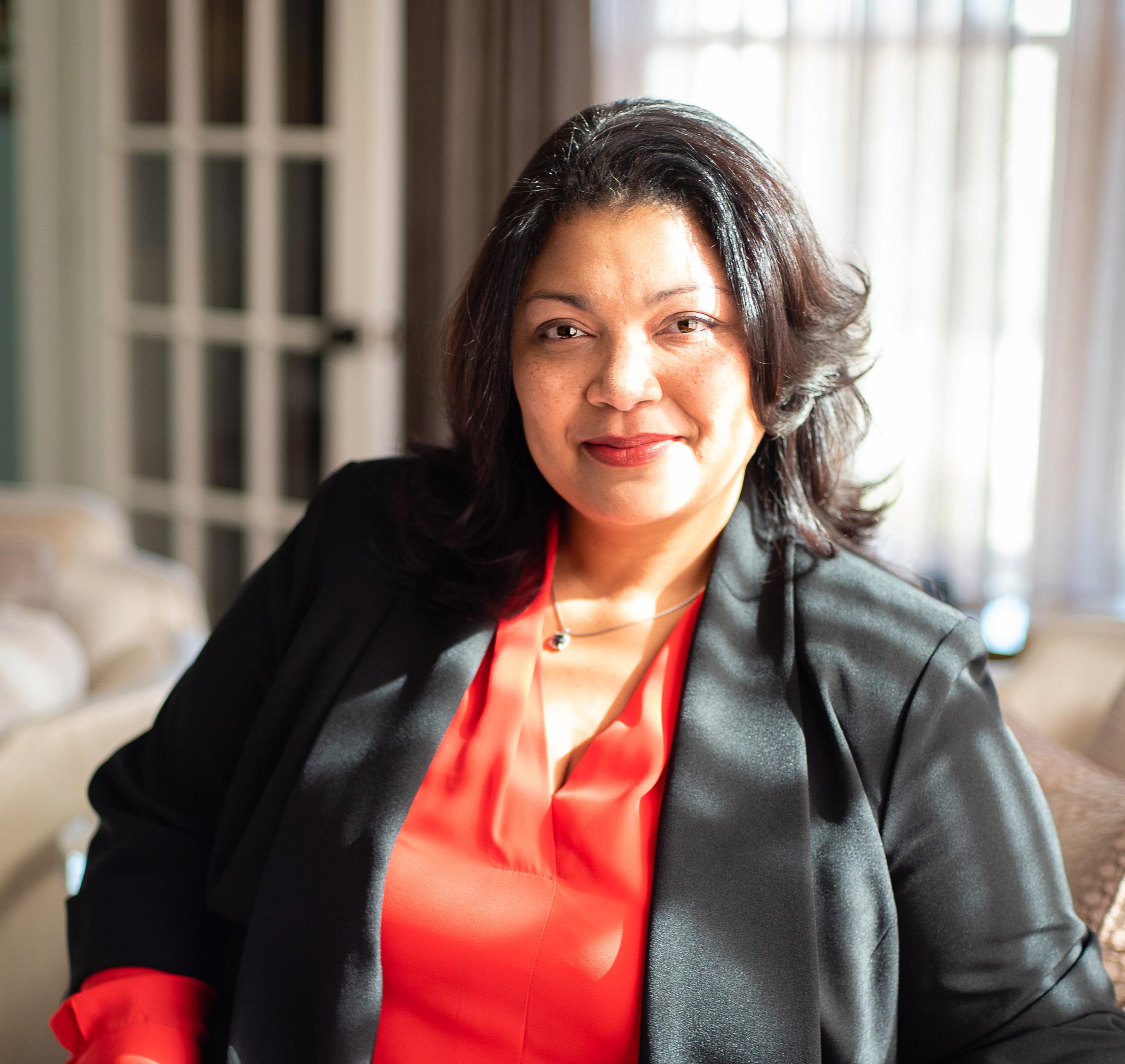
“I feel a responsibility that if I can accomplish more, I should try to do it—not only for myself, but because it opens possibilities and opportunities for so many others, especially women of color and Latinas.”
A Voice for Justice
De La Cruz is particularly proud of her ability to fuse her compassionate push for diversity with her leadership voice on behalf of the Tahirih Justice Center, a national charitable organization that provides direct services, public advocacy, training and education, and legal services to immigrant women and girls fleeing gender-based violence and persecution. “Ninety percent of the time, our clients are successful in re-establishing their lives in the United States, whereas if they show up at a detention center and the like without representation, they’re more likely to be sent back,” she says. “I’m proud to use my knowledge of the law and help establish a new life for people who are completely underserved and underrepresented. I do a lot of fundraising and visible work to bring attention to this amazing center that helps many women of color—and many Latinas in particular—seeking that second chance. I’m a lawyer, I’m a Latina, and a woman of color, so Tahirih’s mission is crucial to me.”
connecting with the political environment throughout the region. We regularly have to get our crisis management teams activated to make sure that our people are safe. We have to have plans in place to deal with whatever surprise may arise.”
That ability to look out over the entire region fits De La Cruz’s perspective of leadership, as well. She compares the legal function to a lighthouse—and she needs to ensure it’s pointed in the right direction to keep everyone from crashing into the shore. “My job is to set the bar and determine the direction for what is acceptable and what is going to help the business get to where it wants to be, while doing it the right way,” she says. To further fit the metaphor, De La Cruz
ensures she remains visible and accessible, a beacon and safe space for anyone in need of guidance.
As she empowers and elevates the Latino community, she also stresses the importance of building diverse representation in outside law firms and building bridges to other communities—to make sure the entire organization feels comfortable discussing the importance of diversity and representation. “You can make major change when you can bring other people along to feel an investment in diversity,” she says.
“Many years of working with Marjorie have greatly enriched us,” say Marcelo Bombau and Adrián Furman, partners at the Argentine firm

core strength in transactional work and international arbitration. Since our foundation in 1923, we have been in continuous evolution, participating in some of the country’s most complex and significant transactions and disputes.
Our highly specialized, boutique-style practice areas, allow us to build tailor made teams to meet our client’s multidisciplinary needs. Our commitment to excellence makes our partners take a hands-on approach to work within a cohesive, one-firm unit.
For more information about our firm please visit: www.bomchil.com

Bomchil. “She always drives the right mixture of sound legal advice—values, gatekeeping, and thorough understanding of the applicable rules— with the perfect ‘cultural’ tone.”
Through it all, De La Cruz insists on saving time and energy for family. “My greatest achievement to date has been being able to pursue my career while still being very present for my twin boys,” she says. Women in high-level careers such as hers face an incredible challenge attempting to balance work and life, and De La Cruz notes that it takes a massive amount of work to strike the balance. “You have to accept that, every day, that allocation of time is going to change—you’re going to have to adapt for whatever the needs are at that moment in time,” she says. “Every day it’s a conversation between me and my family, making sure to prioritize and share time well and getting enough help when needed— because you can’t do it alone.”
Each morning, De La Cruz journals, finding quiet and calm to focus. Frequently, in this time, she returns to a legacy statement, goals for her life both personally and professionally. “Everyone should think about living life the way they want to be remembered,” she says. “My legacy statement is my personal lighthouse.”
There is one theme that connects De La Cruz’s personal and professional lives: an opportunity to help, inspire, and empower others. “I feel a responsibility that if I can accomplish more, I should try to do it—not only for myself, but because it opens possibilities and opportunities for so many others, especially women of color and Latinas,” she says.
INSIG HTS Insights
The philosophies of innovative leaders have the power to inspire and spark change. Read on for the thought-provoking insights of these successful executives.
128 Sandra Cardona, Hersha Hospitality Trust
132 Lea Sandoval, JLL
136 Alexander Reyes, Citrin Cooperman
139 Ernesto Soler, Popular Bank
142 Myrna Olvera, East West Bank
146 Russ Calderon, CompuGroup Medical
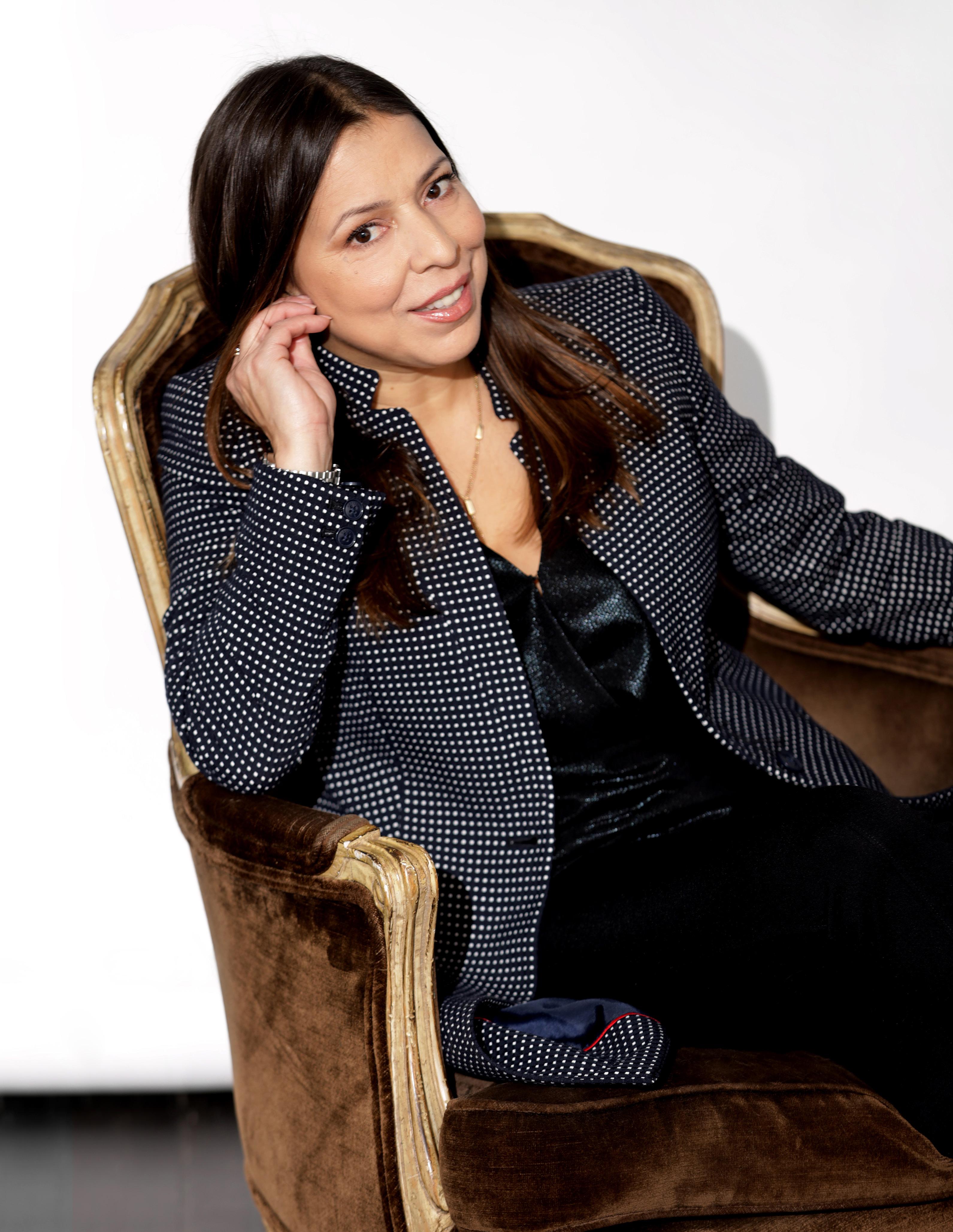
Cardona VP, Development and Capital Planning
Hospitality Trust
Sandra
Hersha
Remain Agile, Lead According to Context
Sandra Cardona draws on her personal and professional background to be a versatile leader for Hersha Hospitality Trust.
BY REBECCA ROBERTS

ADVICE TO FELLOW LATINAS
Cardona feels well-respected professionally, though some people may be surprised to see a Hispanic woman in her role. Her advice for others is to focus on acquiring the skills and traits necessary to be invaluable. “Part of this self-development should also hone in on how you present yourself, your personal style within the context of your work environment, and your interpersonal skills,” she says.
On career advancement, Cardona says, “The stats prove that women work harder and are paid less than their male counterparts, primarily because they are not negotiating for a higher starting salary, nor requesting a raise or promotion when due. Understanding what you’re worth and learning how to be your own advocate has to become the new norm.”
She continues, “Overall, be prepared for the fact that you will have setbacks that may or may not relate to your gender or race. How you navigate through these challenges can significantly alter your course. Counter this by being both proactive and strategic: seek out a mentor or join a professional chapter in your community.”
OVER THE COURSE OF HER LIFE AND CAREER, SANDRA CARDONA’S experiences taught her to value adaptability and self-awareness. As she became an architect and then stepped into her current role as vice president of development and capital planning at Hersha Hospitality Trust, Cardona increasingly assumed more responsibility. In doing so, she learned to draw from her past in shaping her leadership style today.
A native New Yorker, Cardona was born in East Harlem and grew up in the Bronx. “I was surrounded by people who spoke their minds and were not afraid of confrontation,” she says, which helped her ultimately forge her own unwavering sense of self. Cardona credits her parents in having the strongest influence on her. She says that her mother always believed in her and that her father led by example through his own work ethic. He immigrated to East Harlem from
“I’m not afraid to take risks. This has allowed me the freedom I needed to advance. I never asked if something was too hard.”
Puerto Rico when he was a teenager, and she recalls that he always worked multiple jobs, gaining additional skills and responsibilities along the way—just as Cardona has throughout her career.
When she was eleven, her father was the live-in superintendent of an apartment building. Cardona would do odd jobs for him, such as shoveling snow and taking out trash. She says that this not only helped her develop a strong work ethic, but it also gave her “a sense of pride in layman’s work,” she says. “Every task counts, and the people furthest behind the scenes make such an impact.”
In college, Cardona first pursued art, then switched gears to architecture. She held various jobs while earning her degree, and at one point was working forty hours per week as a pharmacy tech while also enrolled as a full-time student. Despite bearing a heavy workload herself, Cardona never lost sight of gratitude for those who helped her along the way. She describes her supervisor at the pharmacy, Michael Guckenberger, as an inspiration. He was flexible regarding her sched-
ule—she could sign up for the classes she needed during the day and take evening shifts at the pharmacy. “Guckenberger knew I was working and going to school. He was so generous with advice and really cared,” she says.
As an architecture student, Cardona says that she was eager to begin working in her field. She worked for several design firms, some of which focused on hospitality. Then, in 2004, she became a client representative at Hersha Hospitality Trust, a real estate investment trust that owns and operates upscale hotels. “I was simultaneously drawn to both design and the managerial side of projects,” she says. When she transitioned even further into managerial duties in her current role, Cardona explains that the wide array of people she has known in both her personal and professional lives became assets in developing her ability to empathize with so many different people on a daily basis. Because she works with executives, contractors, and many others, Cardona emphasizes the importance of adapting her communication to fit her audience.
She is also mindful of how different leadership styles work best for different people. Noting that not everyone thrives under the same direction, she credits this awareness as critical to her evolution as a leader. “You need to tailor leading someone to their skill sets and abilities. Otherwise, you can become stagnant with a one-size-fits-all approach,” she says. At first, Cardona admits that she found it difficult delegating tasks to others and trusting that the work would get done, but she recognized that approach as unsustainable and actively worked to overcome the mindset. “I see the concept of a leadership style as a ‘work in progress,’ which leaves room for me to grow,” she says. Thinking of those she admires, Cardona values the ability to evolve and approach each situation within its context. This flexibility, she says, is the mark of someone who is truly secure and generous.
Cardona stresses that it is also important to strike a balance between work and life. “When I’m home I try to be present and fill my life with good times and laughter,” she says, noting that she enjoys painting and cooking.
Finding satisfaction in her personal life allows her to not only rise to challenges, but seek them out in her professional life. For Cardona, an openness to uncertainty has always been the gateway to new experiences. She says, “I’m not afraid to take risks. This has allowed me the freedom I needed to advance. I never asked if something was too hard.”
Green Concept Construction

Green Concept Construction delivers successful projects by integrating building skills and innovation with design management, together with a clear understanding of the client’s requirements, to achieve certainty of delivery and project cost with comfort and safety of guest in mind.
When we perform work in a Hotel that your Guests come to relax and enjoy themselves, we manage all aspects of construction process so you can focus on your customers and business.
We are passionate about all aspects of the construction project and this is shown when we strives to achieve the highest standards of work on any project that we takes on.
Our experience working for hotel owners, hotel operation experience as well as General Contractor has enabled us to exceed expectations. 23241 Ventura Blvd #224 Woodland
A Team is as Strong as Its Members
BY REBECCA ROBERTS
Lea Sandoval’s team-focused leadership style has resulted in a thriving culture in JLL’s Denver office; she’s working to do the same in Los Angeles.
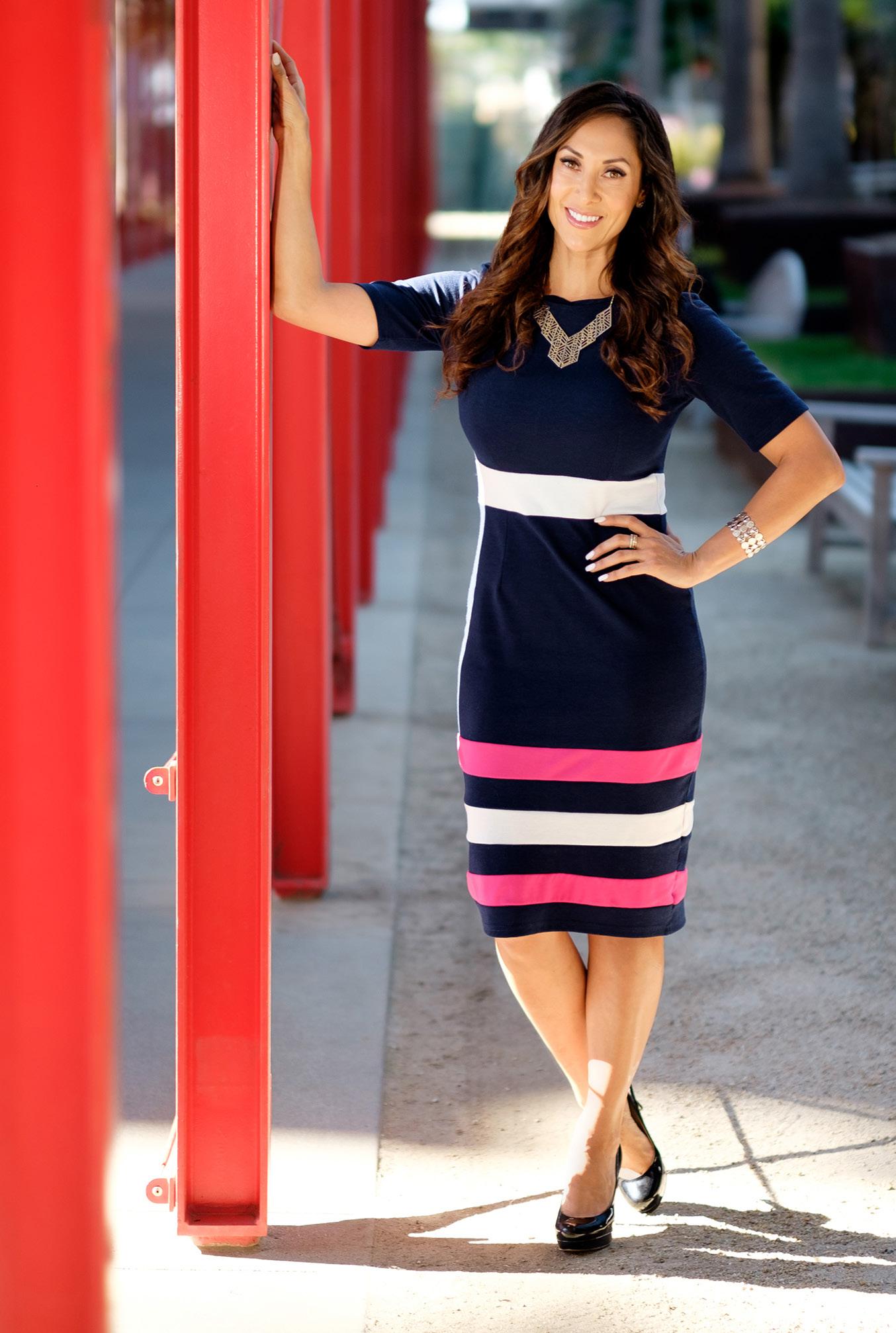
Lea Sandoval
SVP, Director of Operations, Property Management
JLL
WHEN LEA SANDOVAL WAS IN HER EARLY twenties with two young children, she joined real estate services firm JLL as a temporary, entry-level tenant services coordinator, working the front desk of an office building. She explains that the challenging aspect of this time in her life wasn’t just supporting her children, it was also that, as a young Latina mom, she felt automatically judged in a negative light. This adversity fueled her to disprove that judgement ever since.
Today, she is the senior vice president and director of operations running property management in JLL’s Los Angeles office. In this position, Sandoval remains dedicated to elevating the voices of other Latinas, reframing the narrative of being a woman and a minority in a male-dominated industry, and cultivating the leaders of tomorrow through her approach to corporate culture and teamwork.
Before her move to Los Angeles at the end of 2016, Sandoval spent the majority of her career at JLL in Denver. As she rose through the ranks and took on more leadership responsibilities, she built up the Denver property management team, emphasizing collaboration and continuous education. She is emphatic about the importance of leading through action, and notes that she never shies away from getting down in the trenches, rolling up her sleeves, and working alongside everyone else.
At its core, Sandoval says that a team is as strong as its members. “To have a successful team,” she says, “you need trained, motivated, and nurtured individuals.” Sandoval makes an effort to suss out the strengths of each team member, and encourages those she works with to take on promotions and new challenges. “They know I’ll always be by their side if they hit a roadblock or if they have questions. I’m always accessible,” she says. To keep people motivated, Sandoval wants her team to have a sense of camaraderie, that they are all approaching challenges together.

PATERNAL INSPIRATION
Growing up, Sandoval saw the many sacrifices her father made on behalf of their family as well as the country as a Vietnam war veteran. He lived his life for his kids, and watching him taught her to value hard work and strive to be someone that her own children would be proud of.
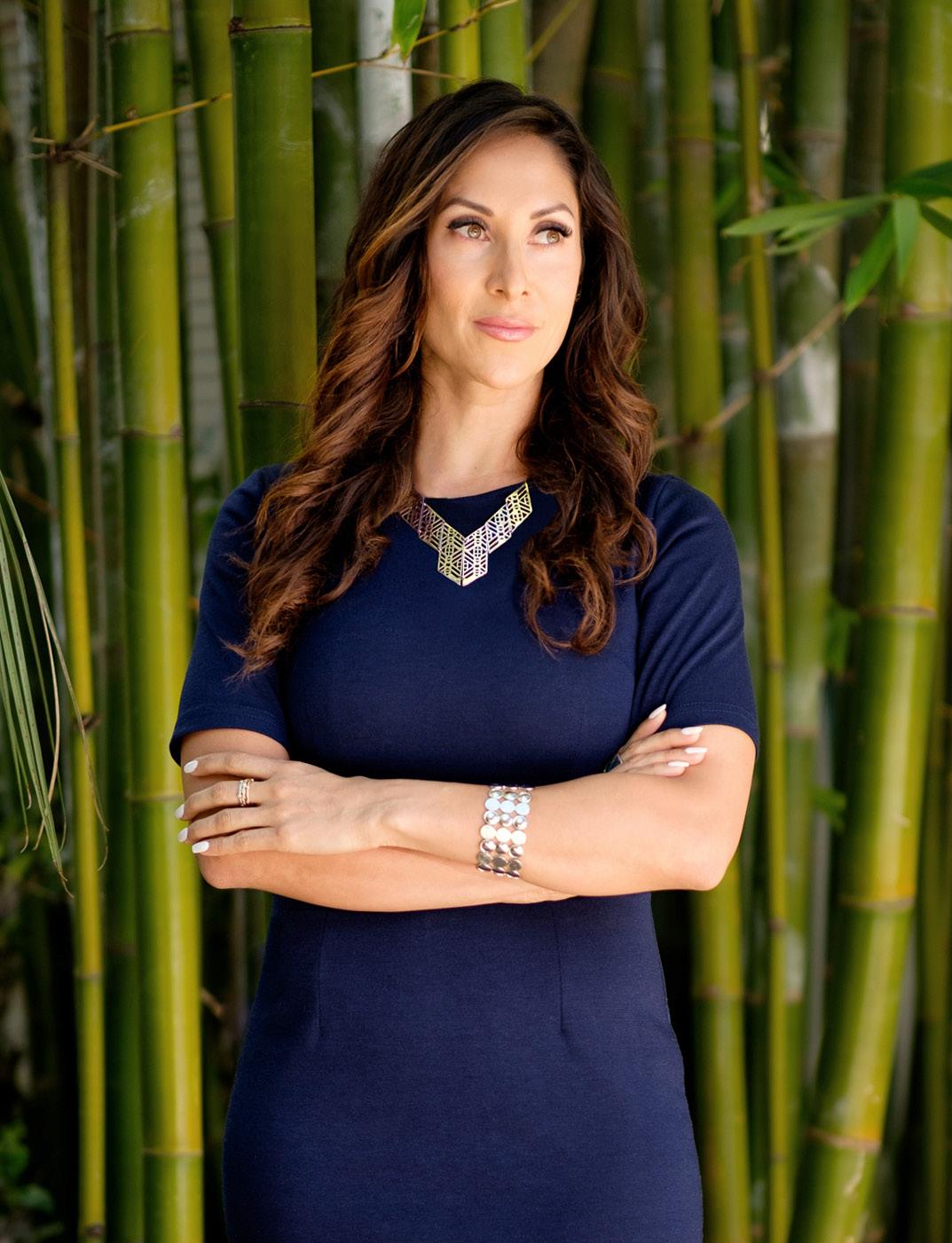
Additionally, she encourages her team to learn from one another, and includes herself in this mandate, too. She says, “I never miss an opportunity to learn from my team. Everyone always has something to teach me as well as the other way around.”
Though she was successful in Denver, Sandoval knew she had outgrown her role. She began traveling to other markets whenever an issue came up that she could solve. Soon, her personal and professional circumstances aligned and she made the leap to Los Angeles. The team there had a lack of structure compared to Denver, and rebuilding the culture there would be one of her greatest contributions.
PHOTO: DANIEL RHONE
Sobre su Familia
“Building a culture is more important than anything else. Without culture, you lack loyal and engaged employees with something that draws and keeps them coming to work,” she says. “I wanted to take on the challenge of LA. I knew I had done it before [in Denver] and that it could be done again.”
Due to the fact that the Los Angeles office oversees the entire Southwest region (Southern California, Arizona, Nevada, and Hawaii), one of Sandoval’s biggest barriers to creating a cohesive team was that many employees worked remotely in other markets or other states. Her team back in Denver made the effort to get to know one another personally, and she was determined to foster the same rapport in Los Angeles. Sandoval initiated monthly meetings for her entire Los Angeles management staff, some of whom had never met each other before. She also focused on acknowledging her entire team’s contributions. “I implemented an annual year-in-review and employee rewards recognition. We bring in all the employees to a big event and do some formal and some silly awards, like ‘property team of the year’ and ‘most likely to survive a zombie apocalypse,’” she explains. The Los Angeles office also now showcases employees on a monthly basis via a regional newsletter. On a smaller scale, Sandoval notes that even a “thank you” via card, email, or text goes a long way.
Although there had been a lot of staff turnover when Sandoval first arrived in Los Angeles, she is optimistic about her team’s future. “We are finally at a place where the people here are those who want to be here, who share our vision, and want to continue to build the culture,” she says.
What’s more, Sandoval is in a position where she is priming the next generation of leaders at JLL. She wants to see more women step into higher-level positions and facilitating this is one of her major motivators. Emphasizing her own life experiences, Sandoval reiterates that hard work and dedication can open seemingly insurmountable doors. She says, “I have a big passion for my team because the mid-manager level is primarily female. There are a lot of opportunities for them to grow, and if I can cultivate and build strong leaders today, they can be the next leaders at the executive level tomorrow.”
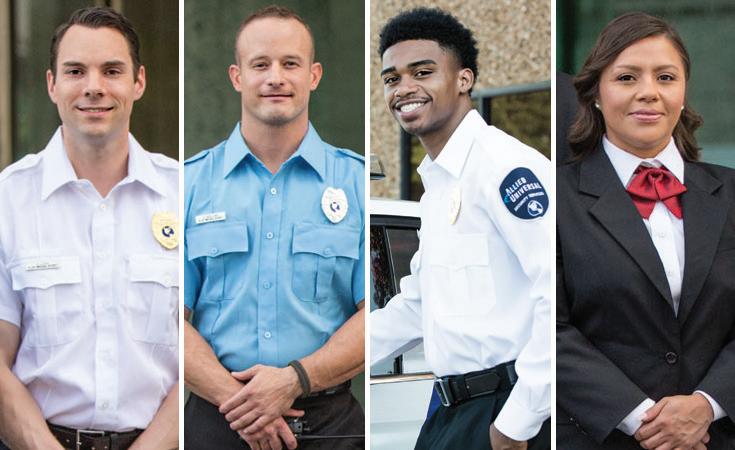
Power Growth, Effect Change
AFTER NEARLY TWENTY YEARS WORKING FOR SUCH FIRMS AS EY and Mitchell & Titus, Alexander Reyes wanted a new opportunity to learn. He was stable and satisfied at the big firms, but sought to exercise his entrepreneurial spirit, proclivity to lead, and readiness to give back.
He landed a role as the financial-services practice leader at Citrin Cooperman, an accounting and consulting firm where he could take his experience and use it to drive his career and the business forward. Reyes says that the organization is suffused with an entrepreneurial mind-set; here, he’s found a place where he can make the strategic decisions that advance the firm’s goals and provide growth opportunities for himself.
Reyes grew up in the Bronx. Neither of his parents attended college themselves, but they repeatedly emphasized the value and importance of education. At that time, he didn’t know how, but he was determined to build a more prosperous life for himself. In high school, he was in a program focused on medical sciences, on track to study pre-medicine in college. But he discovered that he wasn’t passionate enough to be truly successful in medicine. He earned admission to Fordham University and began studying business.
“I remember my mentor said to me: ‘If you want to be truly successful, follow your passion.’ That’s when I started looking into accounting and consulting as a profession,” Reyes recalls. “This was where I could really invest my time doing something I enjoy—to create opportunities over the long term.”
Reyes’ collegiate and professional communities helped him discover his own entrepreneurial mindset: Powering growth in order to effect positive change in people. “For me it’s about taking something and making it much bigger than it is—and during that process inspiring people, motivating people, and impacting lives in our community,” he says.
Now in its fortieth year, Citrin Cooperman is a fast-growing full-service assurance, tax, and advisory firm. It is currently one of the top twenty-five accounting firms in the United States. For Reyes, who spent much of his career at the big four, it’s an exciting time: The firm is expanding into new areas in the United States and Europe, while investing in emerging financial technologies. “This is kind of that ‘perfect firm,’ where I have the resources I had at the larger firm, but with an entrepreneurial spirit,” Reyes explains. “[Combine that] with the fact that we’re growing so rapidly, I really feel like I’m a part of something special as it’s happening.”
BY JOSEPH KAY
Alexander Reyes finds his platform to make an impact
at Citrin Cooperman.
As the financial-services practice increases its presence in markets such as Boston and the Pacific coast, Citrin Cooperman has to make clear what sets it apart in a crowded, competitive industry. For Reyes, that means sharing the story of their client service model. The firm ensures senior team members can be active on accounts and building trust as business advisers.
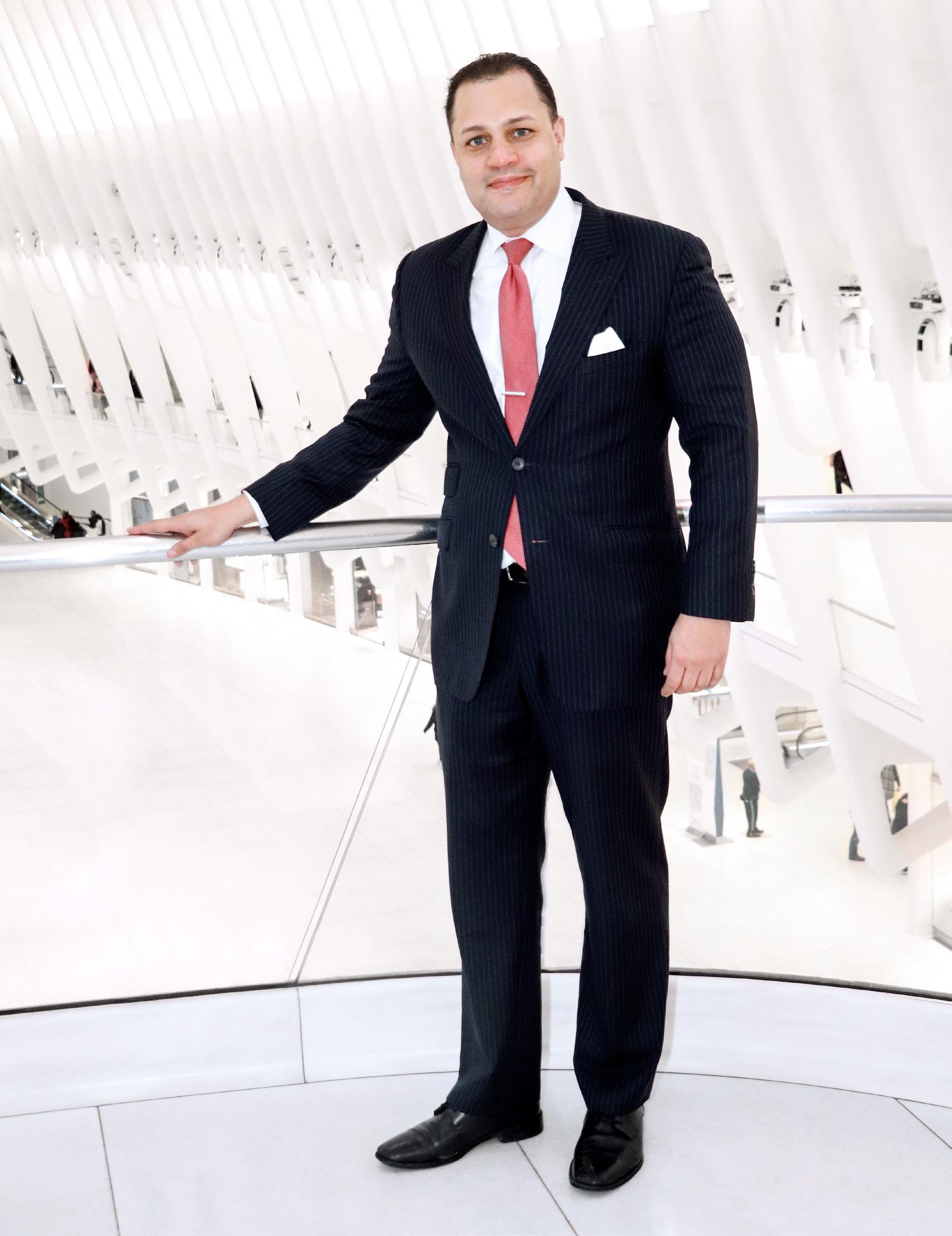
Alexander Reyes | Partner, Financial Services Practice Leader | Citrin Cooperman


“Frankly, a lot of these firms do the same thing, so it comes down to the relationships you have and the trust they have in you,” he says. “At the outset, we allocate a much higher percentage of our budget to partners spending time at the client’s side, providing guidance, going beyond the traditional services.”
It’s paying off: over the last year, the practice grew by more than 40 percent. Reyes also credits that rapid pace to partners’ flexibility in setting the direction of their business units. Their versatility, combined with the firm’s extensive institutional resources, puts advisers in the right position to take calculated risks and develop as individual leaders. “Embracing change is great—because you either adapt or you perish,” he says.
“When you have that kind of mind-set—to want to build, grow, and lead—it can make a significant impact. Not just on a business, but on people.”
Reyes’s own successes in the industry empowered him to invest his time and talent back into his community. He serves on the board of Latino Network Coalition, an organization made up of ERG groups across top Fortune 500 US companies, as well as the New York advisory council for the Hispanic Scholarship Fund. Through these commitments, he hopes to inspire young people to find their own passions, work hard, and overcome challenges similar to his own.
He discovered early on the value of surrounding himself with positive people. During his time at Fordham, he connected with INROADS, a corporate-leadership program for students of color, and interned at Time Warner. Knowing that those programs supported him through a critical moment, Reyes works to make sure they’re available to others. Anyone can make it, he affirms, as long as they have the right support and a willingness to work hard.
As he lists his philanthropic involvements, and reflects on the long and lucky journey it took to participate in them, Reyes confides that this was always the real career goal, and the true aspiration of any honorable professional.
“I think it’s always been about how I can put myself in a position to really make an impact in my community,” he says. “When you have that kind of mind-set—to want to build, grow, and lead—it can make a significant impact. Not just on a business, but on people.”
Ernesto Soler shares experiences and lessons learned in his three decades at Popular Bank.
Right Place, Right Time
BY JOSEPH KAY
ERNESTO SOLER’S NEARLY THIRTY-YEAR career at Popular Bank spans two different cities, multiple leadership roles, and a myriad of legal, technological, and organizational transformations that have rocked and righted banking since the 1980s.
“We have a very open, collaborative culture, and I’m proud to say to people that I work for Popular,” he says. “If I honestly could not say that, I would not be here.”
As senior vice president and head of administration for Popular Bank, he oversees every aspect of back-office operations in the continental United States. He also has indirect oversight of relevant support functions in the head office in Puerto Rico—anything that affects stateside operations goes through him.
Popular Bank was founded in Puerto Rico in 1893 and became the island’s largest single bank by 1950. The company continued to expand aggressively, and in 1961 opened its first stateside branch in New York City. Today, it maintains fifty-one branches in three states, with US assets of nearly $10 billion.
Soler’s early years were defined by Popular’s merger with Banco de Ponce in 1990.
At the time, Popular was the largest bank on the island, and Banco de Ponce the second largest. Both had operations in the continental United States, where the situation was reversed—Banco de Ponce had larger operations than Popular. Soler remembers that stress was high, as in any merger. Both institutions had been around for more than seventy years and both had proud cultures—a serious corporate commitment kept the whole project together.
“We made a commitment to the employees and to Puerto Rico in general that there would be no layoffs,” he says. “That was an inspiring part of it, but obviously you have to designate managers from either side, and that’s hard.
“I’d been in banking barely six years,” he adds. “It was eye-opening. You can read about mergers and how difficult they are, but when you live it, it’s a completely different story.”
That early challenge prepared Soler well, and foreshadowed his role in Popular’s ongoing growth across the United States. The growth early on was primarily through acquisitions; Soler’s role through 2001 as assistant controller involved due diligence of the target
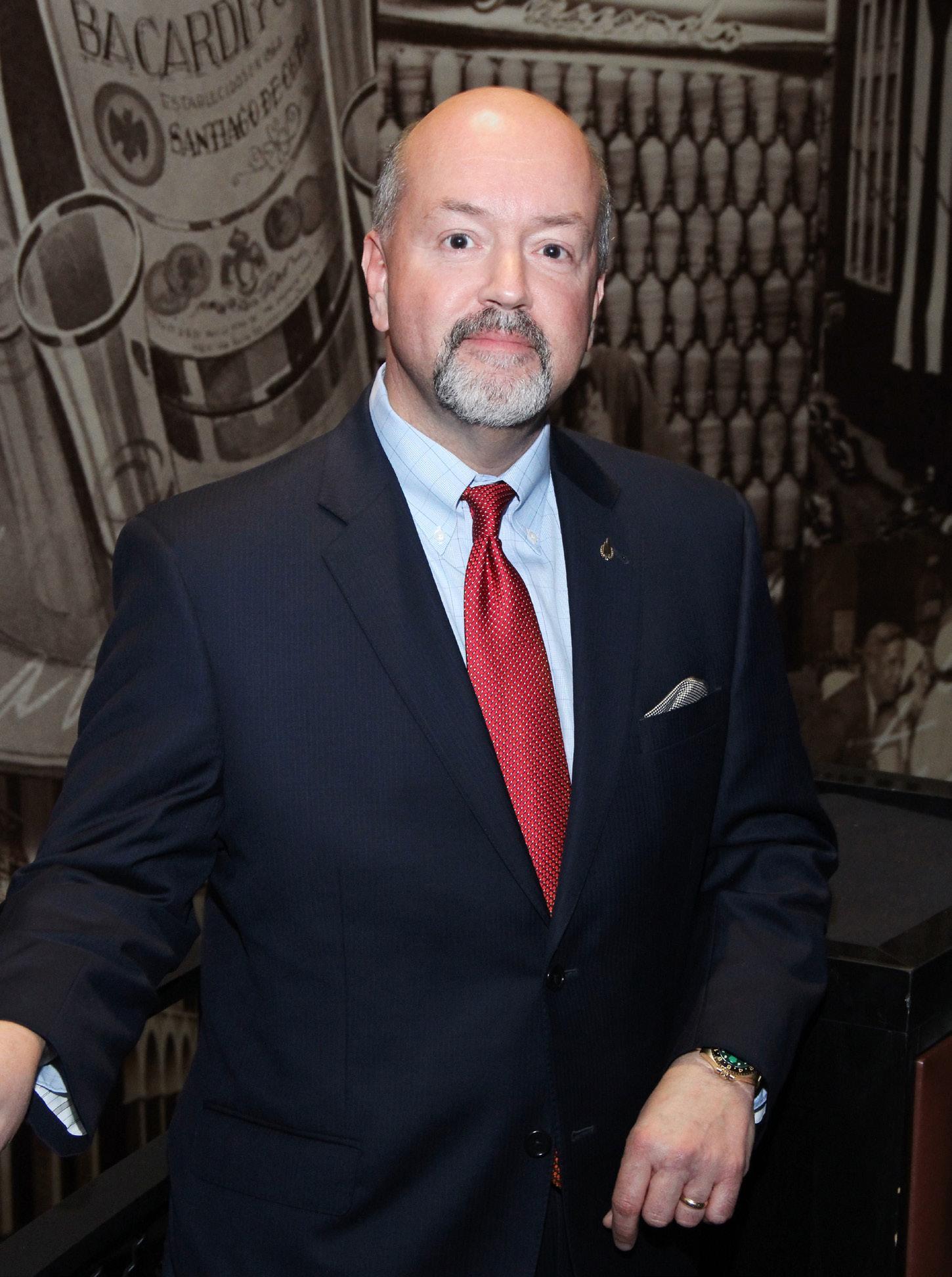
Ernesto Soler
SVP & Head of Administration
Popular Bank
institutions, and the rate of those acquisitions kept him busy until he relocated to Chicago. There he planned and directed the improvement of the profitability of the retail network, and eventually relocated the whole controller unit from New York, taking over as controller for the bank and later as director of finance.
With the 2008 financial crisis, the organization elected to rapidly shrink its business in the continental United States. Some businesses were exited, such as construction and SBA, and some were sold, such as an equipment-leasing subsidiary, along with some branches in New Jersey and Texas. Then, Soler made what he remembers as a “fateful” trip to Puerto Rico.
In the United States, Popular Bank had survived the financial crisis and it was back
to being moderately profitable—a respectable accomplishment under the circumstances, but untenable in the long-term. He went with the president of Popular Bank to Puerto Rico to pitch a plan to the Popular board: consolidate resources and cut costs by exiting California and Illinois. The board’s response was more aggressive: do that but go further by moving all of Chicago’s back-office functions to Puerto Rico.
“When we were told that, it was a wakeup call, but we had our task,” he recalls. “How do we get this done and how do we make sure we don’t lose our best people, and manage this transition to Puerto Rico?”
Most of the 300+ back-office associates in Chicago had to be let go, but Soler says that dignity and respect were key to forestalling animosity. Loyalty bonuses and transition pay were an investment in a smooth transition—and an opportunity to demonstrate daily leadership.
“It was gratifying to see how loyal they remained until the last day,” Soler says. “I think we did it the right way, so employees felt we were fair. To this day I still stay in communication with some of those people. They still call me for career advice and some ask for references.”
With 90 percent of finance functions moved to Puerto Rico, Soler had effectively eliminated his own position. Fortunately, he was offered his current role and transferred back to New York where the executive offices were relocated.
Today, Popular Bank is as strong as ever, growing its assets to nearly $10 billion and having completed one of its best years in terms of profitability. It continues to update its retail services by transforming its branches: Thanks to online and mobile banking, smaller branches with leaner staffs can serve equal and growing populations. In New York, for example, where real estate prices reach breathtaking heights, the organization might decide to exit an existing lease for a
bigger building and open a smaller, updated branch nearby—prominently featuring expanded-service smart ATMs over outdated teller windows.
Soler explains, “They’re all open-concept with no teller area and a universal banker. We’ve introduced digital technologies so every branch has smart ATMs; we’re enhancing mobile and online banking to move people toward those channels, and we’re starting to see traction.”
Popular Bank’s customer base trends slightly older, though, which prompts caution toward replacing services or “modernizing” recklessly. “We can’t alienate those customers. We have to have both technologies,” he says, adding, “How do you weigh that while maintaining a great customer experience? That’s one of the biggest challenges right now.”
For Soler, it’s simply fun: the puzzles of logistics and management, the challenges of dynamic leadership, the technological evolution that continuously renews the industry. When it stops being fun, he tells himself, it’s time to look for another job.
After twenty-nine years and so many key positions in one organization, associates and new employees often ask him to describe the key to success and advancement. “It’s two things,” he says, “First and foremost, you have to be ready for anything that may come your way—always be curious and hungry to learn. And the second one is some degree of luck. You have to be in the right place at the right time.
“The worst thing that can happen in your career is that they say, ‘We’re ready. We’re going to do this.’ And you say: ‘No, I am not quite ready.’ You will be left behind and the same chance might not come by twice.”


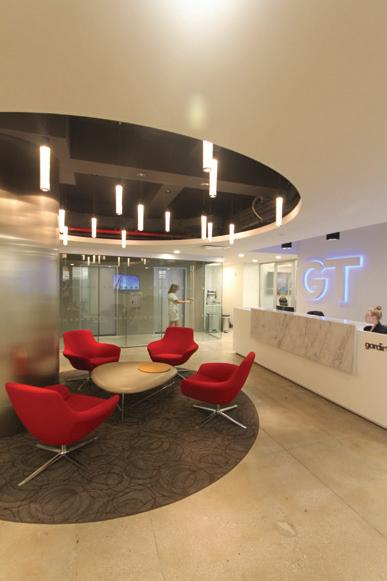

Apogee Design & Construction is an experienced New York City firm with vast knowledge in commercial, retail, hospitality, and institutional construction. Since it was established in 1994 by Thomas A. Calamari, Apogee has serviced the needs of many industry leading companies. We pride ourselves in building strong and ongoing relationships with our clients by assisting from day-one. Apogee offers an array of services including consulting and project management. We are committed to providing superior quality, on-time performance, budget control, and most importantly, exceeding the client’s expectations.
SERVICES
Design Collaboration
Design/Programming Consulting
Pre-Construction Consulting
Budgeting /Value Engineering
Owner Representative Service
Project Management
Construction Management
General Construction
SPECIALTIES
High-End Corporate
Retail Spaces
Specialty Construction
Medical Facilities
315 West 39th Street
Suite 705, New York, 10018
+1 (212) 244 2844
Money Keeps No Secrets
BY RUSS KLETTKE
With a banking career that began in high school, Myrna Olvera seems born to be in the industry. Her expertise and leadership in Bank Secrecy Act processes and compliance illustrate how tenaciousness pays off.

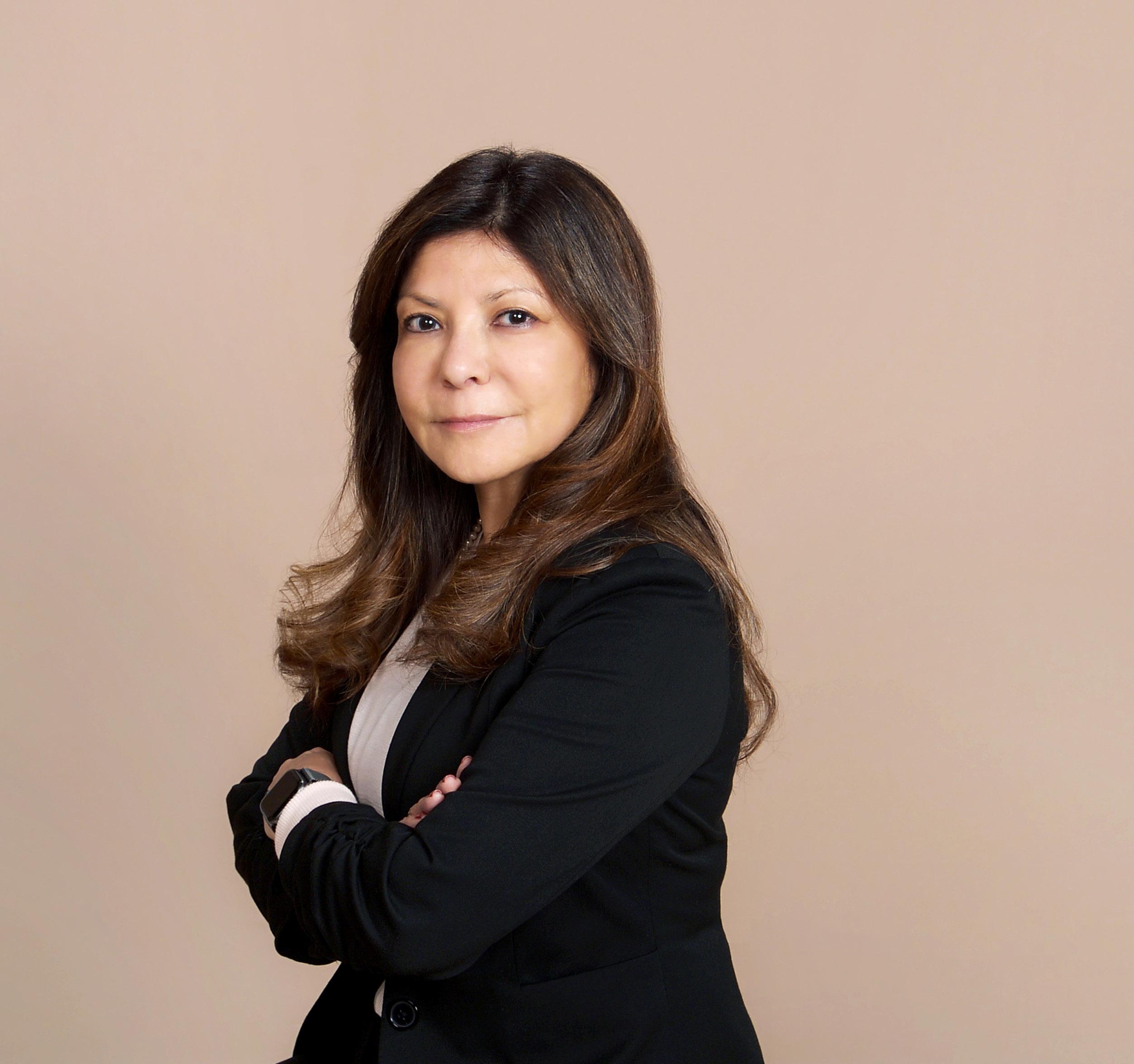
Myrna Olvera
THE WHOLE OF THE FINANCIAL SERVICES INDUSTRY—BANKING, lending, credit, etc.—touches our lives and our work in dozens of ways. The numbers tell stories and sometimes even reveal misdeeds. Not everyone is aware of this, but Myrna Olvera sees it every day.
The senior vice president and Bank Secrecy Act (BSA) officer for East West Bank manages an exceptional team that works to develop, implement, and coordinate anti-money laundering systems and controls. The team also reports to state and federal authorities in the event of suspicious activity, which may include a wider range of financial crimes such as drug trafficking, terrorism, and felonious fraud.
Olvera is also a mom, the daughter of a migrant farm worker (“this was before Cesar Chavez,” she notes), and a well-practiced public speaker. Her career began with working for a finance company in her financially strapped youth (one of two jobs she concurrently held during high school, the second being on crew at a McDonald’s restaurant), and she’s worked in many different sides of banking ever since. She didn’t set out to lead a team of managers and analysts (investigators), but her career track shows that she knows the ins and outs of the banking industry—a base of knowledge built over the course of momentous financial times and through many roles and institutions.
“I was working in an employment program in my high school when a member of the board of education asked if I could type,” she says. “I said yes.” That, in combination with a good academic record, got her the job with a finance company. The business served the low-income community with less-than-stellar credit, which provided Olvera a look at some key dynamics of personal finance. “I understood the bigger picture and the importance of having good credit,” she recalls.
She continued working with that firm as she attended the University of Southern California, eventually moving over to the firm’s escrow department. Subsequent positions at several other financial institutions included the mortgage department; back-office functions in a credit union; working in a call center for deposits, loans, credit cards; following the management-trainee track; and then becoming the first Hispanic manager to oversee an East Los Angeles bank branch. Her bilingualism was a distinct advantage there.
The ever-changing bank industry led Olvera to roles in several institutions—merger redundancies have twice sidelined her, but she always managed to find her next job. She had a breadth of experience (along the way she learned about data mapping, marketing, legal
“Information can be sliced and diced in different ways. We have to know where to target our energies.”
disclosures, and worked in the communications department at one bank), each of them subject to different regulatory regimes, making her a well-rounded and strong job candidate. She landed at East West Bank in 2016.
In one of those positions, she helped with the investigation of bank robberies. But the kinds of crimes that get investigated under her eye and those of her team are less obvious and sometimes much larger in scope.
At its core, the Bank Secrecy Act of 1970, which has been tested in the courts and amended with provisions of the USA PATRIOT Act passed in the aftermath of 9/11, is sometimes referred to as the anti-money laundering laws. It requires financial institutions to establish internal controls, policies, and procedures to train employees on an ongoing basis, to conduct audits, and to have designated compliance officers. Another component of the BSA is the Office of Foreign Asset Control (OFAC), an agency of the US Treasury Department that enforces economic and trade sanctions against countries and groups of individuals involved in terrorism, narcotics, and other disreputable activities.
Her current employer, East West Bank, was established to serve the Chinese-American community. It is a full-service commercial bank that has more than 130 locations in key cities in the United States and Greater China. She enjoys learning about this culture and finds similarities to her own culture.
The talents and skills she looks for in her BSA compliance team include: an interest in a broad variety of industries, international experience, entrepreneurial instincts, and comfort in working with Big Data, including searching through criminal and other databases. “Information can be sliced and diced in different ways,” she says. “We have to know where to target our energies. Most importantly, we are people who roll up our sleeves and have a passion and eye for the details.” Olvera fosters a team atmosphere, two-way direct communication, interaction amongst the team members, collaborative brainstorming, and teaching managers soft skills. She also mentions how phone calls to customers under review should not come across as an interrogation. “It should flow like a conversation.”
In addition to crime detection, her team’s work is about maintaining and sustaining a solid BSA program and avoiding enforcement actions for non-compliance. When truly suspicious activity is observed, the case moves up the chain for further investigation and potential government reporting.
Olvera believes strongly in staying networked in her industry, both to learn and to establish valuable connections. She does this in the most financially prudent way possible: She speaks at conferences. Covering topics such as “banking marijuana-related businesses,” “the new frontiers of transaction-monitoring analytics to combat money laundering, terrorist financing, and human trafficking,” and “operational risk–fraud,” her conference fees are covered by the sponsor and she helps build industry resilience at the same time.
So, it’s a good bet that wherever any one of us does our banking, someone like Myrna Olvera is keeping track of the transaction(s)—as required by law. What they protect us against is a lot bigger than just the money involved.

Crowe LLP: “We congratulate Myrna on being recognized for her contributions to the financial-services community and the organizations she has served! Myrna’s values, vision, and passion have always made our partnership an opportunity to innovate, create thought leadership, and establish leading practices. We are excited for her future successes!” —Arjun Kalra, Principal & Ralph Wright, Principal
From Culture Shock to Compassionate Leader
BY ABHINANDA DATTA
Russ Calderon’s immigration experience empowers him to lead a global “family” at CompuGroup Medical.
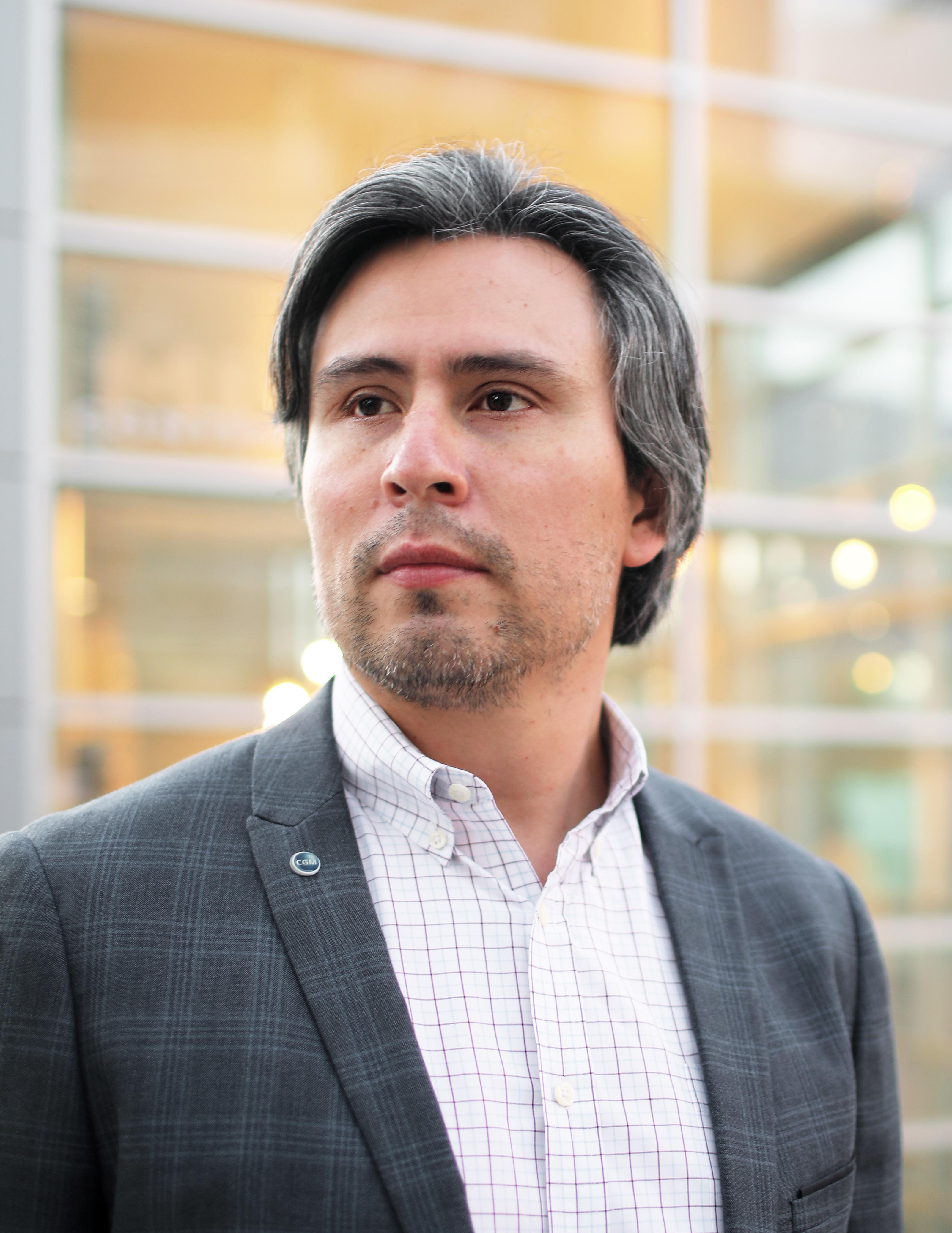
AT THE AGE OF SEVENTEEN, RUSS CALDERON EXPERIENCED TRUE adulthood for the first time when his family moved to the United States from their native Costa Rica.
“I came here in the summer of 1997 and the temperature was 115 degrees. I grew up in a tropical country and suddenly I was in a desert. From having a lot of friends and being a part of a community, I went on to having none of those. It was a big change,” Calderon says.
Costa Rica was a literal paradise for him where he grew up without any responsibilities. In the United States, he had to work hard to avail every opportunity. He started taking ESL (English as a second language) classes, and the first US purchase his family made was a PC.
Calderon began working as an administrative assistant at a behavioral-health services organization to support his family financially. “Back then, the office did not have an IT department, but I started to provide basic IT support and soon became the internal IT guy in the branch office,” he says.
This spurred his interest and he enrolled at Collins College in 2003 to obtain a bachelor’s degree in IT. After graduating, he applied to CompuGroup Medical, and has worked there ever since. With five promotions and a master’s degree under his belt, Calderon is currently the VP of operations and hosted services.
“It has been 13 years since I joined this company,” he says. “I came in as the IT guy, and today I proudly but humbly oversee everything that has the word IT in it. I got my master’s degree four years ago when I was already an experienced engineer and so was able to achieve a lot. Everything happened at the right time.”
Russ Calderon VP of Operations and Hosted Services CompuGroup Medical

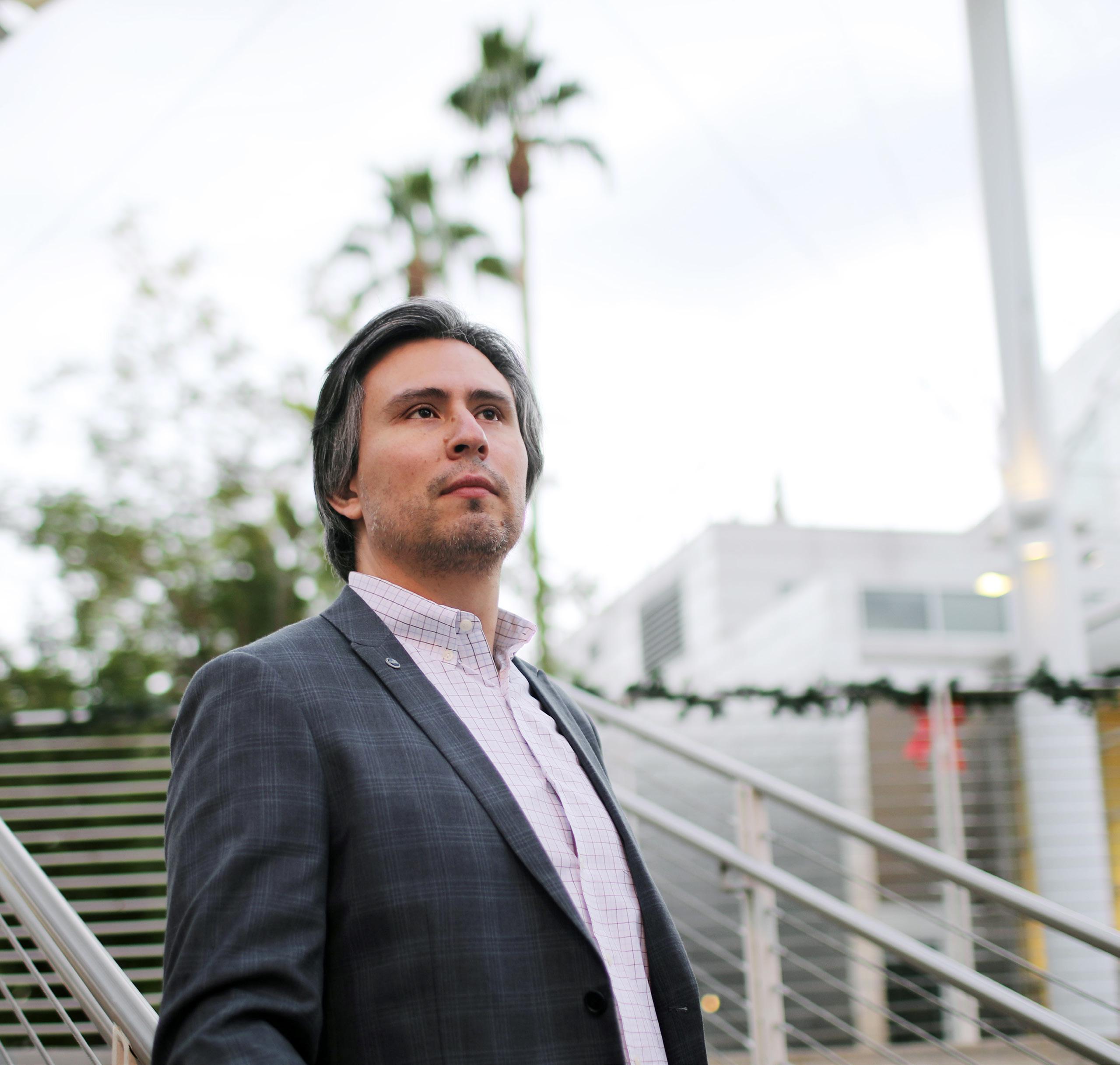
Calderon oversees two core subject matters: client IT and platform and server applications. Under client IT, he is responsible for dispatched services as well as the installation and maintenance of all client end points across collaboration spaces, such as videoconferencing devices in meeting rooms.
“While we have all these responsibilities, we also focus on trying to deliver the best service possible not only from a technical standpoint but also from a customer service perspective,” he explains. “We want our stakeholders to know that they can trust us. This is why we have a good reputation and are well respected.”
With the platform and server applications team, he handles the infrastructure for branch offices and data centers. The team creates cloud solutions for the stakeholders and their hosted services, and provides consulting services as needed for ongoing projects.
Calderon’s team also performs services required for CompuGroup’s business operations. This includes R&D systems, such as source code repositories and testing systems, as well as supporting web servers and database management systems.
“In summary, the spectrum of what we do with the platform and server applications team also has subcategories wrapped around everything, such as information security and regulatory compliance,” Calderon notes. “All these things are embedded into our day-to-day.”
Since 2014, he has been migrating and consolidating services from multiple data centers nationwide, and it all started coming together this year. CompuGroup is currently building its next generation of products, and Calderon’s department plays a vital role as they are the foundation for the firm’s external services.
His team is working on delivering a cloud platform that can be used in a more autonomous way by staff. “This cloud platform provides an improved cloud application management and enables more simplified orchestrations and automation,” he explains. Though the product will be used by the staff, Calderon recognizes its larger impact, as well. “I like to look at these products as something that delivers value to our customers.”
Customers—and staff—of CompuGroup Medical span the globe, and in building new products and delivering services, one of the major challenges Calderon faces is maintaining consistency across cultures.
“There are different healthcare systems in different countries and we have to comply with other governments. We are building frameworks so people have the freedom to be productive by innovating and creating new products and services,” he says. “We want to be open minded and synergize with other cultures. We want to give opportunities for changes and adjustments and provide great services so as to retain our customers. The key is to take an analytical approach and listen to the concerns of the staff and customers. I believe our people are our biggest asset, and this not up for debate.”
“There are different healthcare systems in different countries and we have to comply. We are building frameworks so people have the freedom to be productive by innovating and creating new products and services. We want to be open minded and synergize with other cultures.”
Calderon says that humility is the most important quality in a leader. Coming from a different culture, he understands the need for open communication and the importance of creating a collaborative work environment.
“I think what really sets us apart is that we call this a family,” he says. “This is very powerful; it creates collective intelligence and that is how culture is created. We understand each other’s strengths and weaknesses, which not only enables us to be creative and innovative, it also makes us more productive and efficient by matching each person’s capabilities to where they are best.
“The other day, a team member said, ‘When I am with you, I never feel as if you are the boss. I feel like I’m working with someone of my level,’” he recalls. “That’s exactly the experience that I want to create. This sense of equality and inclusion improves our morale and enables us to work towards the same mission.”
GLO BAL Global
International businesses present unique challenges— and opportunities—for corporate citizenship in multiple countries. The executives featured here thrive in navigating cultural shifts worldwide.
146 Nicolás José Muñiz Arias, WPP
150 Chris Franco, National Instruments
154 Carlos Hernandez, Baker Hughes, a GE company
The Constant Challenge
BY JOSEPH KAY
At global agency WPP, Nicolás José Muñiz Arias shines in the ever-evolving world of mergers and acquisitions.
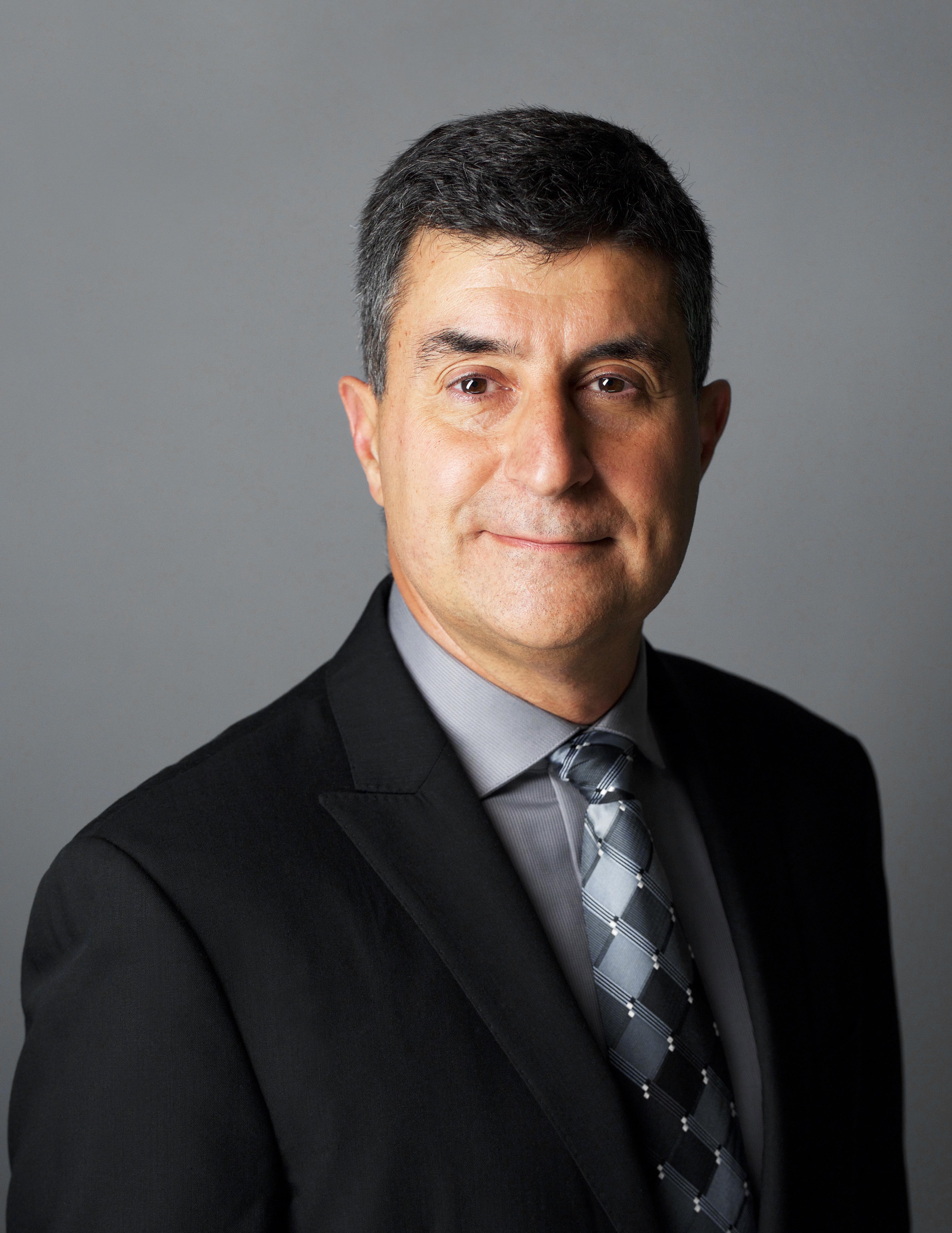
José Muñiz Arias VP & Tax Counsel for Latin America
Nicolás
“MY FATHER ALWAYS EMPHASIZED THE IMPORTANCE OF GETTING AN education,” recalls Nicolás José Muñiz Arias. “That’s an asset that no government can take away, and it’s valuable for the rest of one’s career.”
Muñiz’ parents were forced into exile from Cuba in 1961, shortly after the rise of Fidel Castro. With no money and no assets (other than his education), his father had to restart his career in economics and accounting twice—first in Spain, then in the United States.
Ever since, Muñiz has harvested more education than most. He attended medical school, then decided to change course and earned an MBA; however, he again (as with medical school) found he had little passion for the career pathways it opened to him. His mother suggested law school, pointing out his affinities for reading and writing. With law, something in him “clicked,” he says. After earning his JD, he found his way to his current specialty in international tax law, also earning a master’s degree at the Leiden University’s law school in the Netherlands. “The law constantly changes—that’s what fulfilled me, versus medical school or the MBA. I took a course in law during my MBA and I eventually leaned into that: the constant challenge,” he explains.
As WPP’s vice president and tax counsel for Latin America, Muñiz is the company’s primary resource on tax consulting and compliance matters throughout the region. WPP is a multinational holding company, managing a vast network of creative communications agencies across 112 countries. Headquartered in London, the agency began as a manufacturer of wire shopping baskets—WPP once stood for Wire and Plastic Products. Over the past thirty-five years, the company has continued to grow through mergers and acquisitions, as well as organically, keeping the ”constant challenge” alive for Muñiz.
When there are mergers, acquisitions, and liquidations, Muñiz crafts the strategic approach to reduce the company´s tax burden, in compliance with local laws. That means he starts each day with a general idea of what’s to come, and that picture always evolves as challenges emerge.
Two skill sets make Muñiz an indispensable resource: his cultural and language skills, and his broad technical knowledge of the tax laws throughout the region. He speaks and writes Spanish and is learning Portuguese (“I need to brush up—I’m not fluent yet, but I can read and understand it,” he laughs). The relevant local laws are written in those languages; his local contacts often offer to translate, but he prefers to conduct business in the local language. It saves resources, keeps the processes moving, and, more importantly, he can ascertain the purpose of the law by carefully reviewing it as drafted in the original language.
“We may be combining one line of business with another, under a new name—but we’re not dealing necessarily with a straightforward legal merger of just two entities. Instead we could be dealing with seven or eight entities with minority shareholders. That’s not so easy.”
Keeping things moving is important in Muñiz’ role, as his initiatives often have a timer—usually prior to year-end to monitor the tax impact. Having lived in Mexico and worked in Latin America since 1994, he can get up to speed and act quickly on new projects. “A lot of processes simply aren’t the same. With the United States’ corporate law, things can move a lot faster; it’s a lot less bureaucratic,” Muñiz says. “Transactions in Latin America generally take longer, often many months, mainly due to necessary filings and registrations. It can be hard to understand, but it’s an entirely different system, perhaps too formalistic for practitioners located in common law jurisdictions. Patience is essential to handle corporate and tax matters in Latin America.” That’s changing, he points out, as some local laws now permit investors in corporate entities with only one shareholder (as it is in the United States).
Laws evolve with political administrations and budgetary concerns, so Muñiz’ knowledge base is constantly growing and shifting. Key to his success has been his ability to recognize patterns; changes in corporate law in one country often foreshadow similar changes in another.
For example, he says, countries are cutting corporate income tax rates while raising dividend tax rates. Knowing that, he can make strategic adjustments across WPP’s regional operations.
“I constantly have to be up-to-date on tax laws and regulations that can impact our company´s operations,” he says. “A lot of the time, new levies are hastily enacted by local governments to raise revenues, such as taxes that will affect cross-border payments. It’s my duty to plan accordingly; and if I need more information to better understand the ramifications, I work with local counsel.”
Over the years, WPP made a number of acquisitions worldwide, so in Latin America the company is consolidating business units where appropriate. That creates a number of complex challenges for Muñiz.
“For commercial reasons, we may be combining one line of business with another, under a new name—but we’re not dealing necessarily with a straightforward legal merger of just two entities,” he explains. “Instead we could be dealing with seven or eight different entities with minority shareholders. That’s not so easy.”
The main challenge is to find the right destinations for people and resources, he adds. “I will need to understand what lines of business we’re going to keep, and which we aren’t—and within the framework of the corporate and tax laws enforced, formulate the most practical way to implement a particular combination.”
There are definite conclusions to each project, though—points at which he (and the rest of WPP’s corporate and tax departments) can declare the project complete. For Muñiz, having implemented a transaction in a timely and efficient manner is the height of professional fulfillment.
“I just experienced that when we finished three mergers in Mexico at the end of last year,” he says. “Especially upon completion of a post-acquisition regional reorganization of a Brazilian-based market-research conglomerate. That project required the essential collaboration of the local in-house legal coordinator.”
Through these projects and more—all of which provide the constant challenge on which he thrives.
“Success is achieved when all steps to the transaction are concluded on time,” he says. “When all pertinent documents are duly registered in the local jurisdiction, one inevitably gets the feeling of having performed a job well done. It’s the validation of the whole process.”


Precise and Simple $740M Capital Management
BY STEPHANIE ZEILENGA
At National Instruments, Chris Franco leads the charge on financial reporting in an increasingly complex, international business.
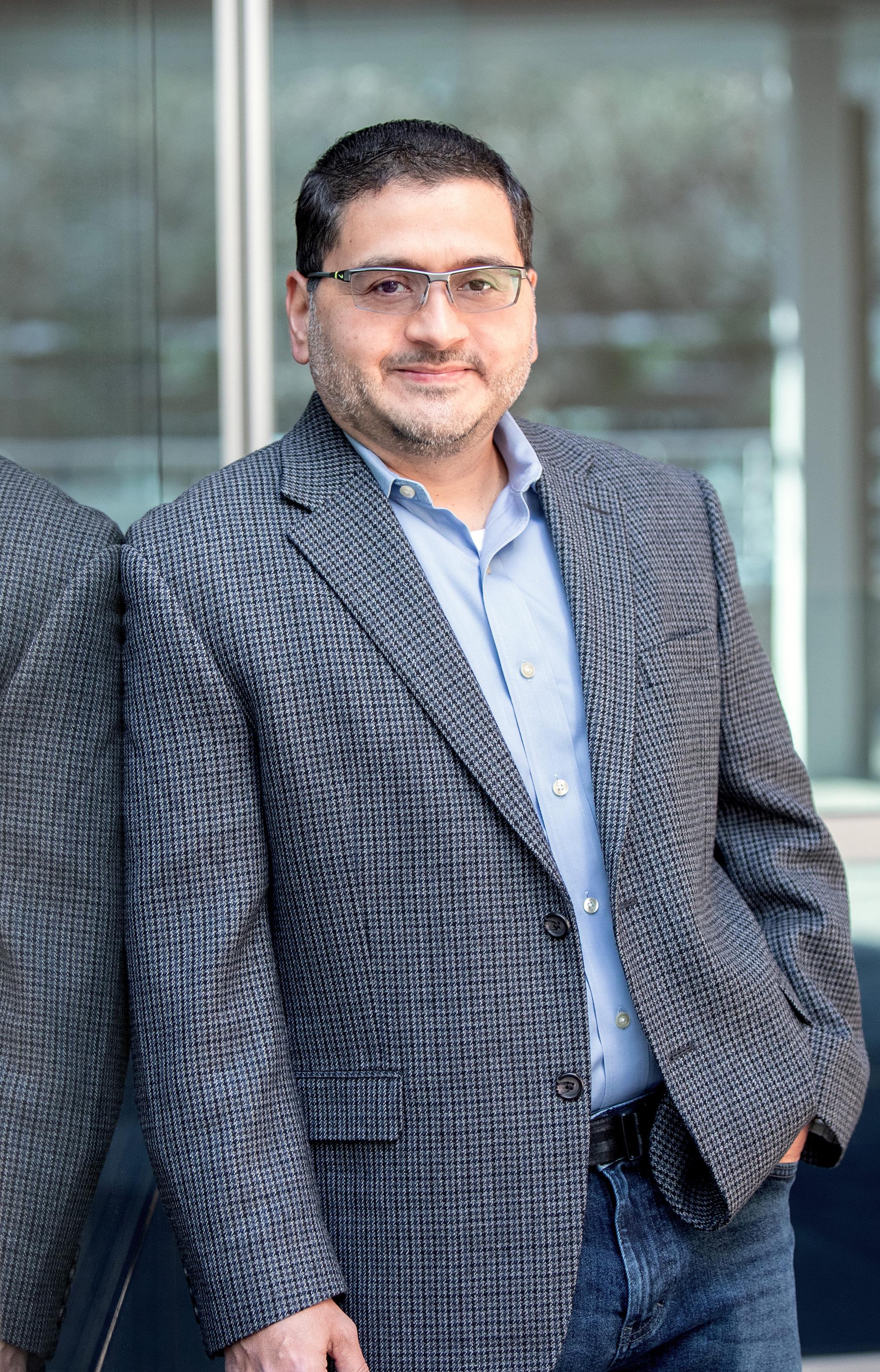
Chris Franco Director of Treasury National Instruments
LIKE A CIRCUS HIGH-WIRE ACROBAT, CHRIS
Franco knows the value of precision and balance. The director of treasury for National Instruments, a publicly traded multinational company, Franco and his team must produce accurate, timely financial reporting while striving to streamline and simplify processes.
This proved especially challenging following recent amendments to the US Generally Accepted Accounting Principles’ (GAAP) standards for revenue recognition, which heavily affected software companies like National Instruments, a producer of software-defined automated-test and automated-measurement systems. The GAAP amendments pushed Franco and his team to change, streamline, and automate the company’s processes to account for and report revenue.
“They basically took multiple rules-based pieces of accounting guidance and boiled it down to one very conceptual-based standard,” Franco explains. “My team is responsible for ensuring compliance and effective outcomes, and as the business changes, our processes need to change along with it.”
To ensure there were no delays or errors in reporting, Franco and his team worked closely with business leaders, external auditors, and systems groups.
“When the governing body makes such a transformational change, you have to make sure you fully understand how it might impact the company,” he says. “For example, if it changes how you recognize revenue and you’re incentivizing employees on US GAAP-based revenue, you have to adjust incentive plans and account for whatever impact it will have on the company as a whole.”
Franco first joined National Instruments in 2005 as director of internal audit. This came after he earned his master’s in professional accounting from the University of Texas at Austin in 1995 and gained experience as an audit manager at Ernst & Young and as a controller at a tech startup.
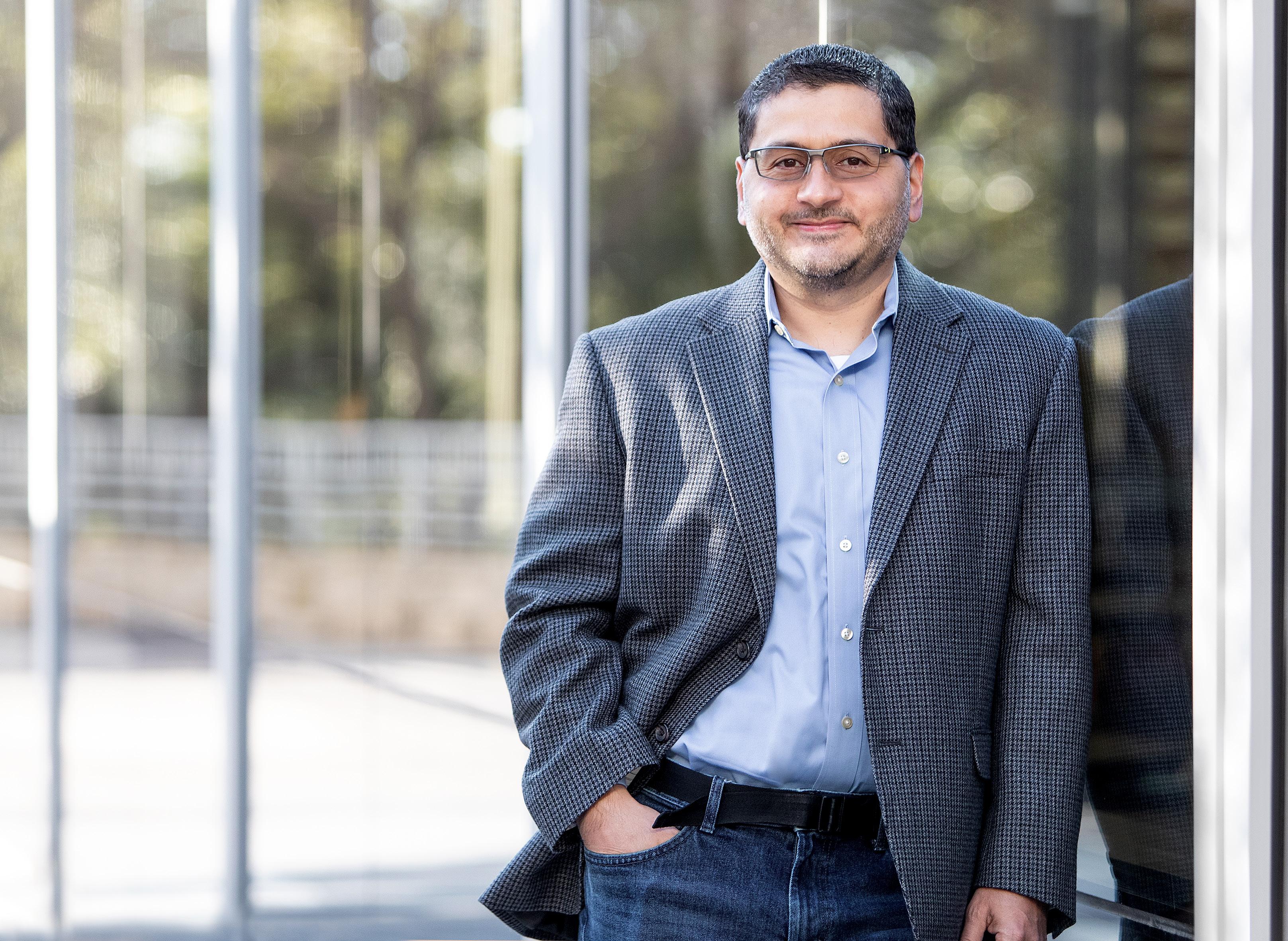
In his current role, Franco oversees the company’s external reporting, revenue accounting, and treasury teams. His group is central to National Instruments’ success: They manage a sizable amount of the company’s working capital, about $740 million, of which about $531 million is cash and cash-equivalents and a portfolio of about $240 million of worldwide trade receivables.
For a publicly traded company such as National Instruments, financial reporting can have real implications for the bottom line.
“We have to disclose information to our key investor community, and when that
“Investors will pay a higher multiple for companies that produce timely, accurate reporting—it’s simply a function of being a well-run business.”
disclosure is clean and not subject to amendments, it influences investor confidence, which facilitates our ability to raise capital or increase the company’s value in the marketplace,” he explains. “In theory, investors will pay a higher multiple for companies that produce timely, accurate reporting—it’s simply a function of being a well-run business.”
Streamlining complex processes is hard enough, but the challenge becomes even more difficult when you’re working within a large international company which does business in more than fifty countries. “As the company and the complexity of our systems continue to grow, we’re working toward achieving more consistent practices across the globe,” Franco says. “As finance administrators, we need to make sure we can support the business consistently across the globe.”
One of the ways his team is doing this is by designating one global point of accountability, instead of having team members report to a regional controller. “We’re aligning where some of those resources are reporting to make sure we can focus and continue to drive consistency and efficiency,” he notes.
One tactic Franco uses to keep his team motivated and thinking strategically about the big picture is to help them connect the dots between the work they do every day and the success of the company.
“This helps them take a different perspective of the work we do and feel more invested in it,” he says. “We’re having a real impact on National Instruments’ success, and not just processing transactions to no particular end.”
He also believes strongly in the value of delegating work and helping his reports develop their skills. “As a leader, it’s important to delegate, because if you keep the hard stuff for yourself, then your team doesn’t get to participate and learn from those experiences,” he says. At the same time, he says it’s important to stay involved in the day-to-day. “Otherwise you won’t know what’s going on and won’t be able to step in and help if needed—it’s a balancing act, one you learn through experience.”
Franco strives to be trusted as a subject matter expert whom his team and the company’s leaders feel comfortable approaching with questions or ideas. He accomplishes this through involvement in his team’s work, and through classroom training sessions on technical matters.
“When you’re operating within a global company, it’s important to be well-versed on the impact of doing transactions in over forty different currencies,” he says. “You need to prove you have the technical knowledge but can also get things done and think strategically.
Great leaders inspire us

Leaders engage us, allow us to take chances, unite our voices, and focus our ideas into action.
Wells Fargo salutes Chris Franco, Director, Treasury and SEC Reporting at National Instruments for his leadership, passion, and commitment to excellence.
Wells Fargo is proud to call National Instruments a client, and is appreciative of the strong working relationship that we have come to enjoy with Chris and the National Instruments team over the years.
Carlos Hernandez is the ubiquitous leader of BHGE’s LatAm operations—he meets with everyone, from leadership to operations staff—because, as he’s learned,
“the only way to be successful is for your people to be successful.”
BY JACOB WINCHESTER
EACH TIME YOU VISIT A GAS STATION, YOU SWIPE A CARD, FILL THE tank, and speed off within a matter of minutes to your next destination. For all of that to happen so fluidly, a vast network of processes spanning companies, countries, and cultures has to occur behind the scenes. That’s where Carlos Hernandez and his teams at Baker Hughes, a GE company, come in.
“As a business, we might service oilfields for our clients or provide certain products like drill bits or equipment for the refining process, but we’re also involved in logistics and transportation,” Hernandezsays. “We cover the whole spectrum from downstream to midstream to upstream.”
As director of operations supply chain for BHGE’s Latin America region, Hernandez’ role entails overseeing each section of the multipronged support infrastructure created and maintained by the global petroleum products and services giant. His team also designs, implements, and—painstakingly—reviews strategic support initiatives which help the company accomplish its many supply chain endeavors in the most efficient and successful manner possible.
“Within the company, we have multiple support functions, including procurement, sourcing, international logistics, billing, collections, and everything related to facilities,” he says. “My position is the converging point of all of the support functions for Latin America, and our focus is to make sure all of the goals for each support function are aligned.”
To accomplish this seemingly Herculean task, Hernandez—who grew up in Venezuela; worked in Mexico, Brazil, and China; and
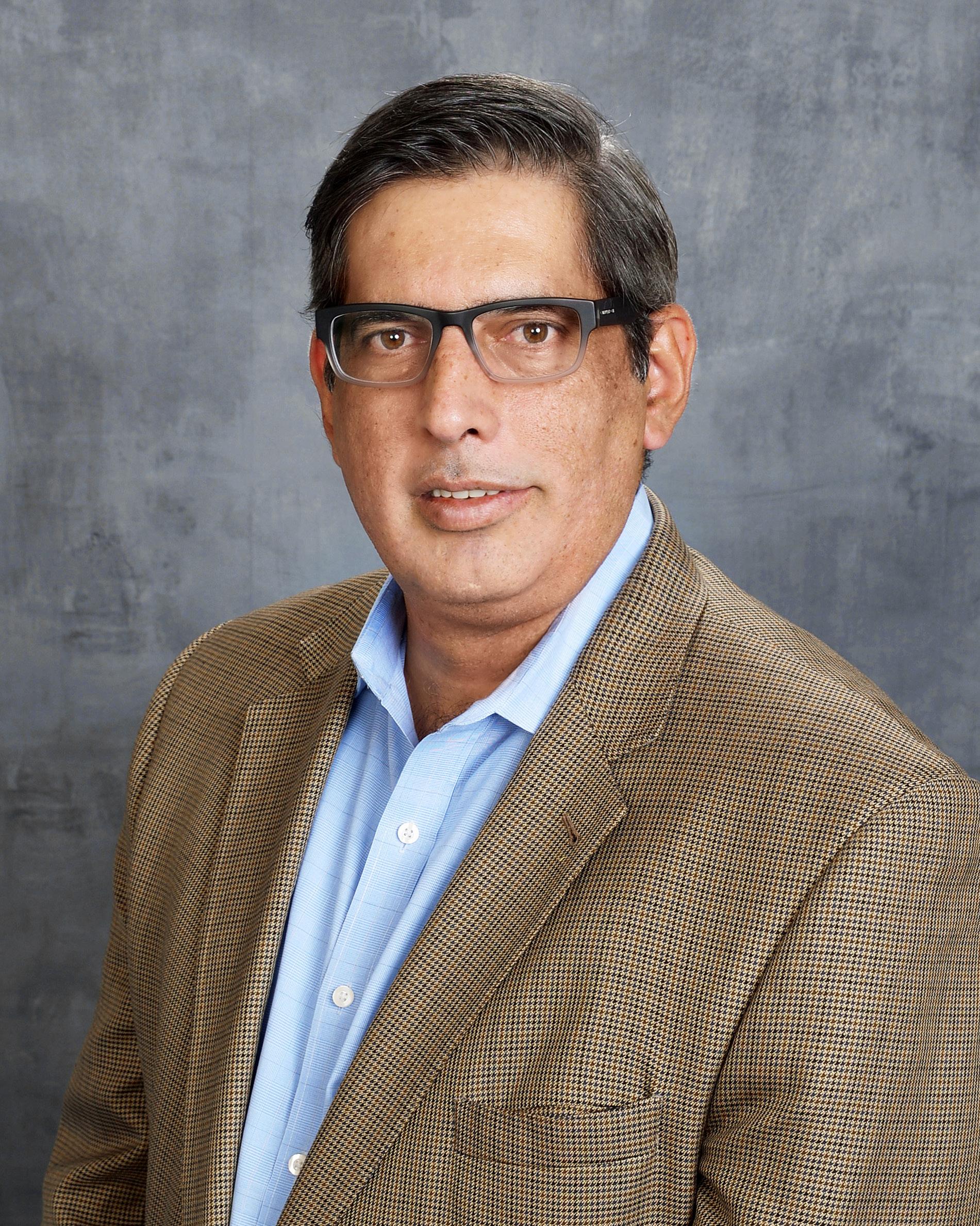
Carlos Hernandez | Director of Operations Supply Chain | Baker Hughes, a GE company

COMMUNITY ACTIVISM
Since 1996, BHGE’s parent company, GE, has operated the Hispanic Forum, a professional development, mentoring, and affinity-networking forum, which aims to support, connect, develop, and inspire the organization’s Hispanic employees as well as the communities in which they reside.
Hernandez has been actively involved with the forum for the last year. “Any employee can join, including non-Hispanic employees, and I’ve had a great time working with them. Last December, we organized a toy drive and then delivered the toys to kids at Sagrado Corazón in Houston over the holidays.”
For the past three years, he has also been actively involved with the Language Proficiency Assessment Committee for his child’s school. “Here in Texas, our community has many young students who are bilingual or English learners. As the parents, we go through individual children in the program and assess their progress during a ten-hour meeting at the end of each year. The goal is to ensure that they’re proficient in English by the sixth grade. It’s been very rewarding to see them progress and to see how much the teachers like to do this program with them.”
today is based in Houston, Texas—finds himself tapping into the valuable leadership lessons and principles he gleaned while working in a variety of cultures throughout his nearly three decades with BHGE.
One of the most important lessons came early in his career. “Originally, I graduated with a degree in aeronautical engineering, but a few months after graduating I took a job as a field engineer for Baker Hughes in Venezuela,” he recalls. “One day, my supervisor was giving me a performance review and he told me something I would never forget. He said, ‘The only way for you to be successful is for your people to be successful.’ That’s something that I’ve applied during my entire career.”
In service of this philosophy, Hernandez works to maintain open communication with all levels of the company, which he says boosts morale and ultimately guides his teams toward successful outcomes. “Because we have so many people in our organization, I try to talk not only with my leaders, but also with the people they supervise,” he says. “This is because sometimes people in support roles might not believe that they’re important. In actuality, they’re very important. Just letting them know that can be very effective.”
Another fundamental principle Hernandez relies on is the notion of accountability, which he says transcends personal responsibility and entails encouraging his teams to look out for each other in order to ensure processes happen as planned. “When people feel accountable for something, and know that they are actually making something happen, they feel good,” he says. “They’re able to feel useful and not like they are a robot. If something goes wrong, I also try to keep my people informed of the bigger picture in the interest of accountability, so they are able to know the impact on all levels.” Doing this helps ensure that his employees will gain the necessary experience to grow into more advanced roles within the company like he was able to do.
Perhaps the most valuable lesson Hernandez learned was the ability to fluently operate within the cultures of different countries.
“Living in Mexico, Brazil, and China taught me a lot about different cultures. For example, it taught me how much a certain culture might push back against things or accept things,” he says. “The more you know about a culture, the more your affinity level and empathy with them will grow as well.”
“Sometimes people in support roles might not believe that they’re important. In actuality, they’re very important. Just letting them know that can be very effective.”
Those experiences also taught him the range of expectations when operating in the business world of other countries. In Mexico, for example, he says there is often an expectation that the company and its executive leadership maintain frequent, personalized contact with the clients. In Brazil, however, he says it can be very different: “They tend to want the relationship to be very professional and streamlined. Generally, [Brazilians] want to communicate only about practical matters of the deal and only if you’re bringing business value to the table.”
As Hernandez looks back over his career with BHGE, he says that he has found it’s important to be open to learning lessons when they are presented and to go beyond merely stepping outside of your comfort zone.
“Stepping outside of your comfort zone means you go somewhere, do something, and then come back to your comfort zone,” he says. “What’s more important is actually expanding your comfort zone so you can continue to be creative, take on challenges, and grow.”




SLKone is a Management Consulting Firm bridging Strategy, Leadership, and Knowledge to build lasting bespoke solutions.
Klemm aklemm@slkone.com (770) 856-5546
We asked the business leaders in this issue:
What word makes you cringe?
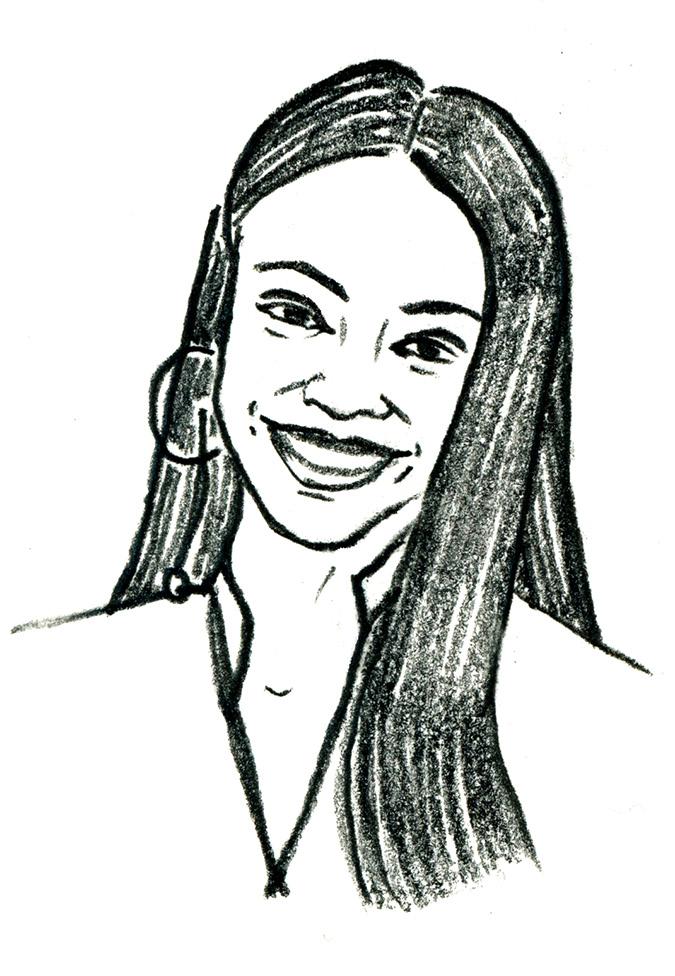
“‘Alien’ when referring to foreigners, as if people are from another planet. The word is loaded with connotations of criminals or illegals.”
—CLAUDIA
ROMO EDELMAN, WE ARE ALL HUMAN, P80
“I loathe words like ‘ethnic.’ The word ‘ethnicity’ only exists when you are compared to something that is supposed to be the traditional mold.”
—ZOE SALDANA, BESE, P46, P90


“I call it the D-word: diversity. I don’t even use it. To me, it’s a dirty word, and my clients make fun of me because I practically throw a mine on the wall every time they say it. Because unfortunately the D-word gets translated as the good and right thing to do, the corporate/social responsible thing, the HR thing—and it’s much, much bigger than that. It’s about inclusion, it’s about business growth.”
—LILIANA GIL VALLETTA, CULTUREINTEL AND CIEN+, P58
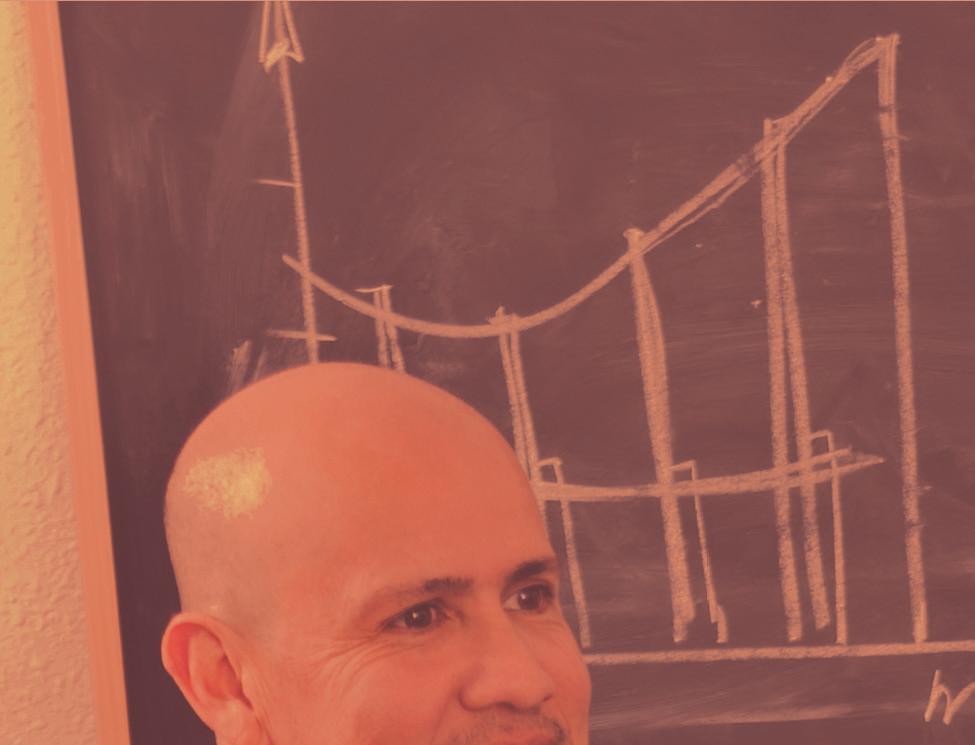
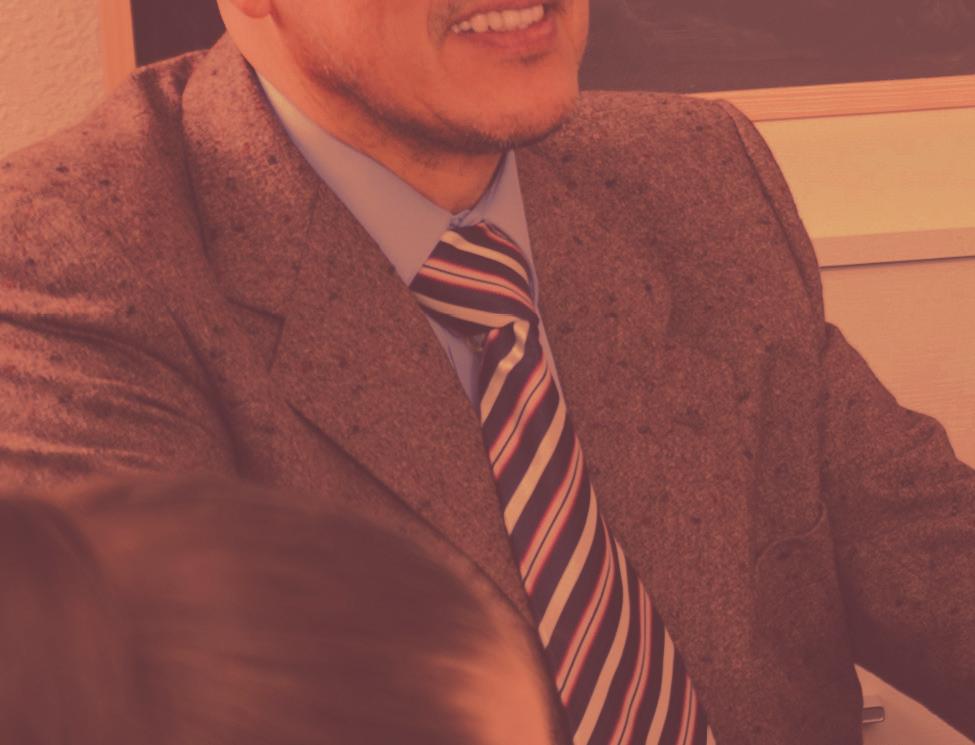





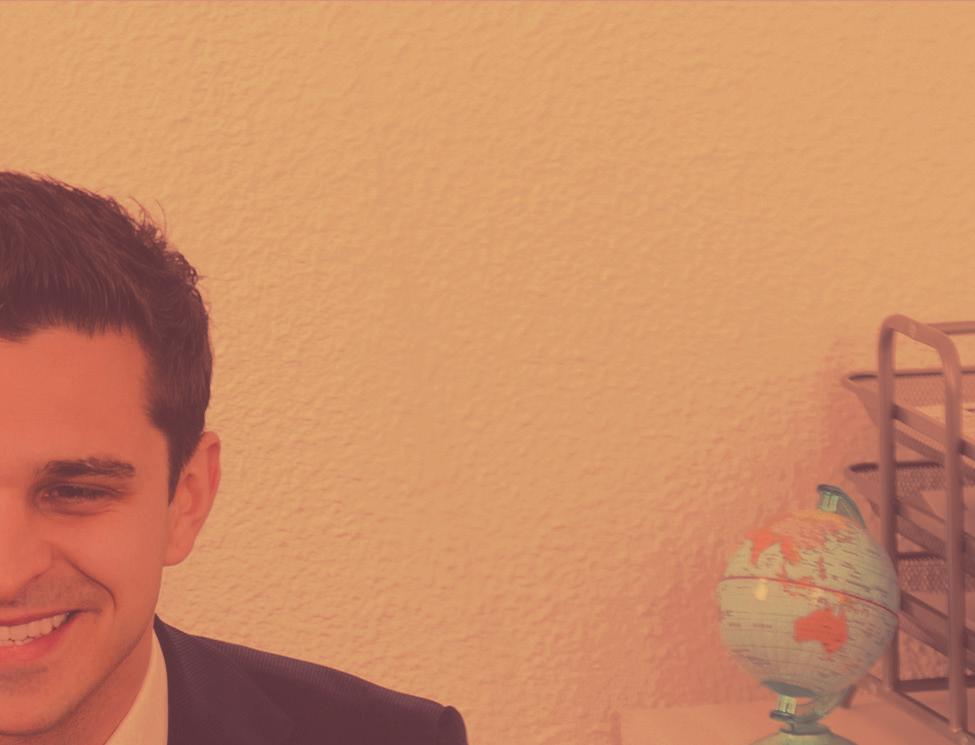

Latinos drive the American economy, partner with our programs



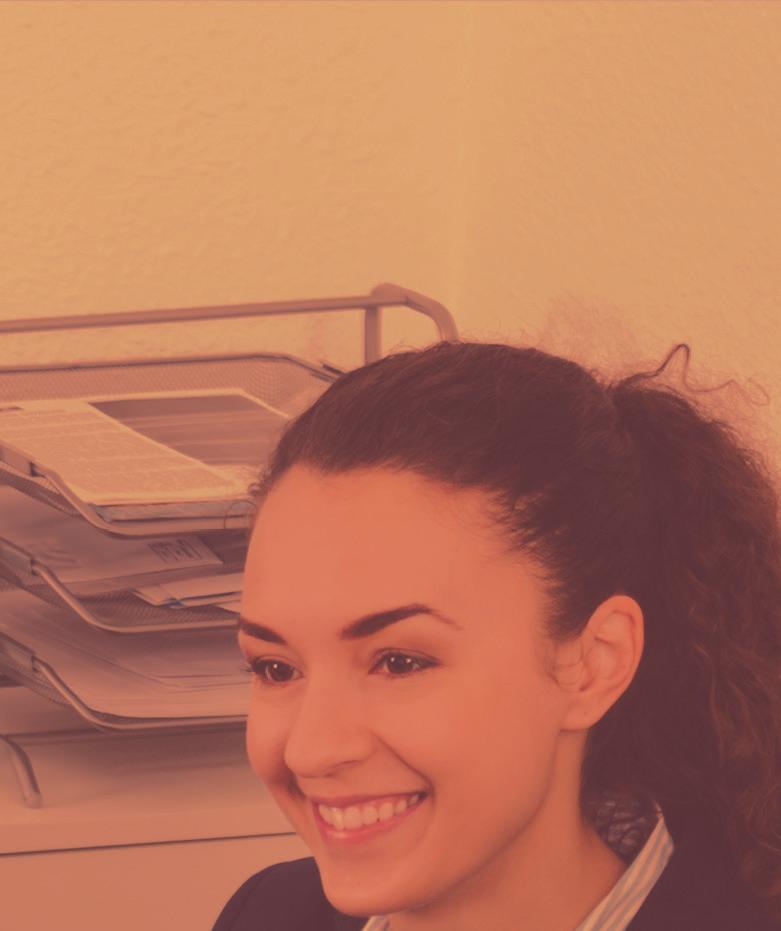
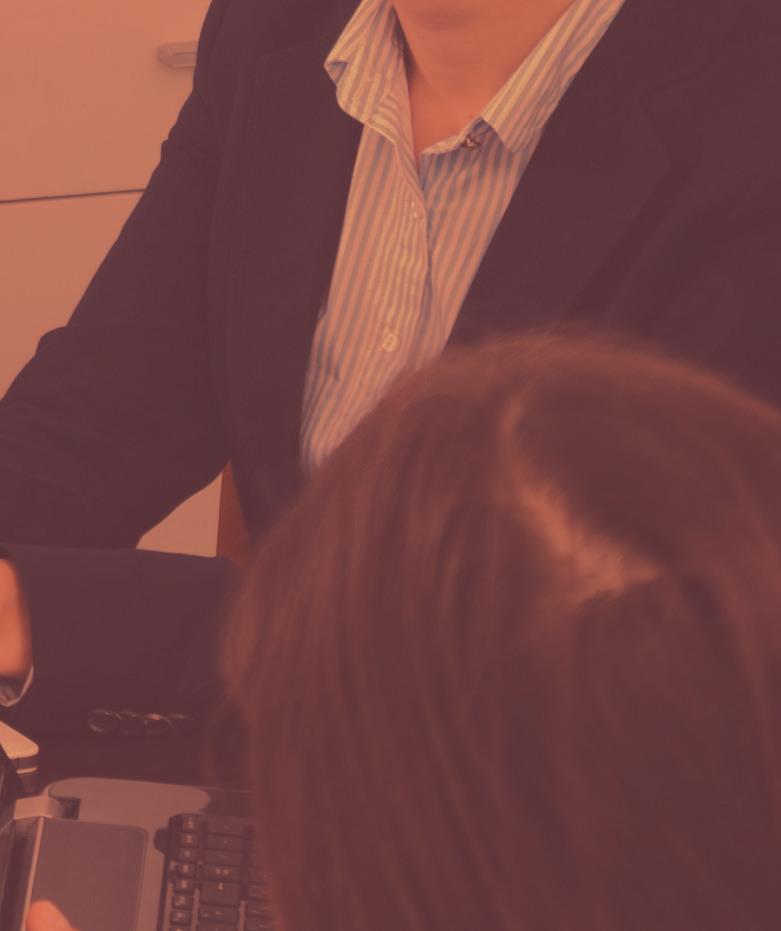


The Latino Business Action Network (LBAN) is a 501(c)(3) nonprofit which collaborates with Stanford Graduate School of Business to champion the Stanford Latino Entrepreneurship Initiative (SLEI). Through the annual State of Latino Entrepreneurship report, SLEI research produces a deep dive into U.S. Latino-owned business through the largest national survey of Latino business owners. 43% of Latino business owners are millennials according to the 2016 report that reached a national sample of over 4,900 Latino-owned businesses. LBAN’s goal is to double the number of $10+ million, $100+ million, $1+ billion Latino-owned businesses by 2025 and to unleash the economic earning potential of Latino entrepreneurs by understanding and addressing structural impediments to scaling their businesses.

